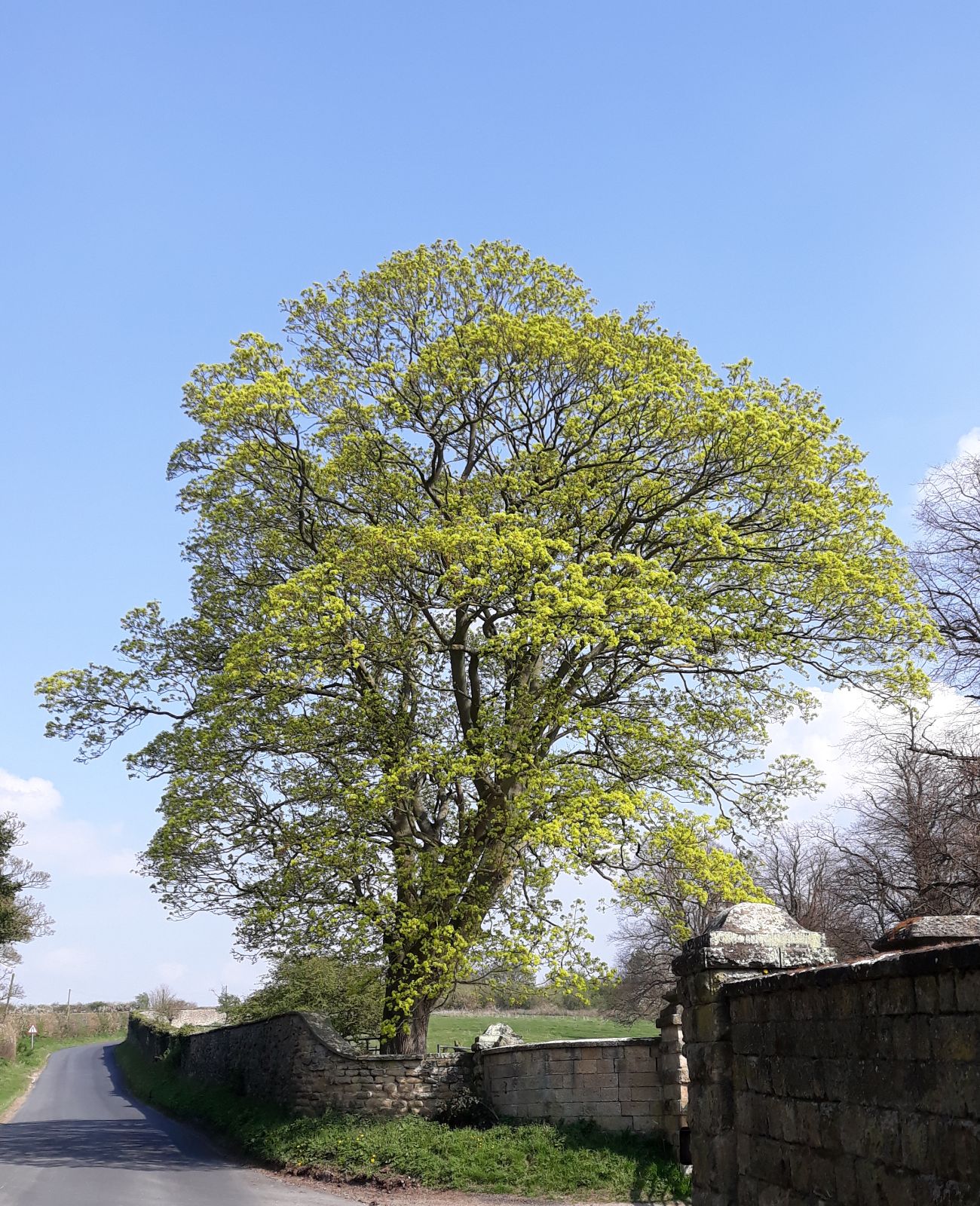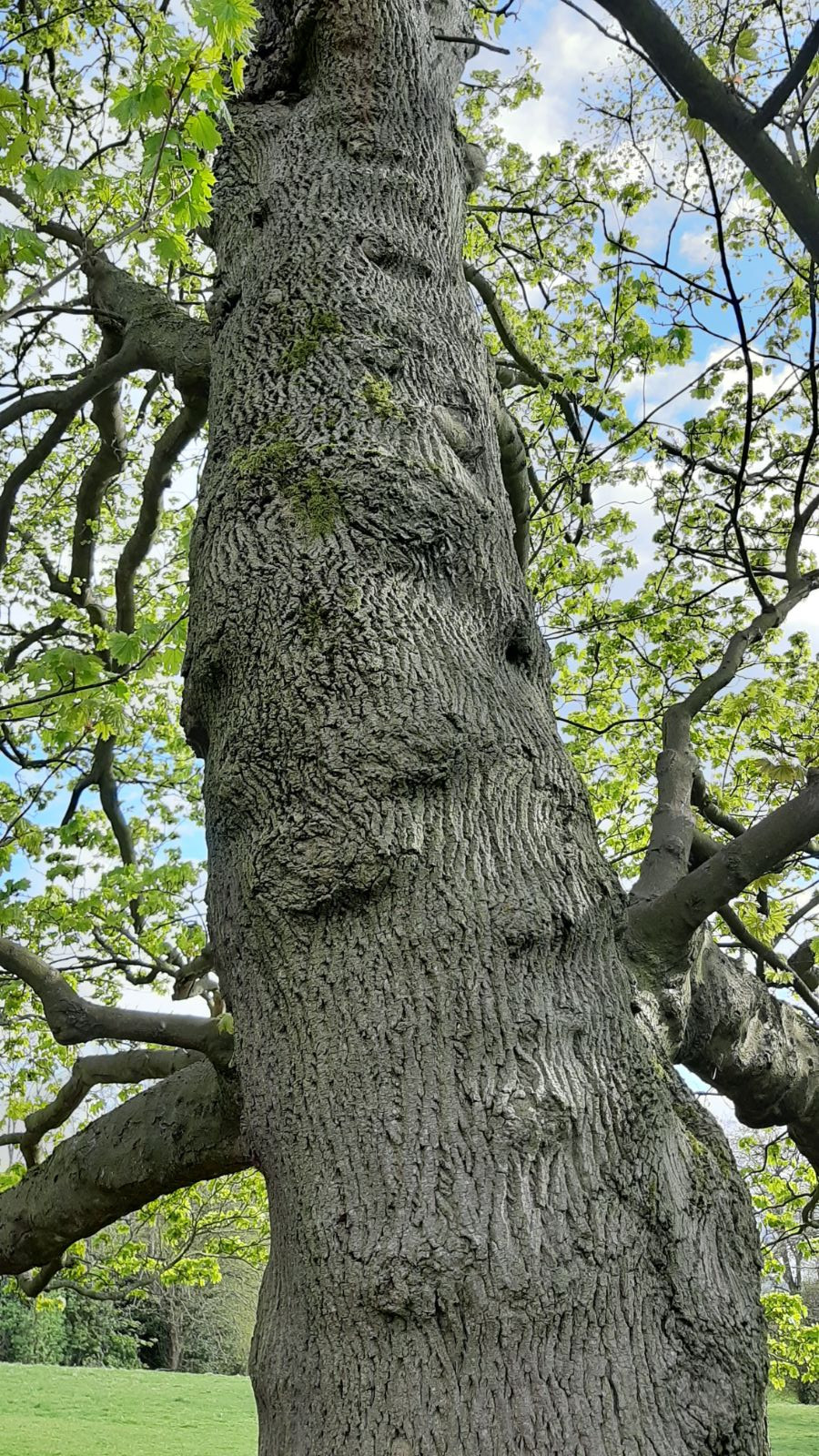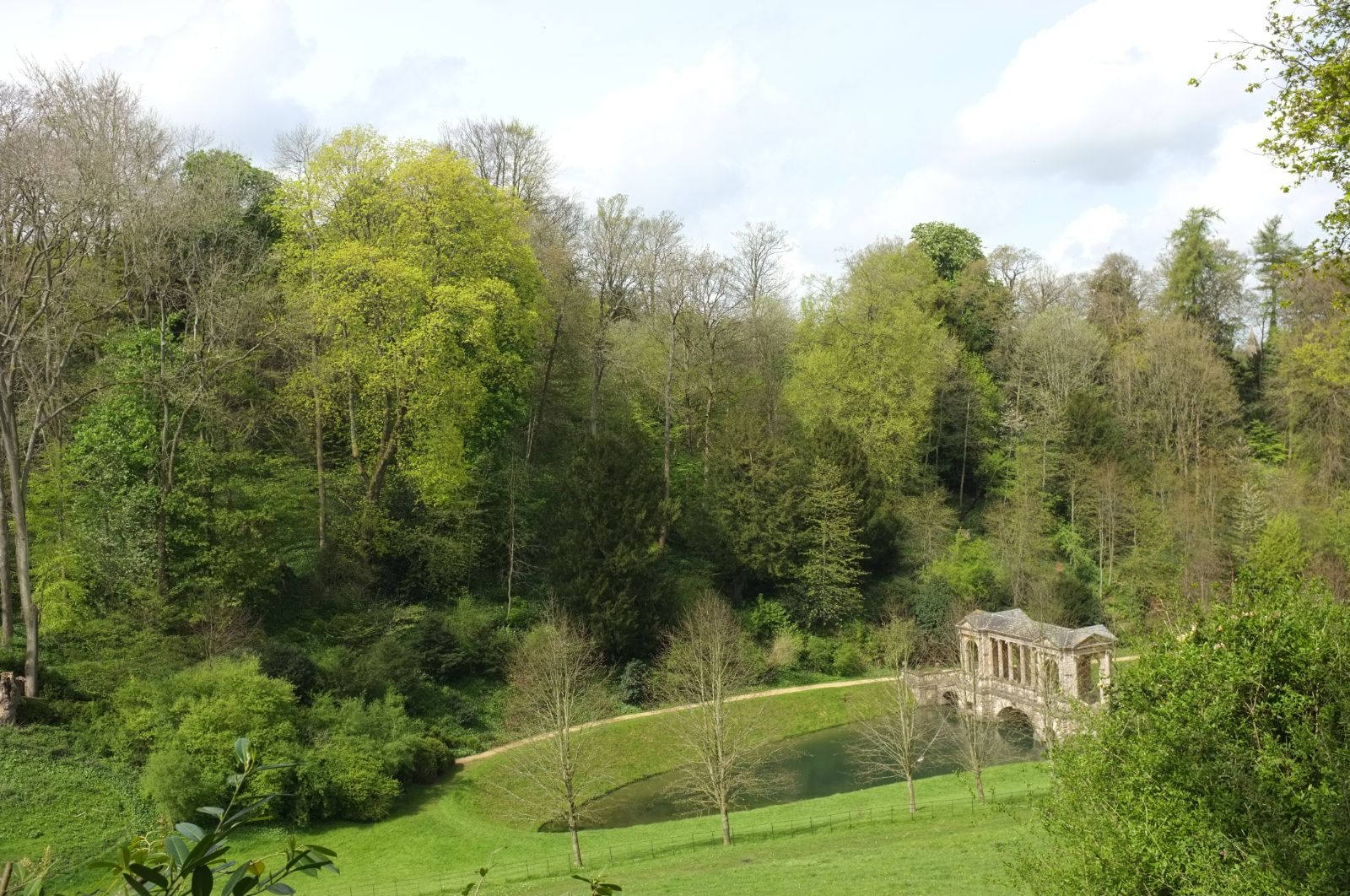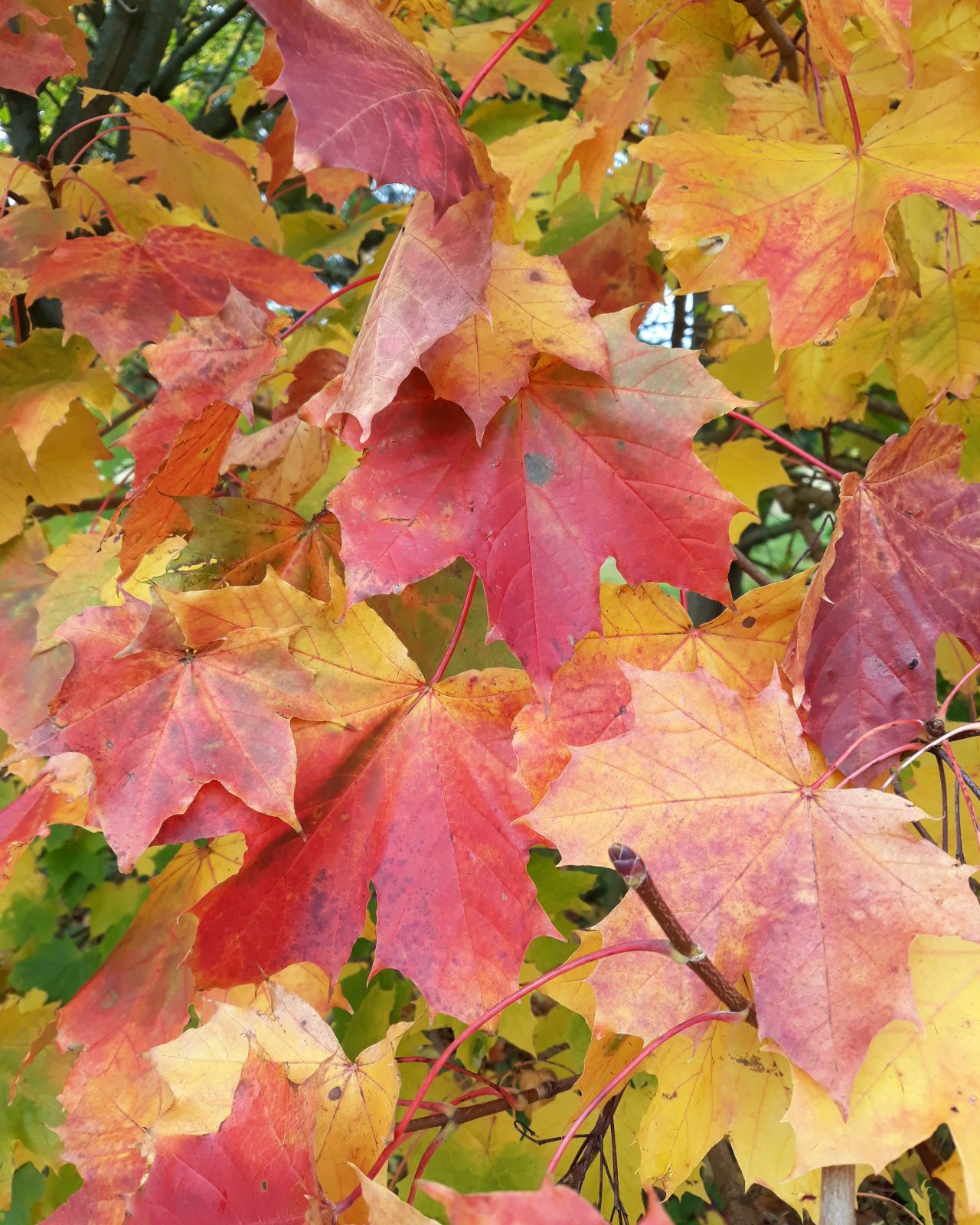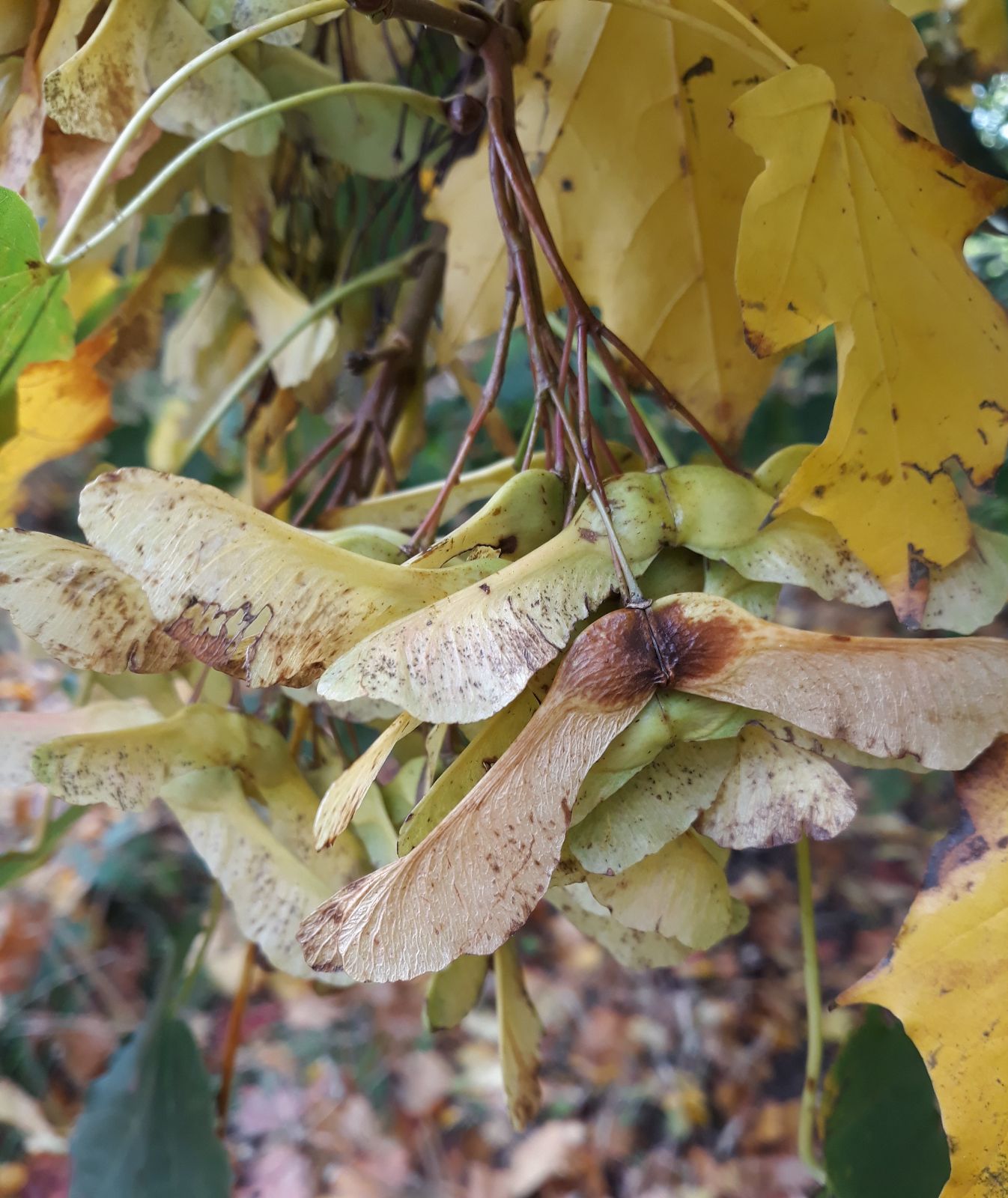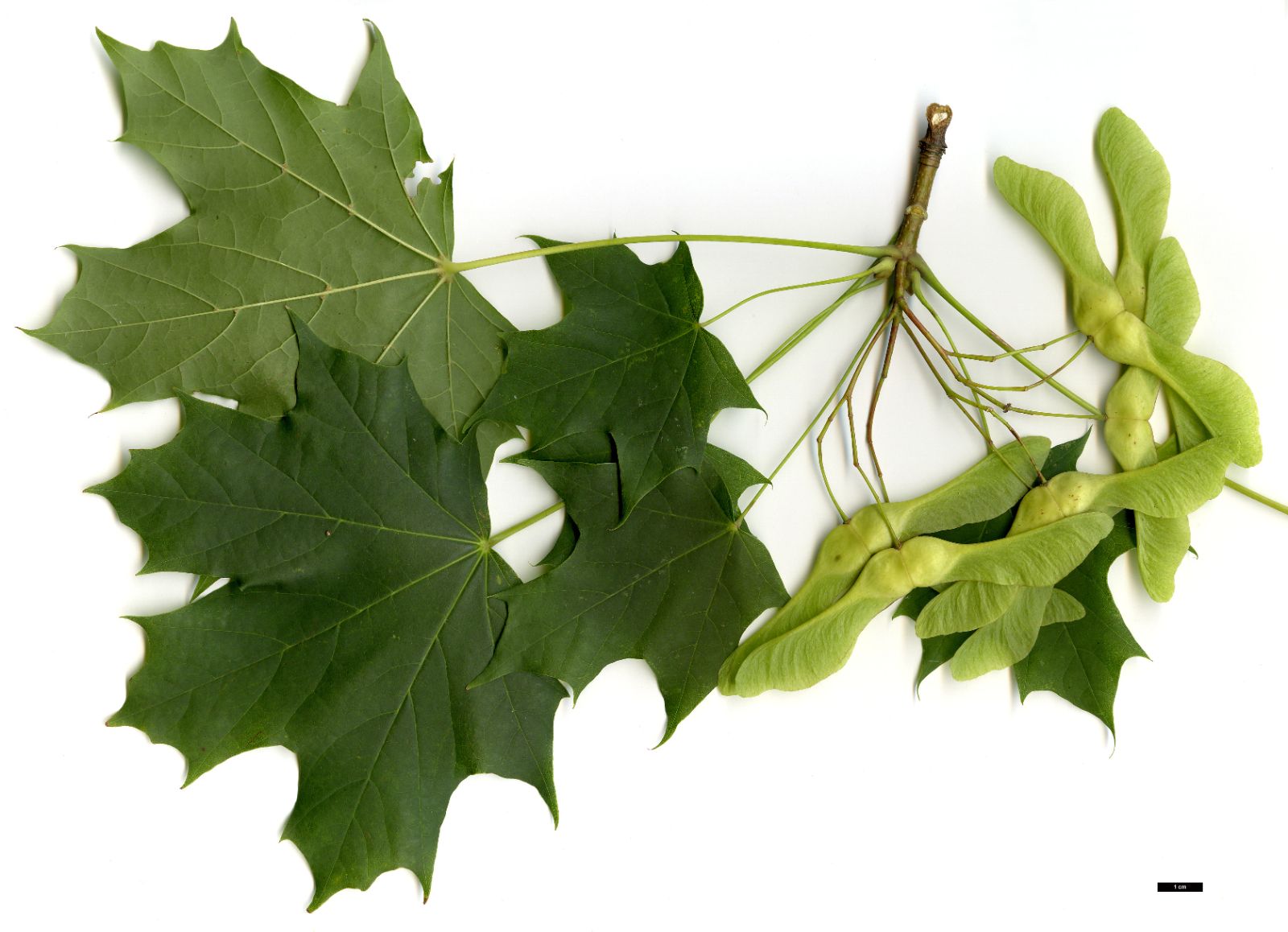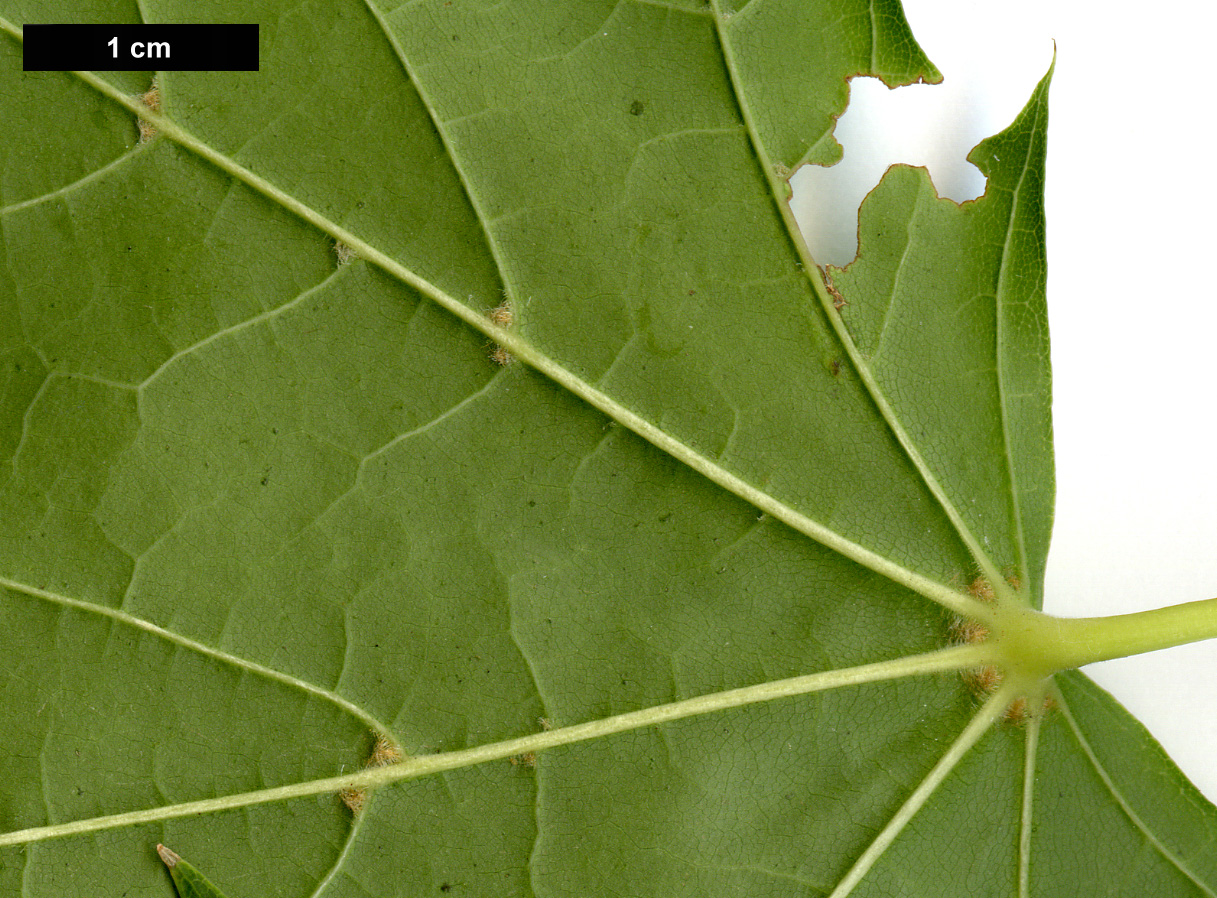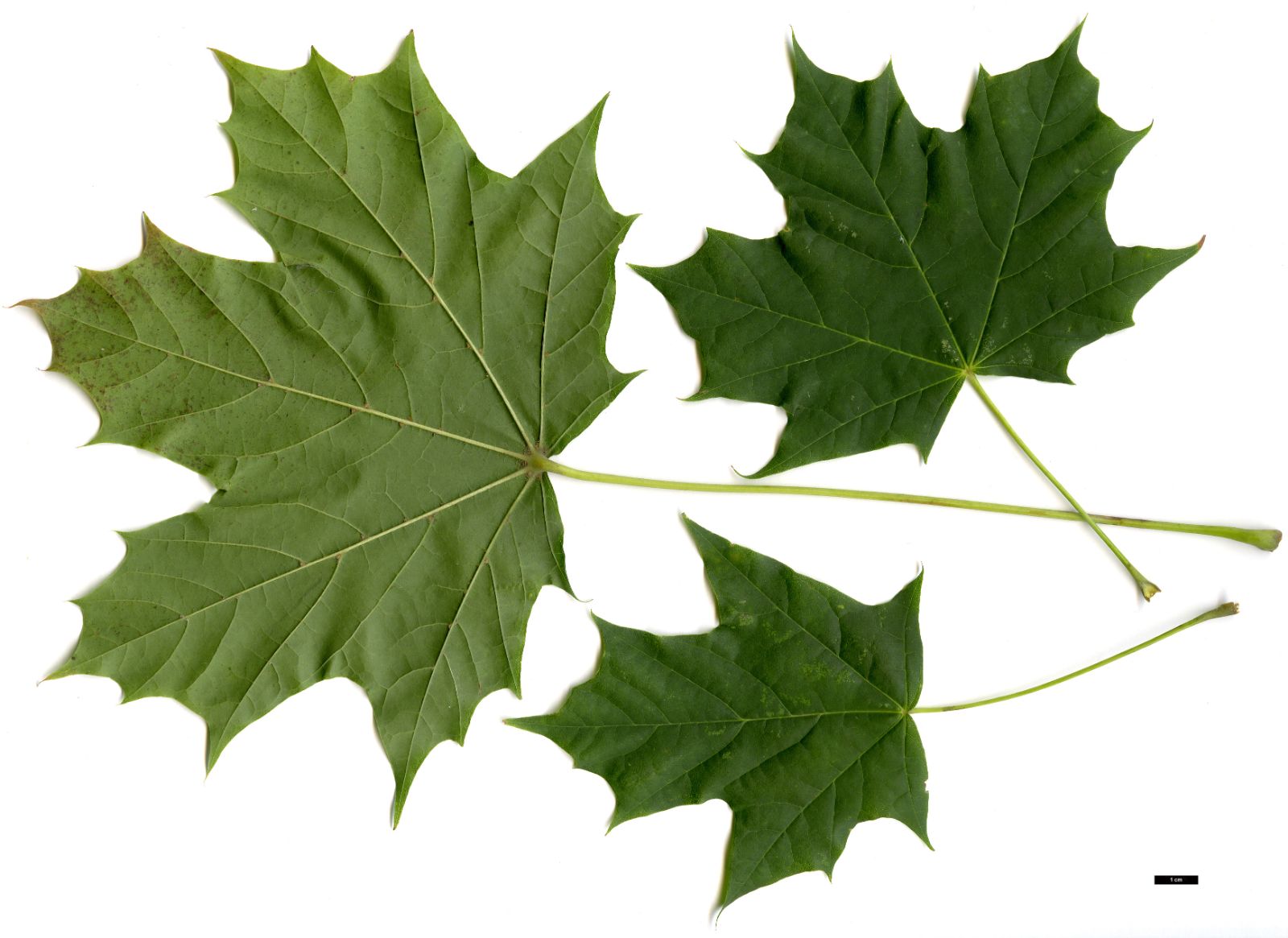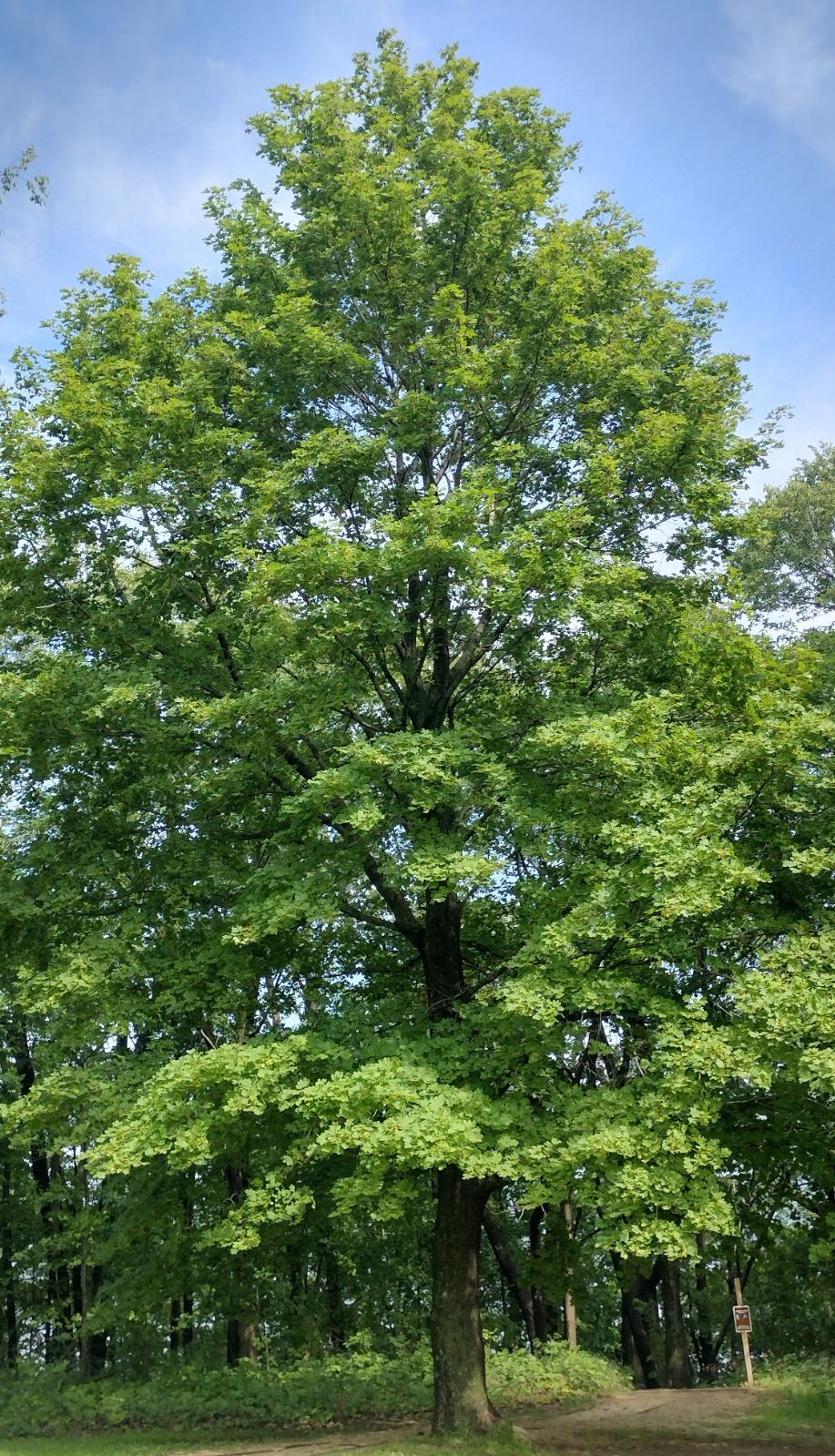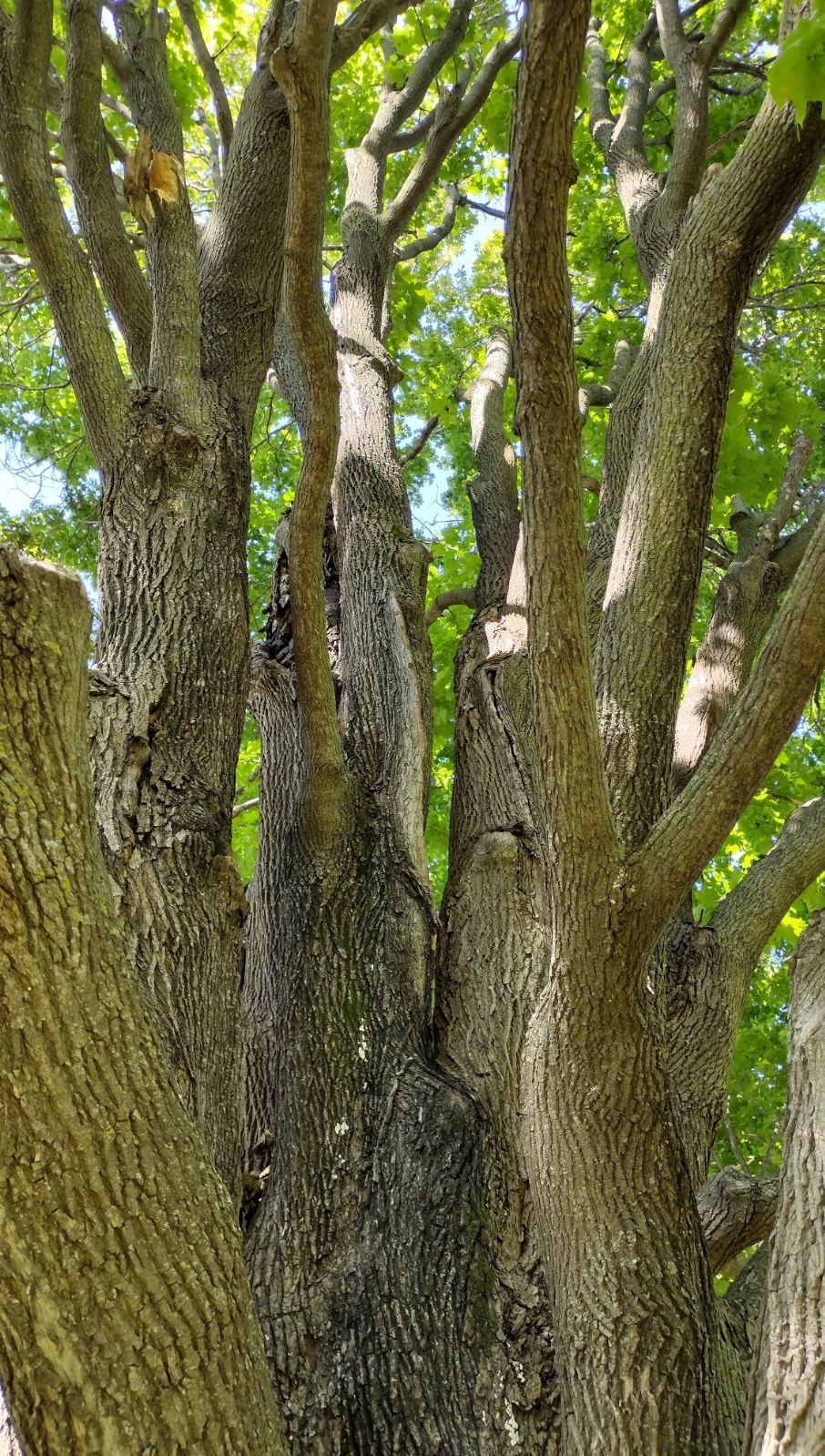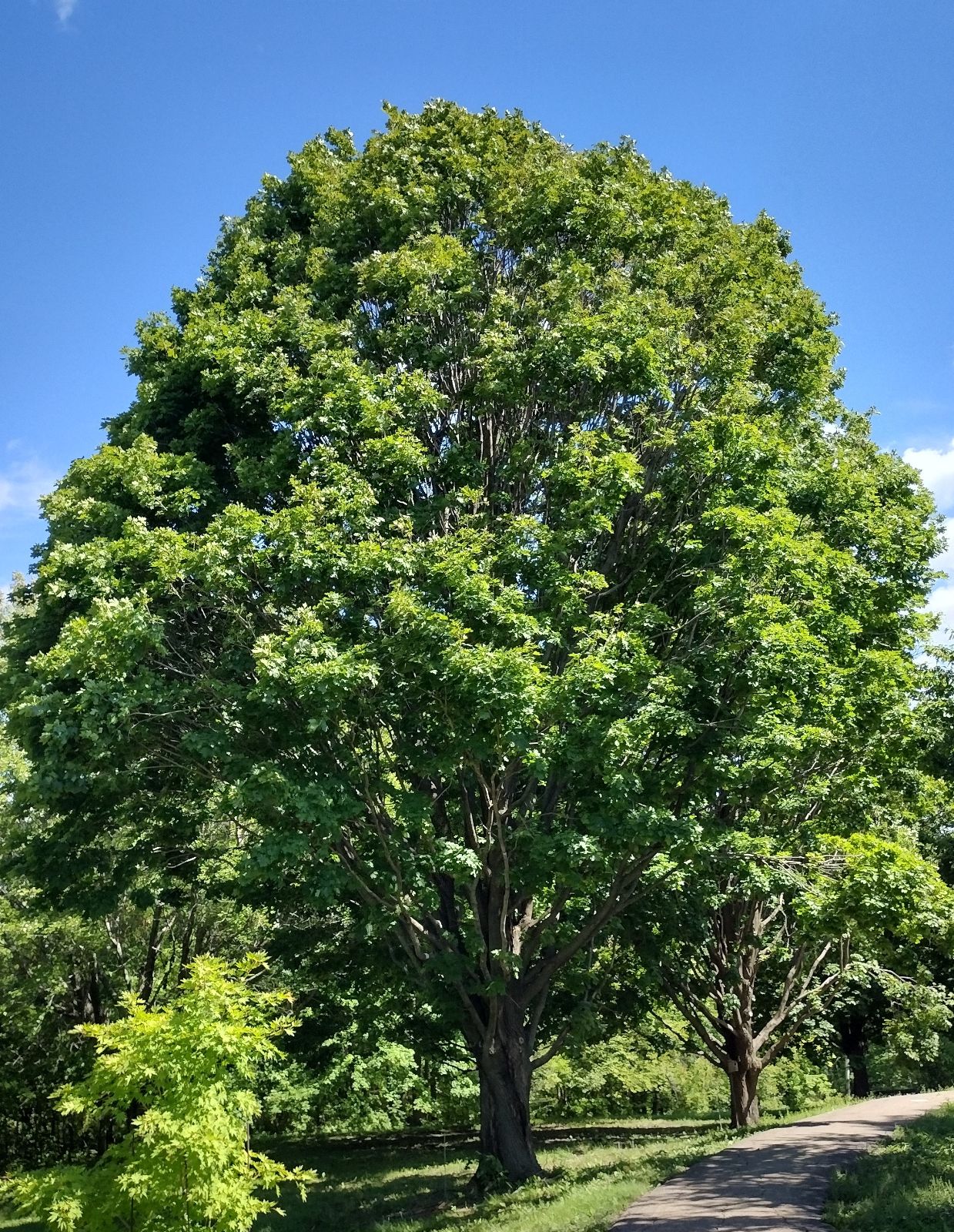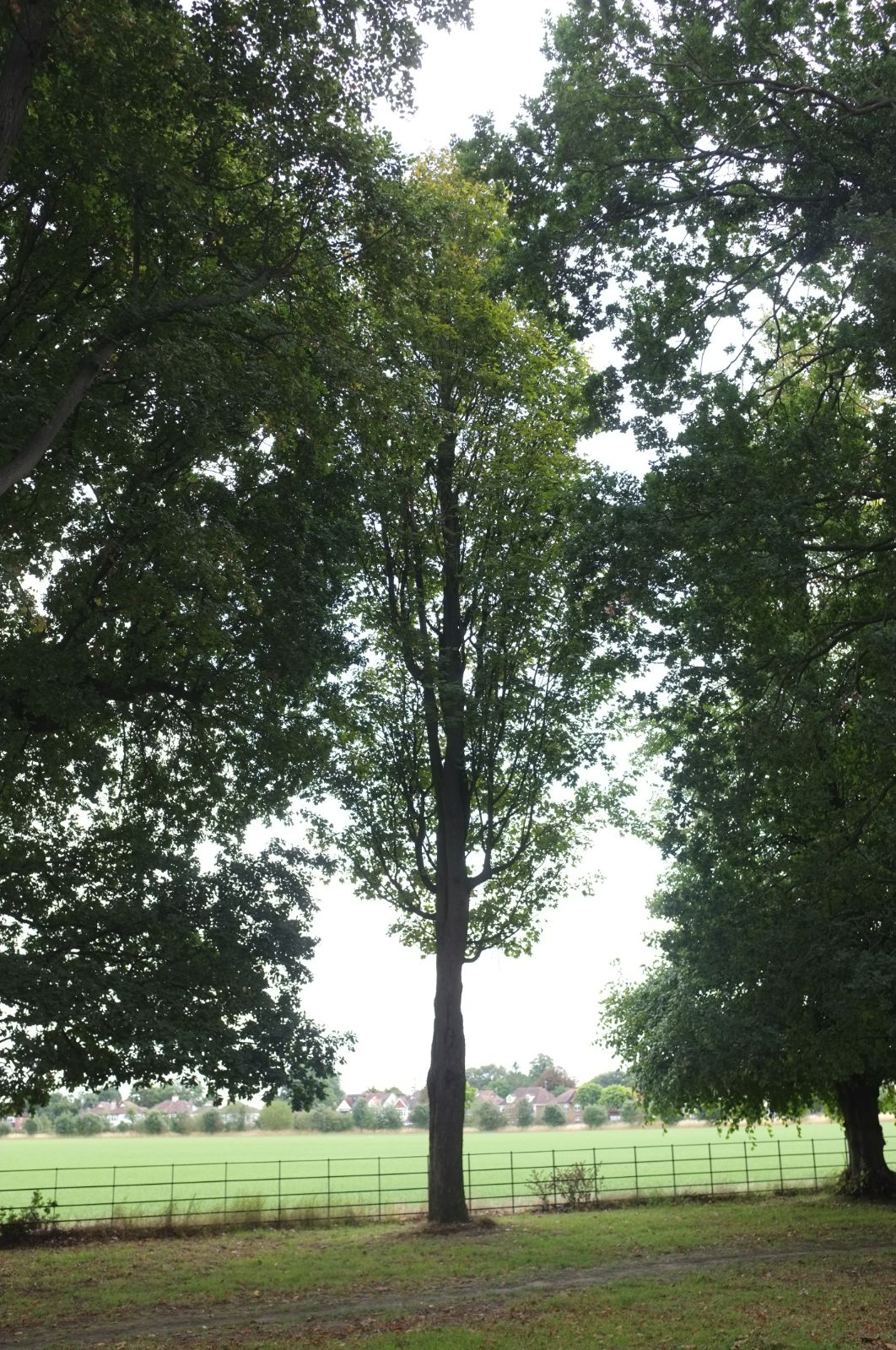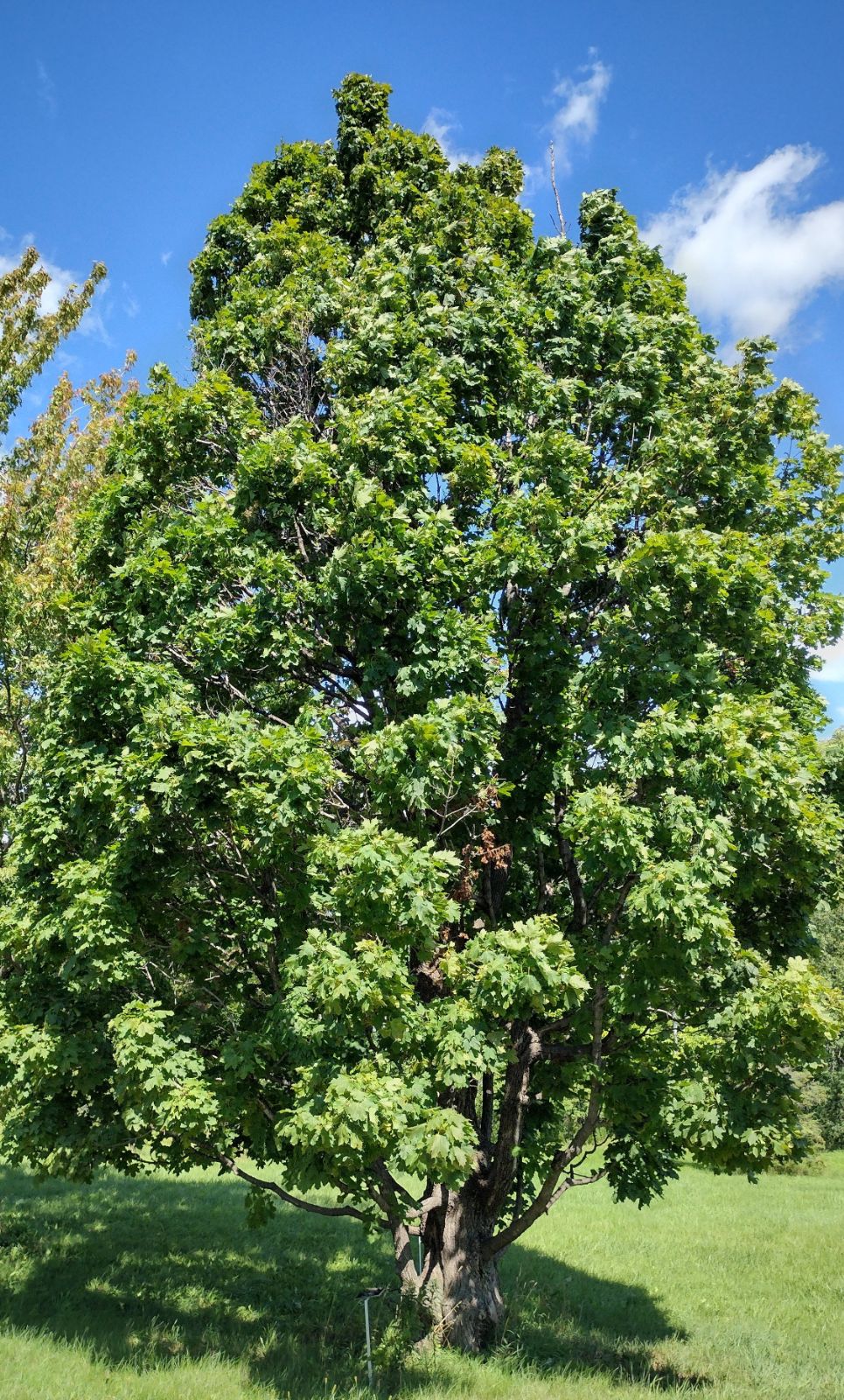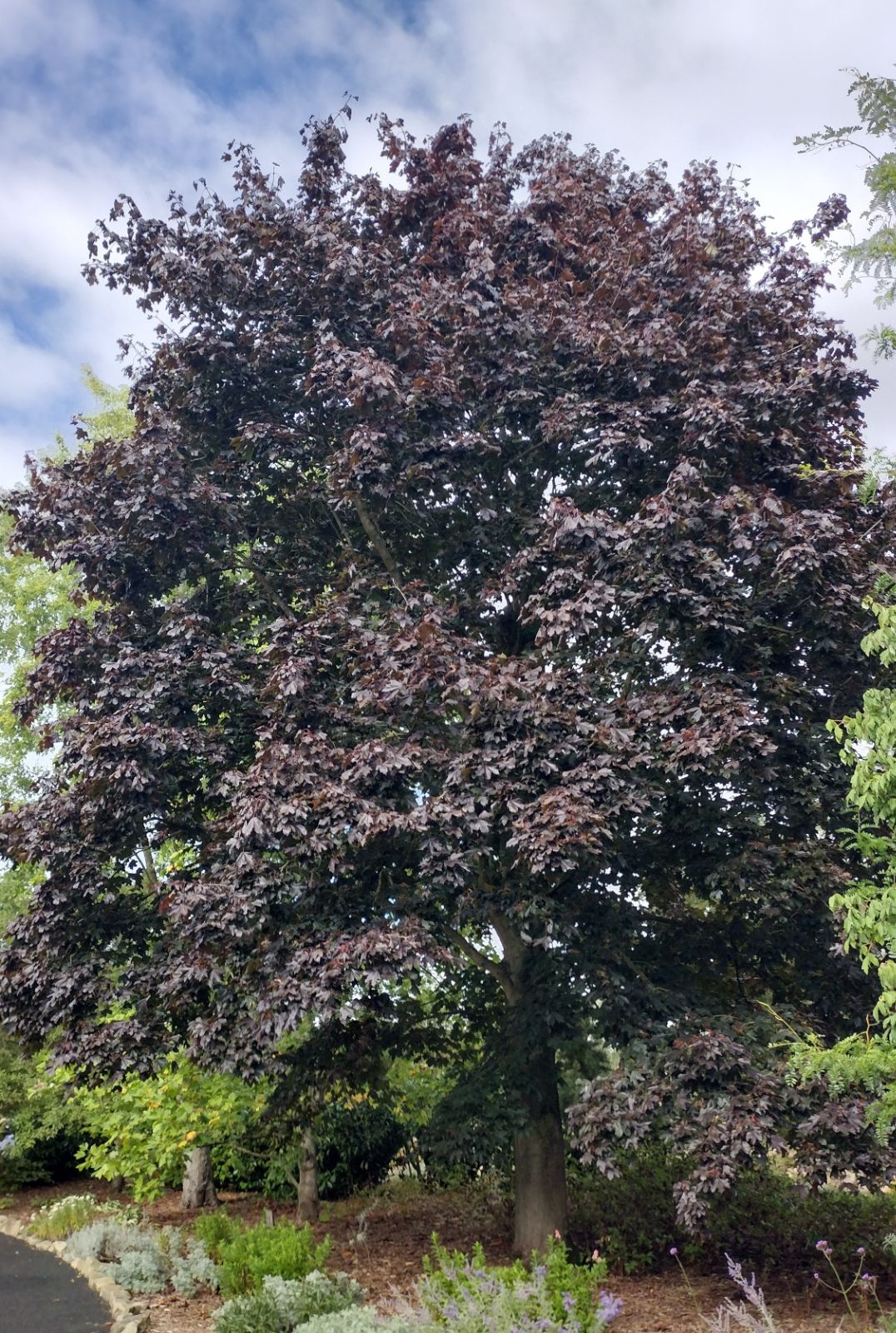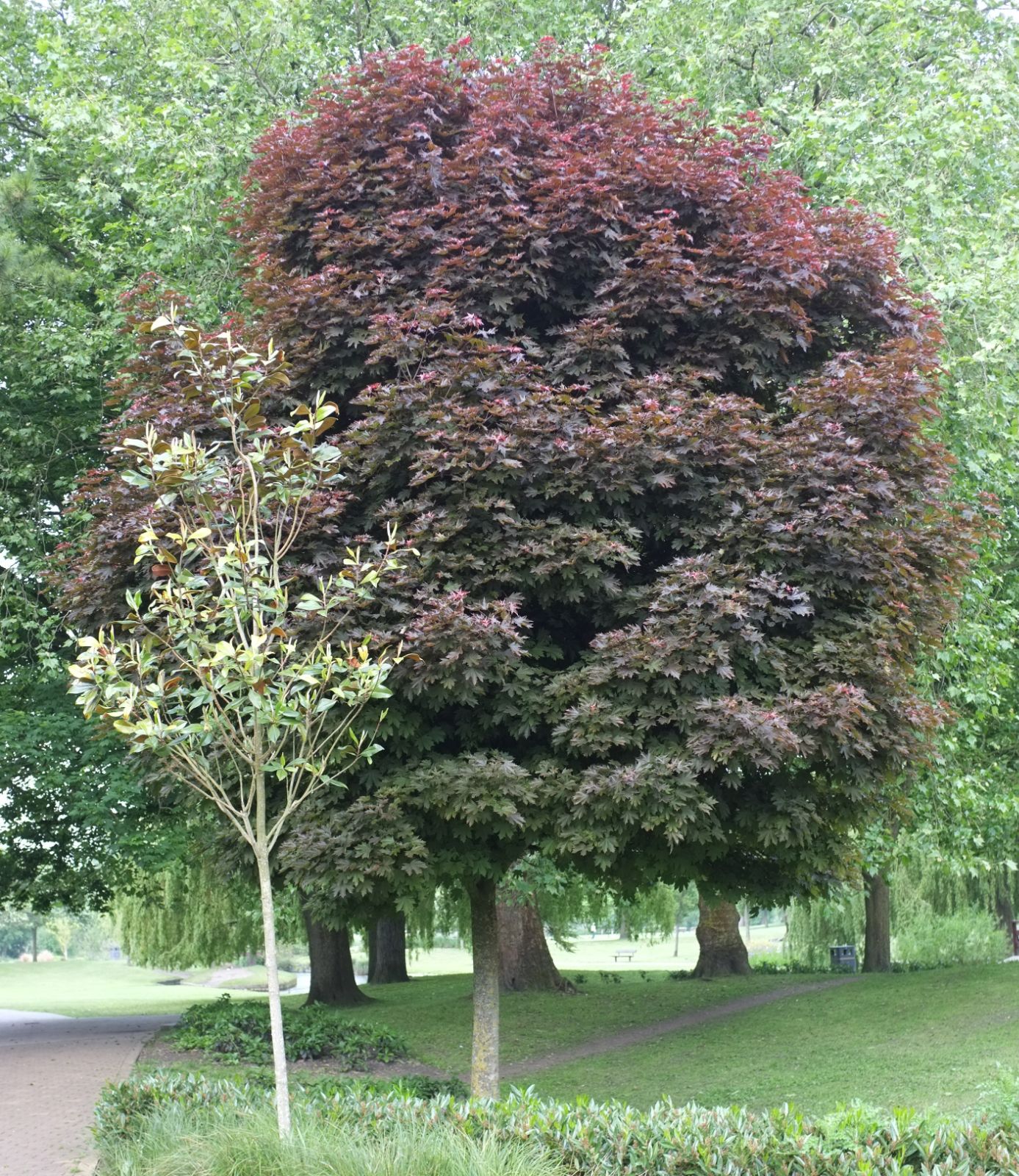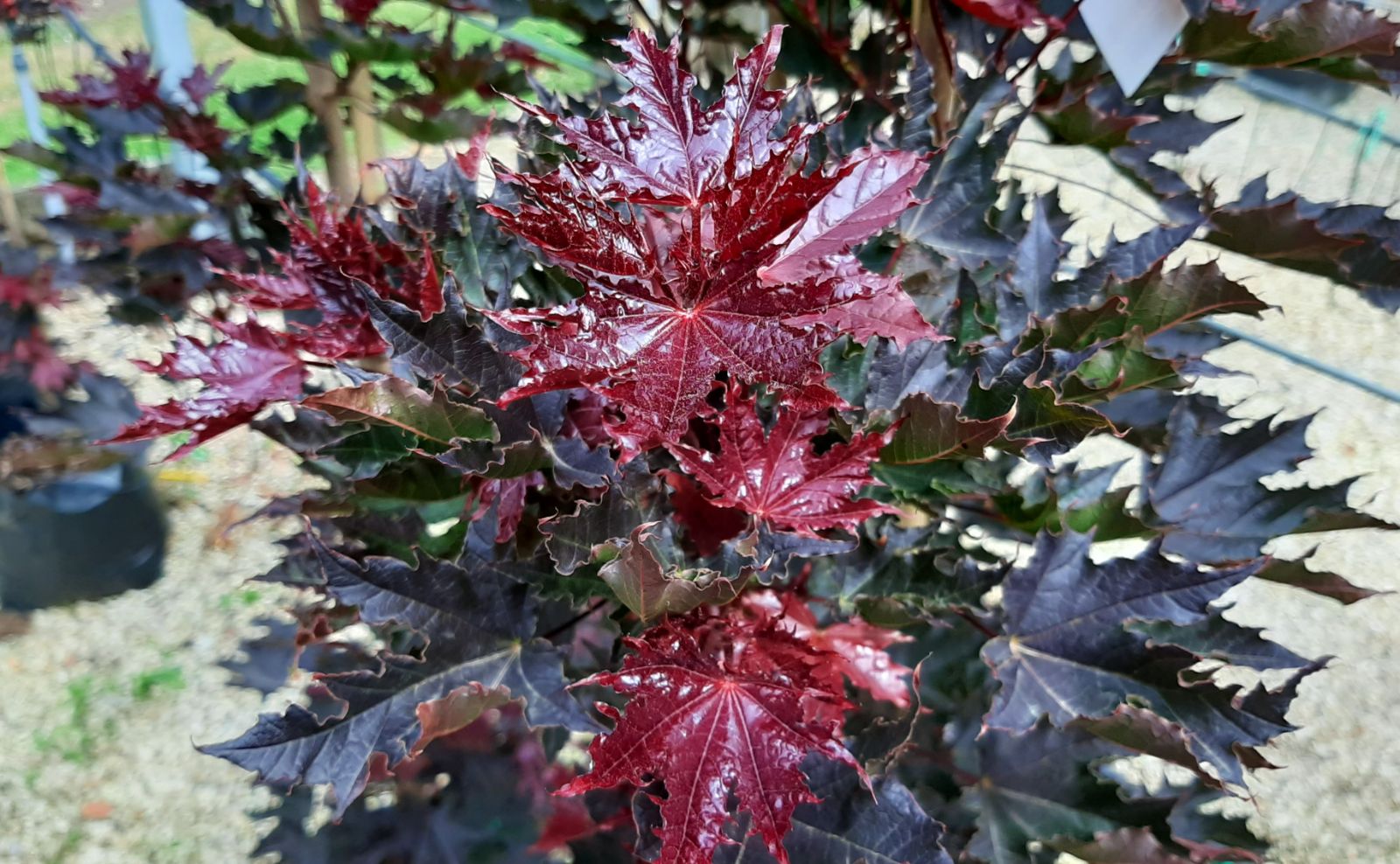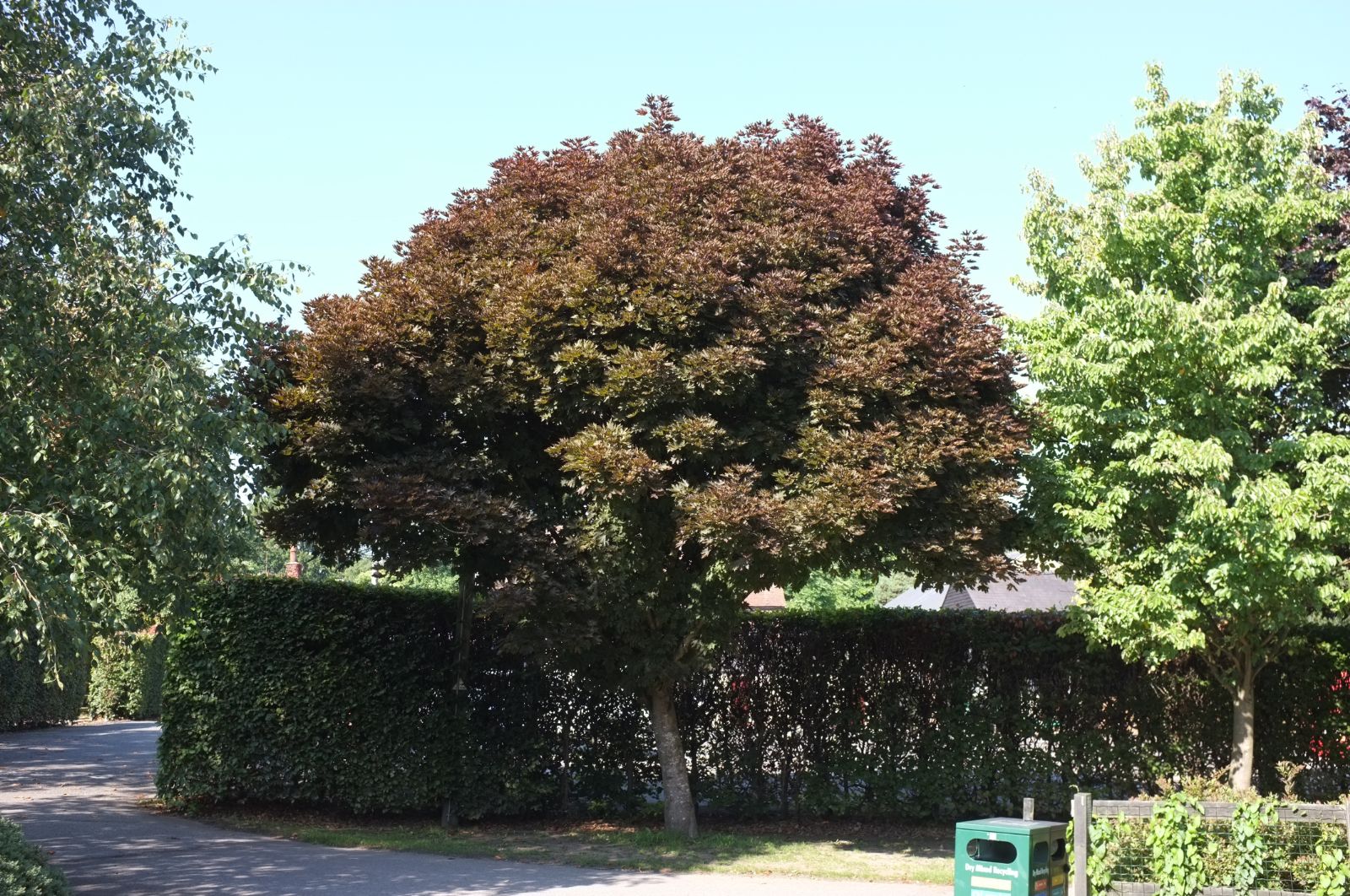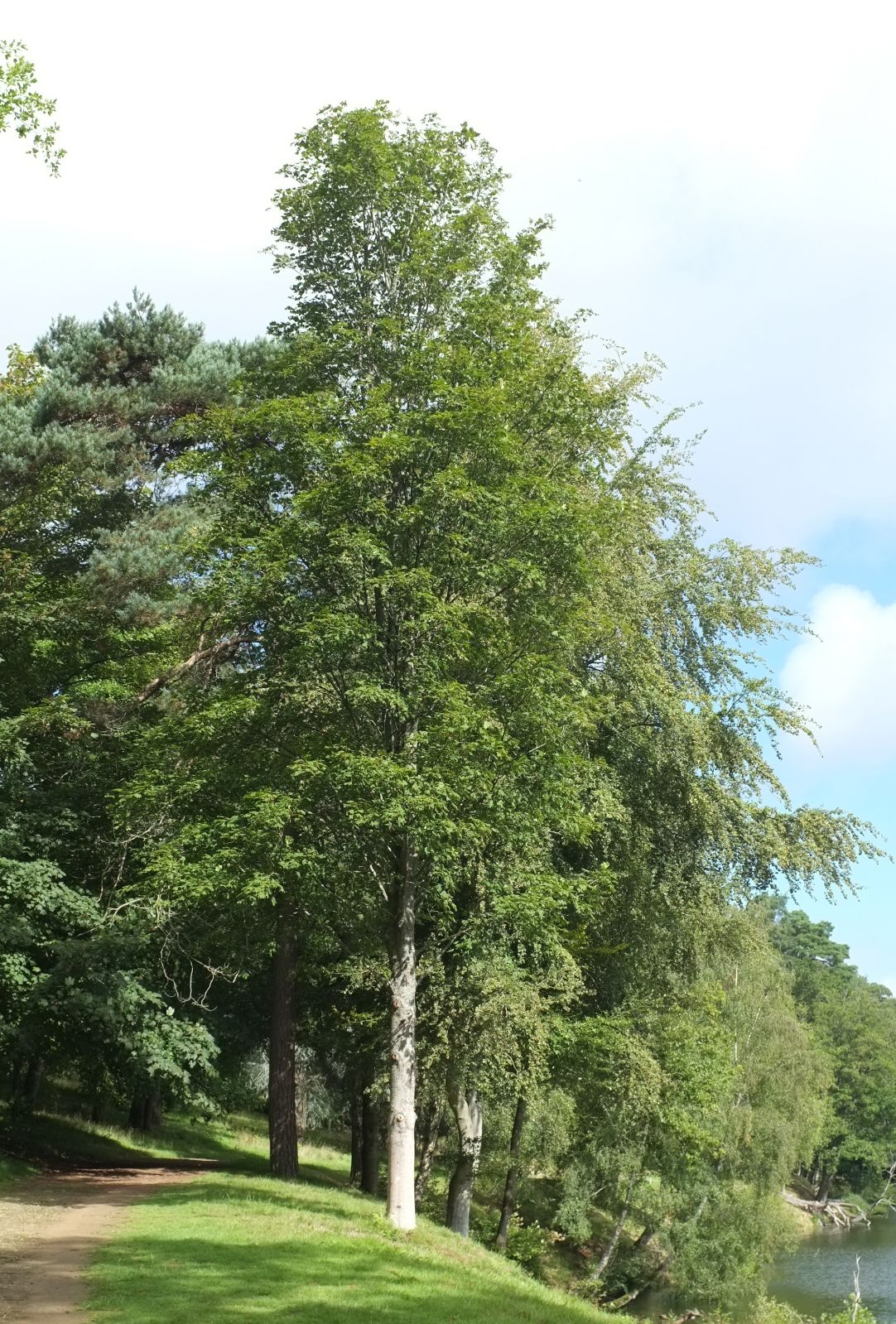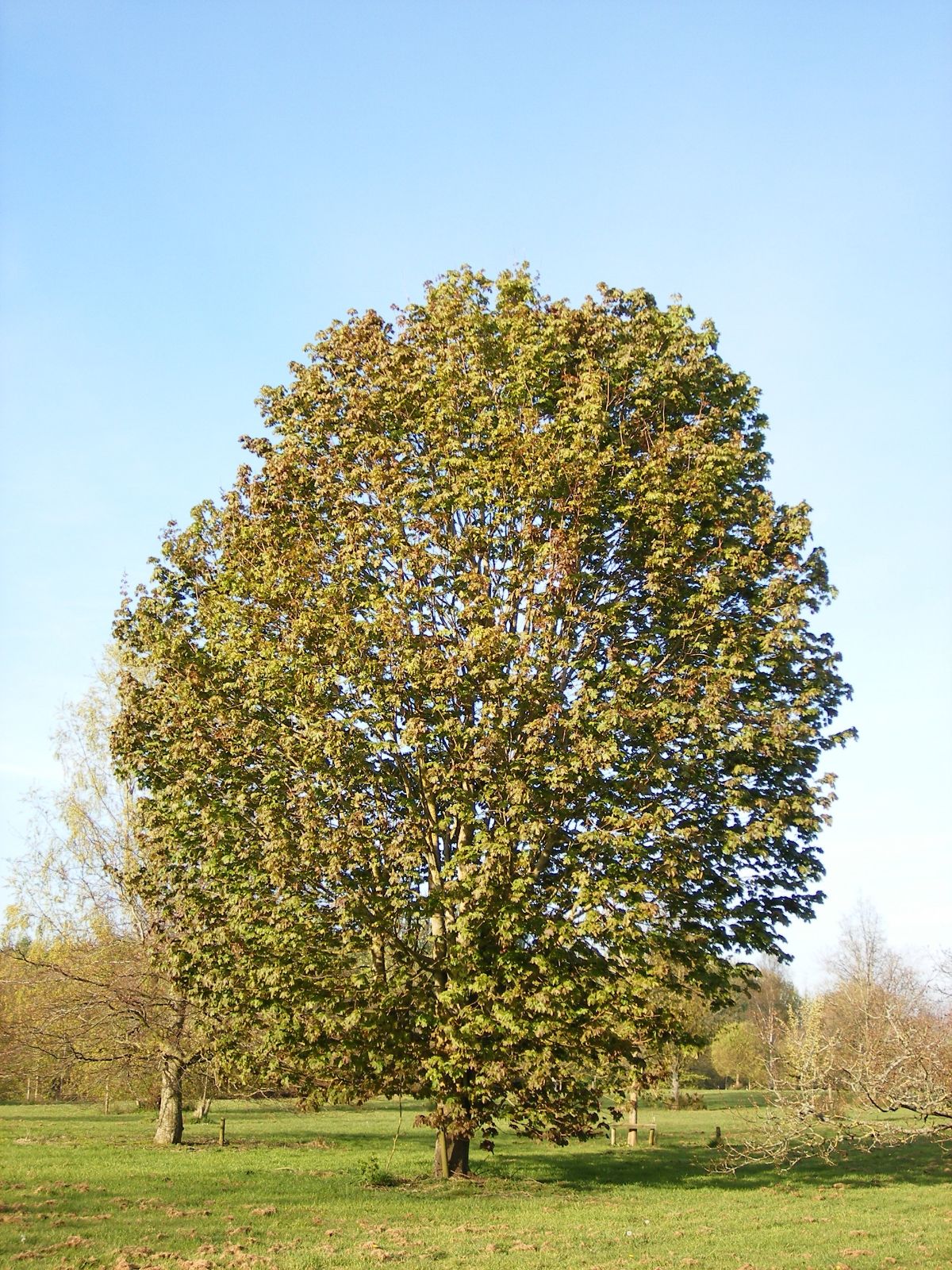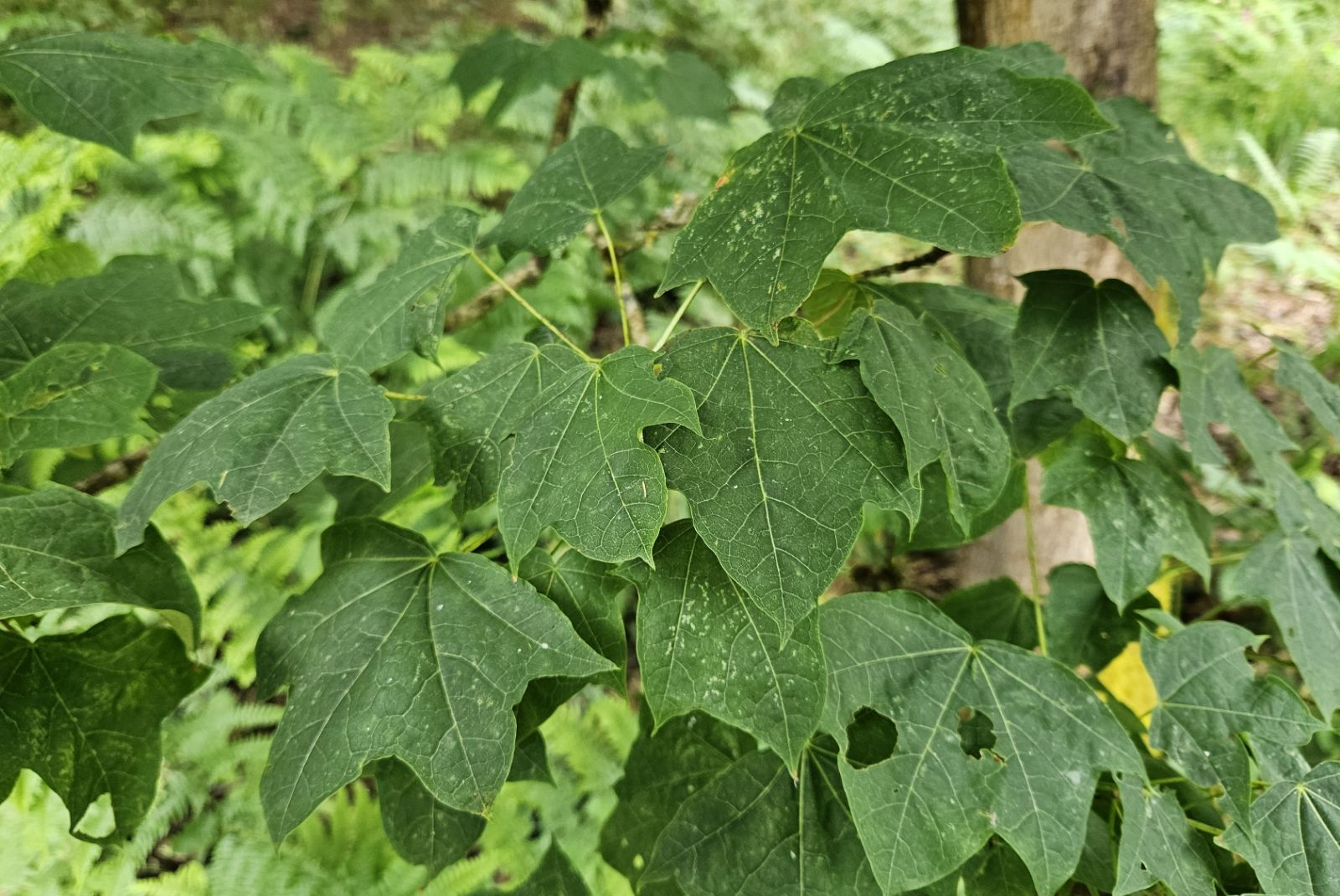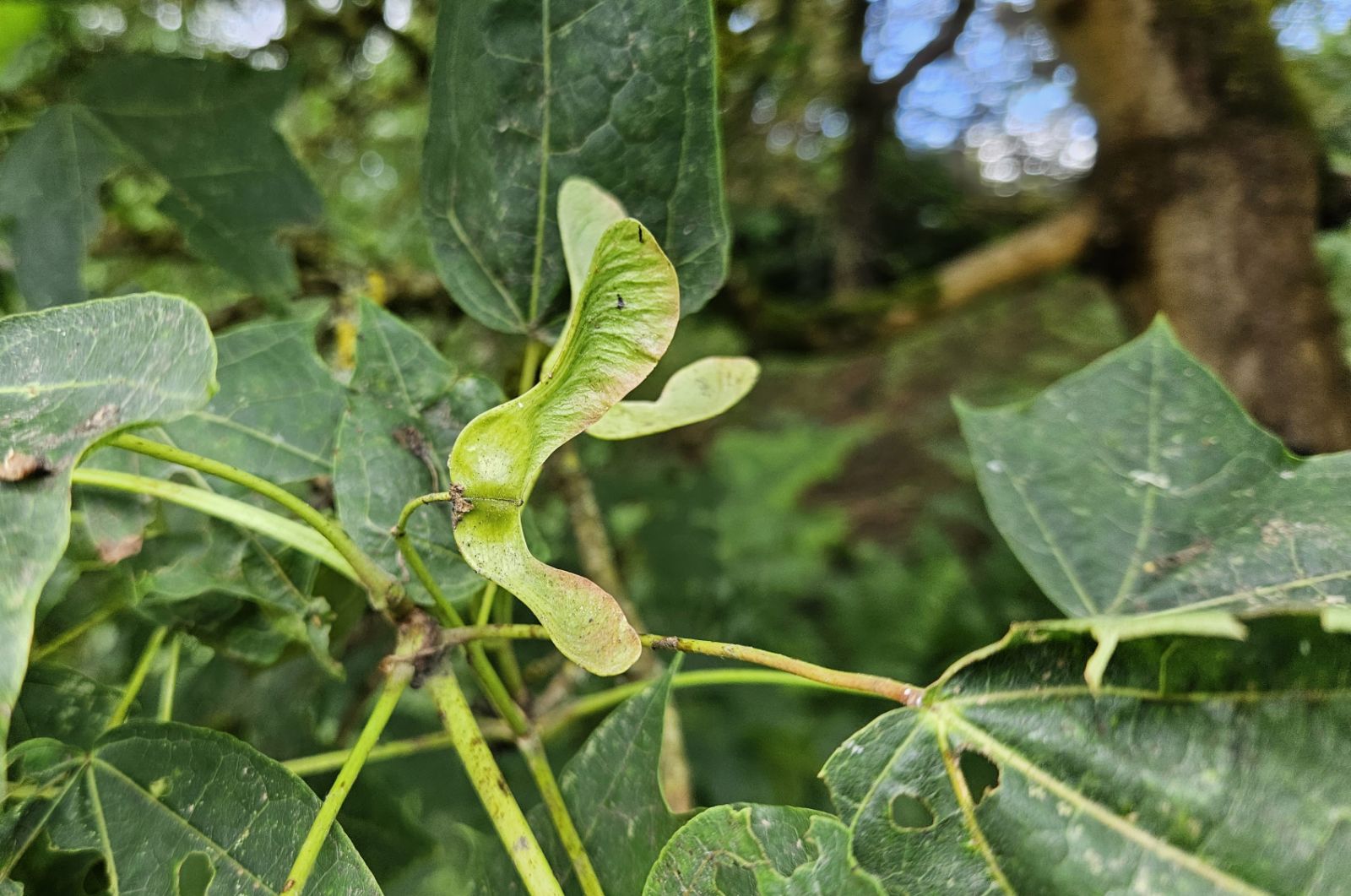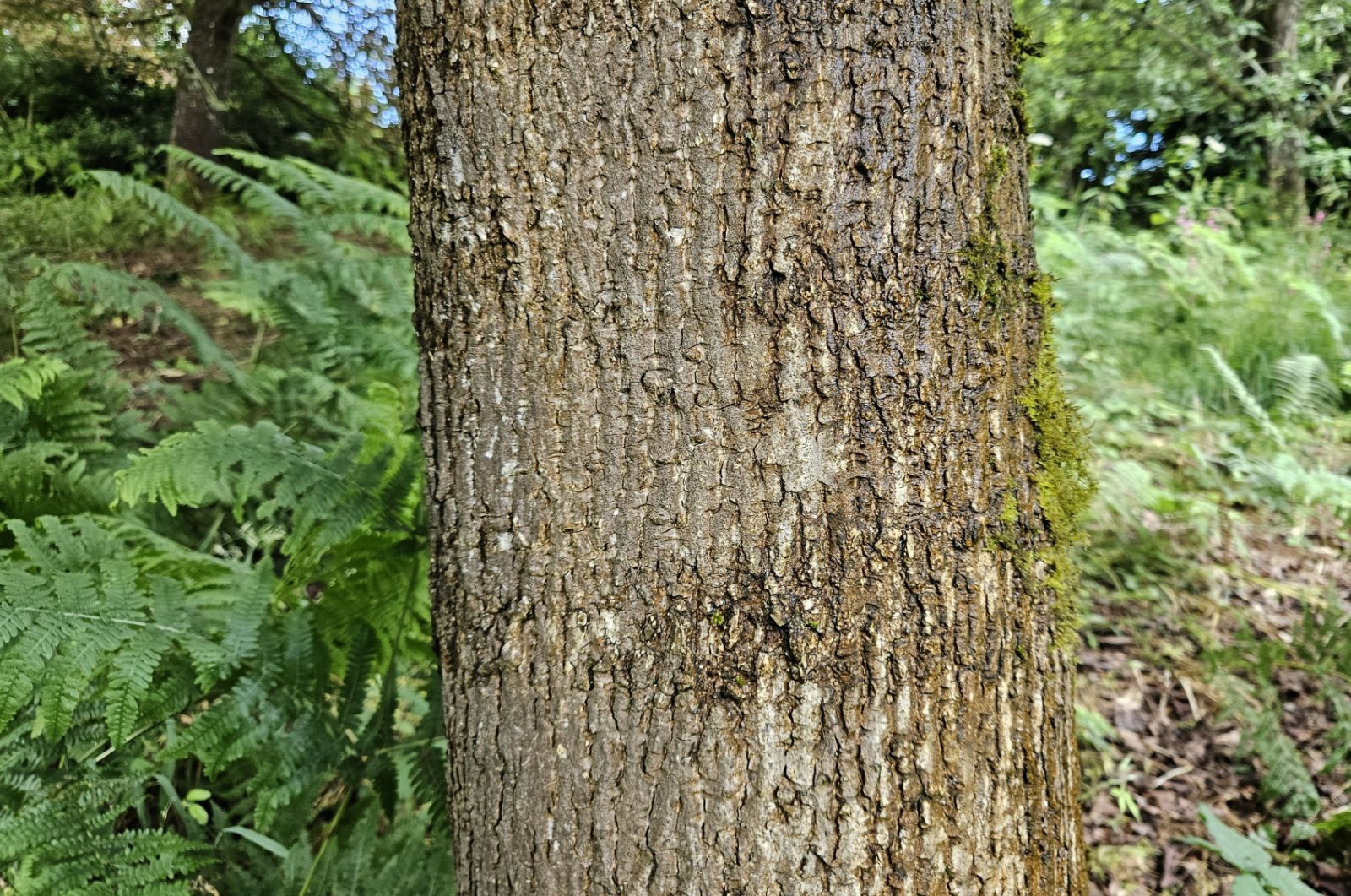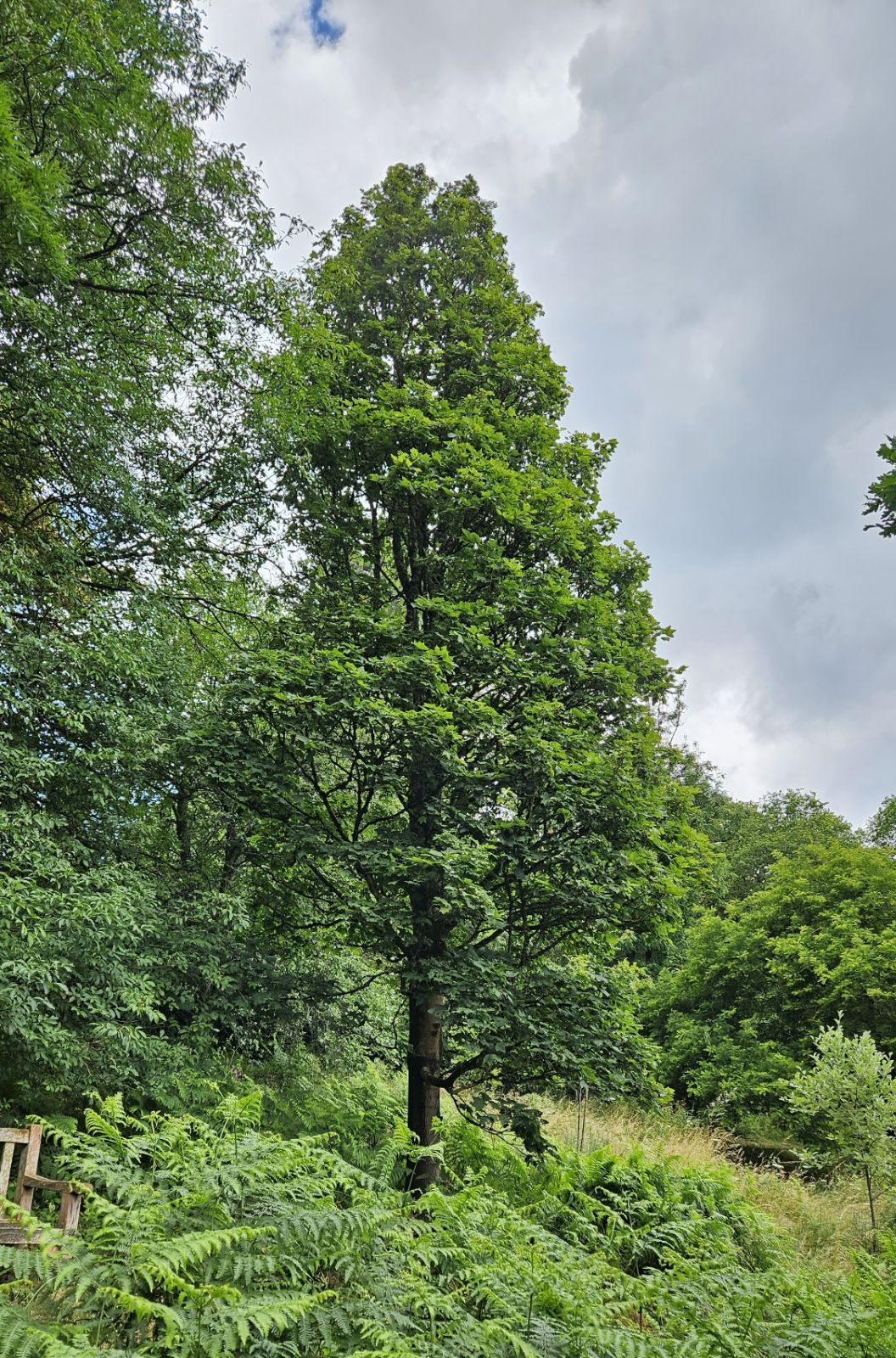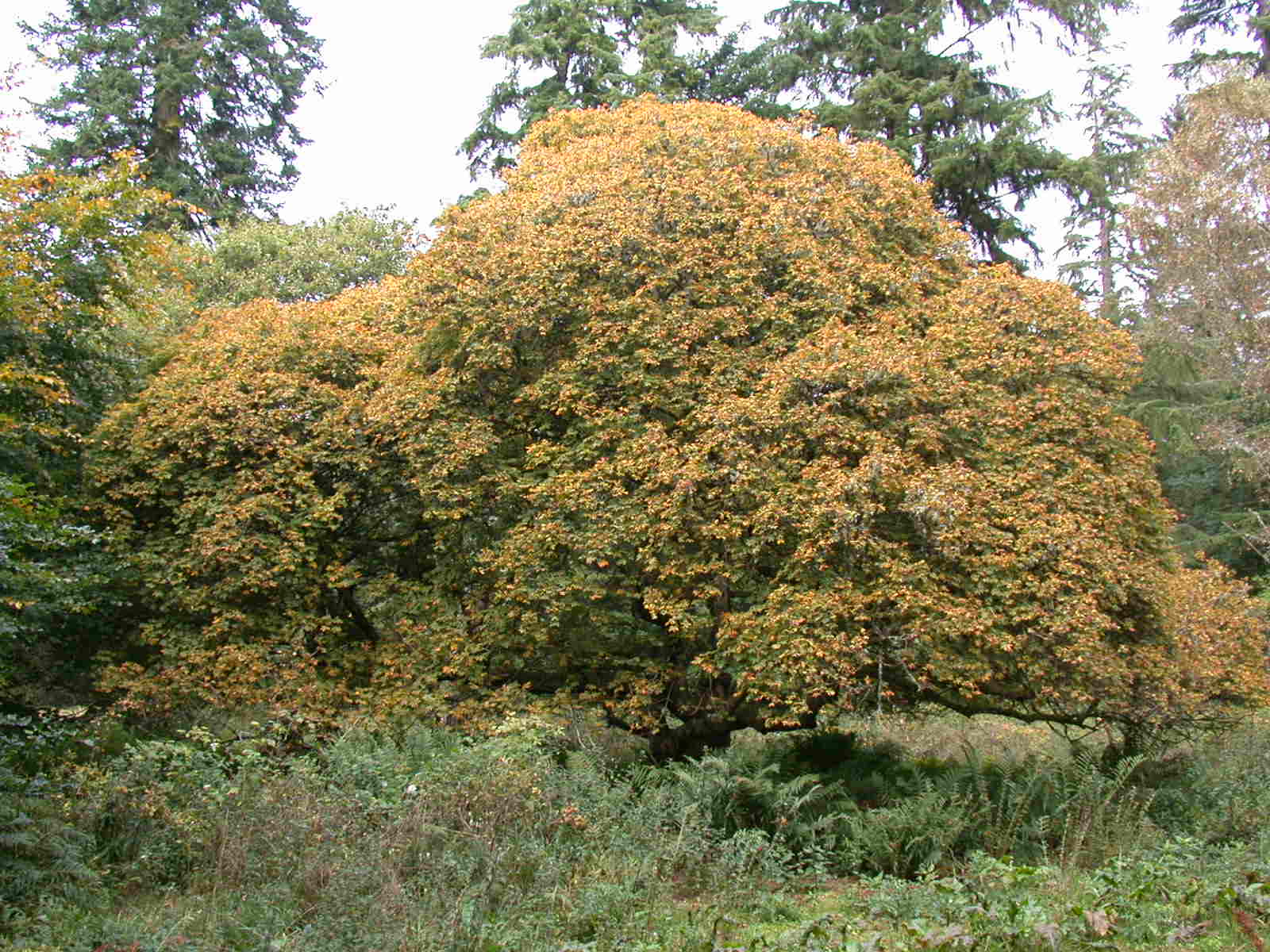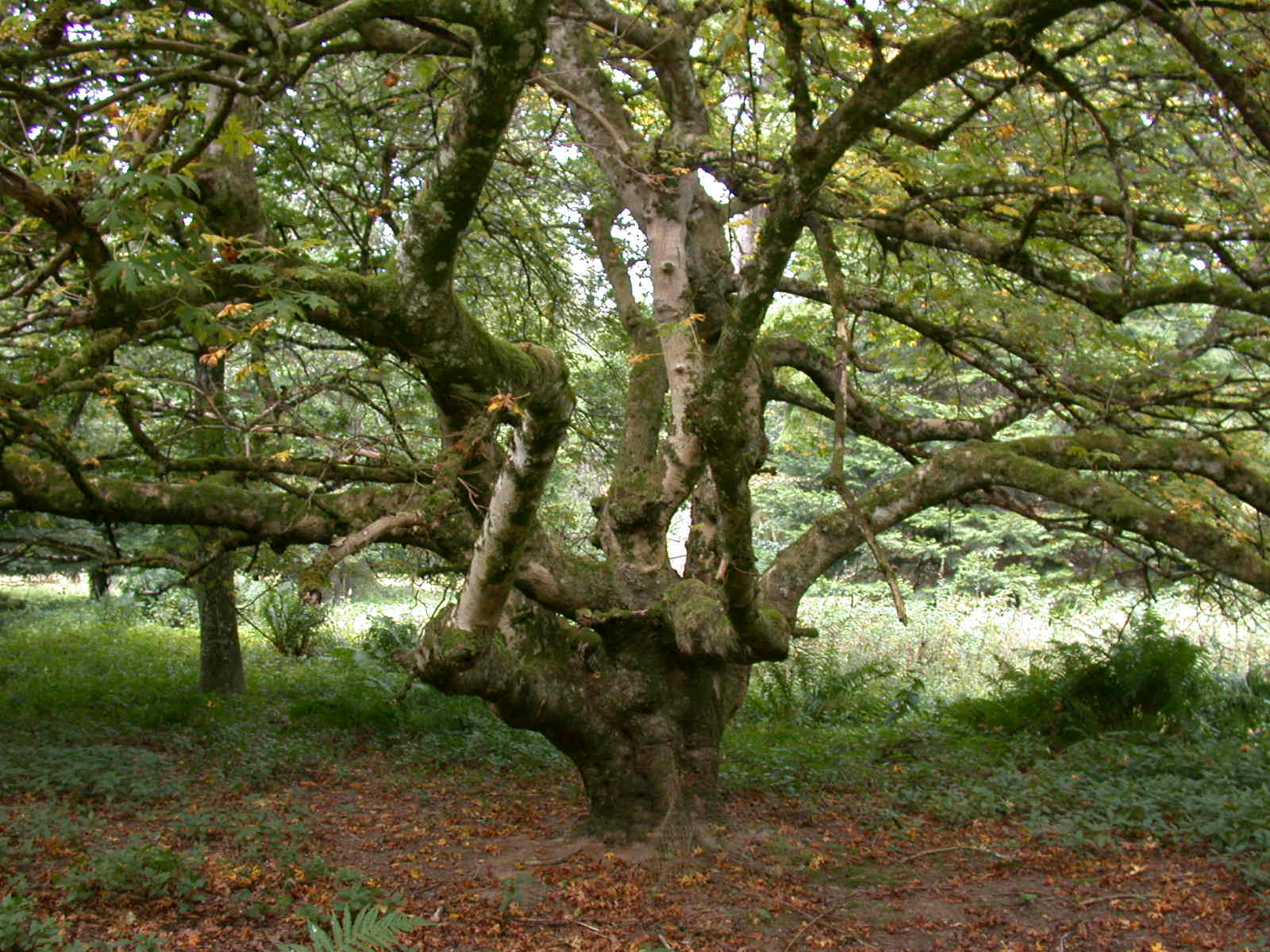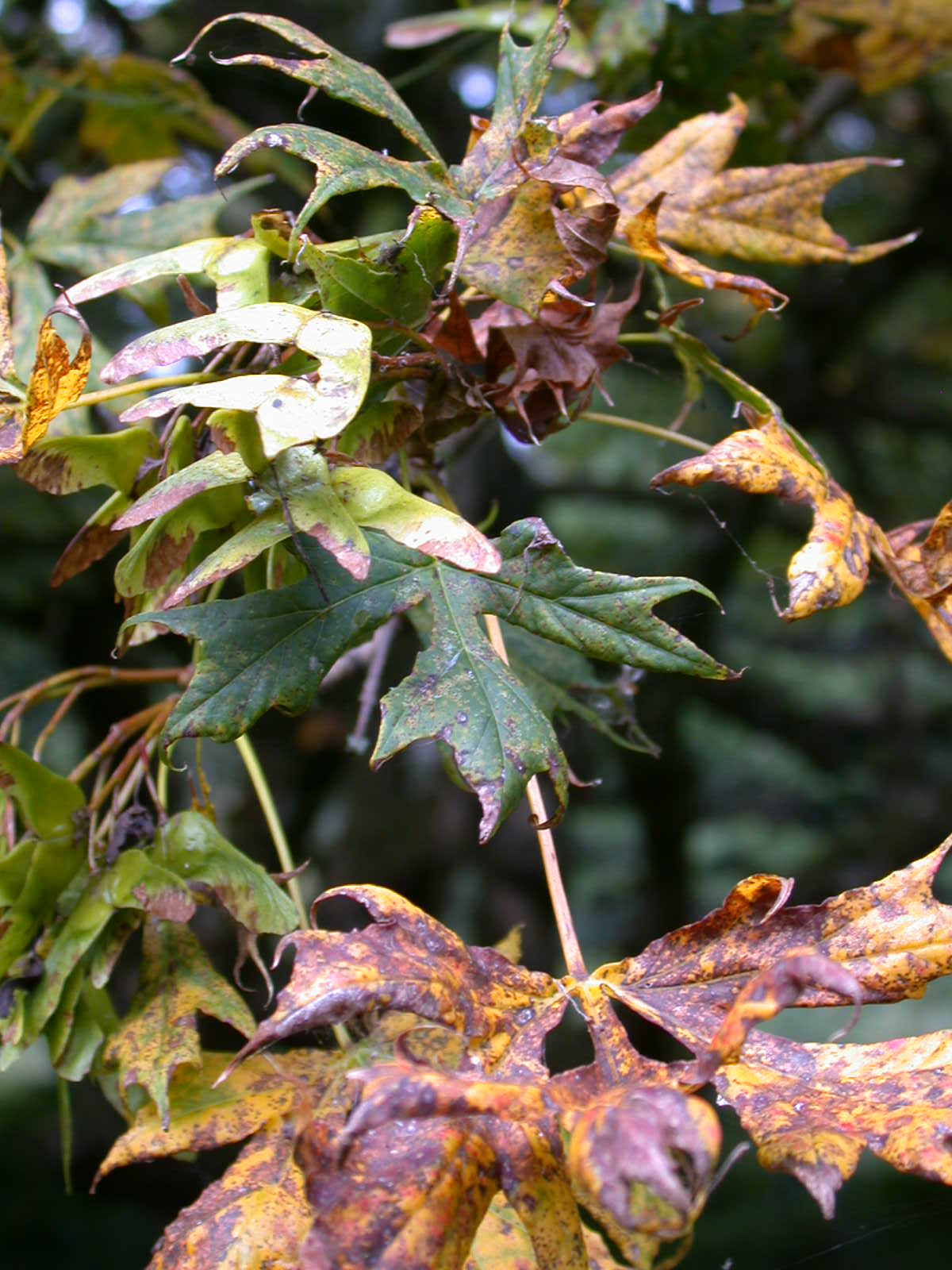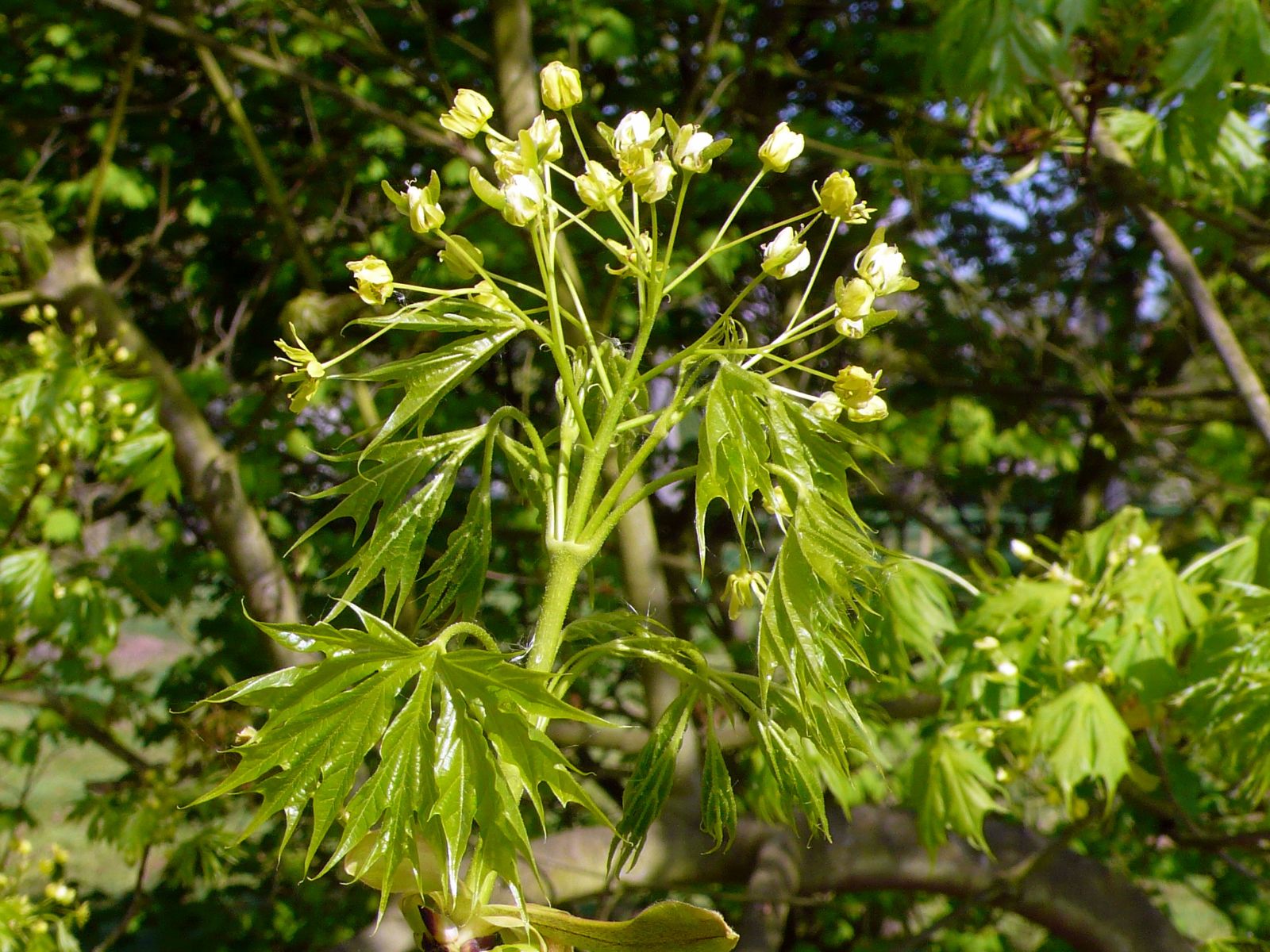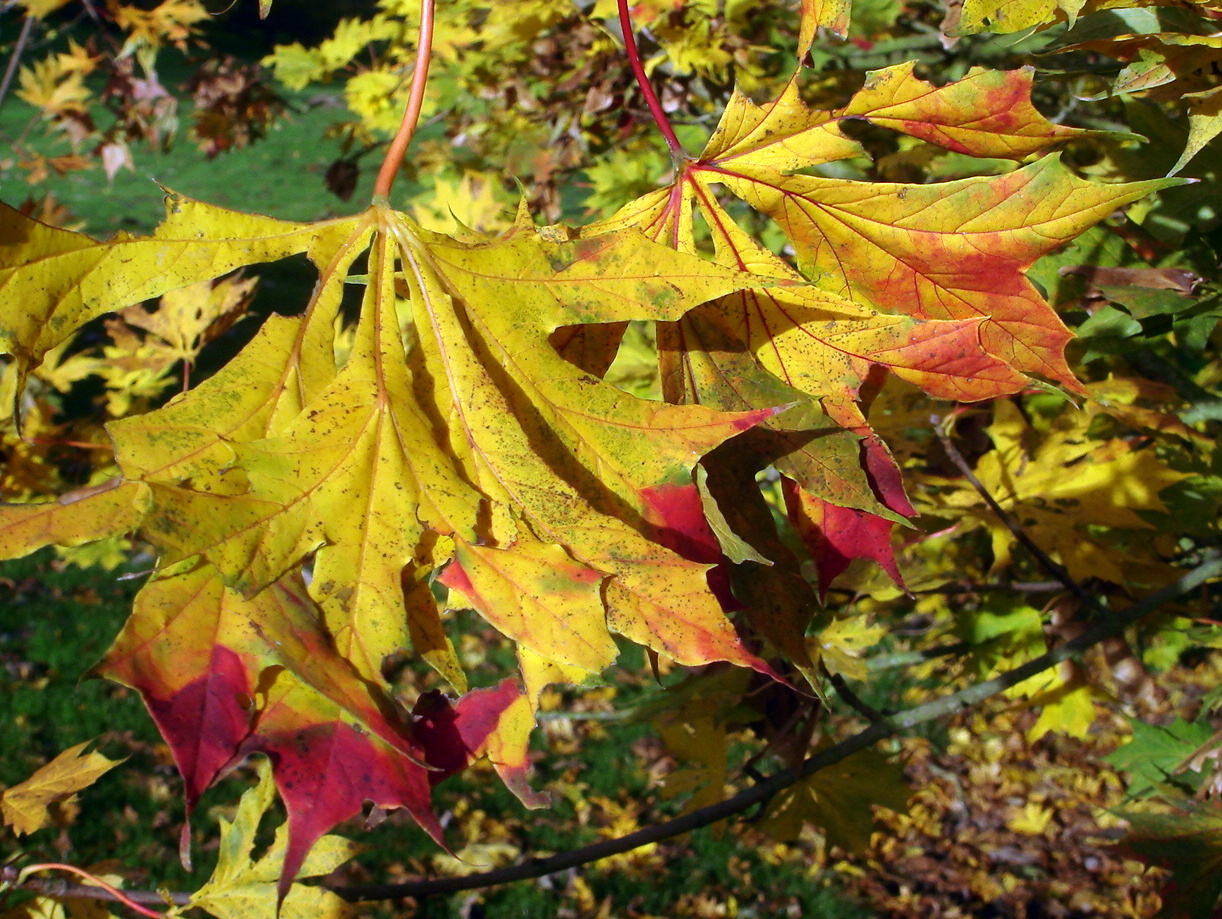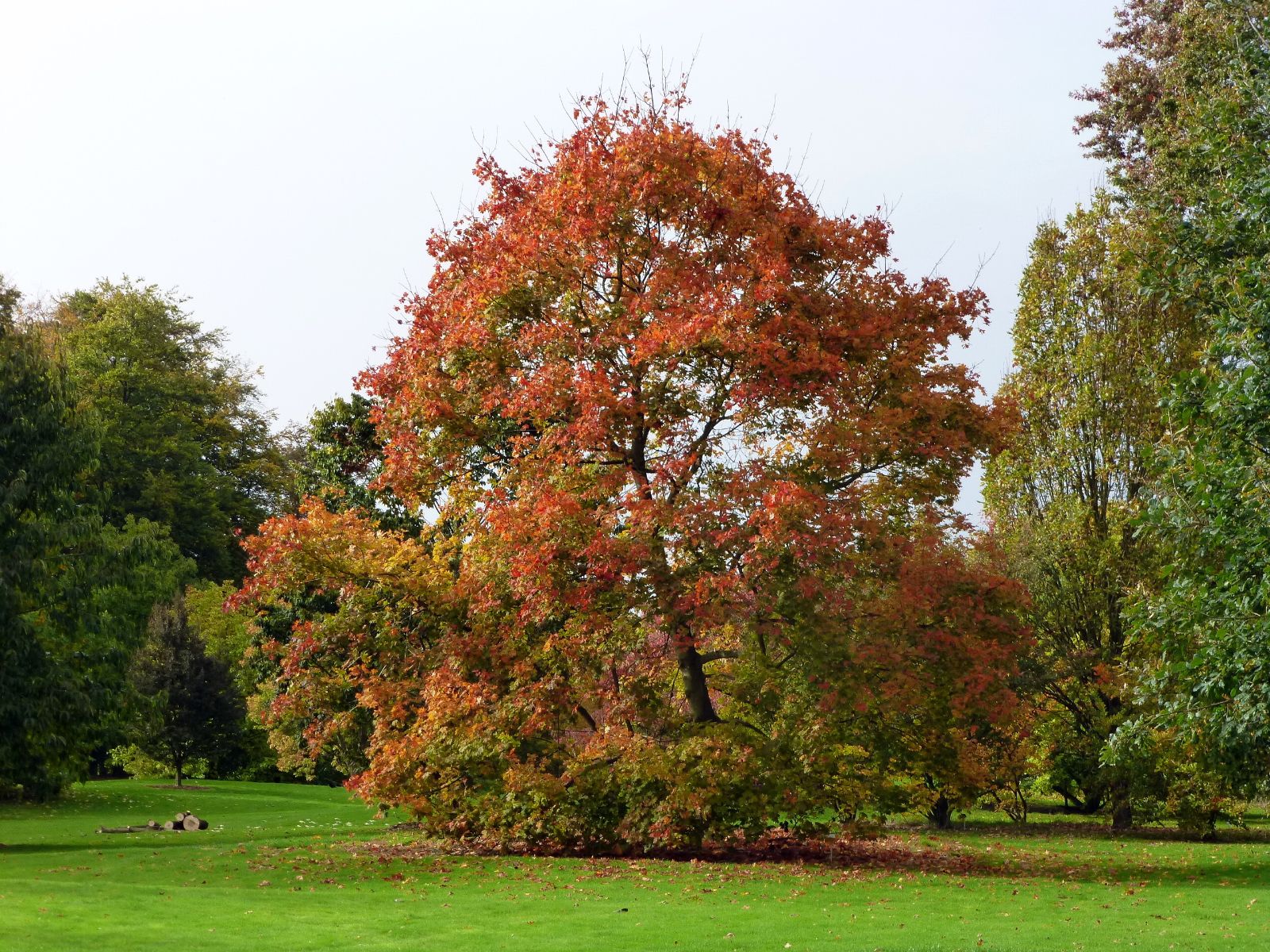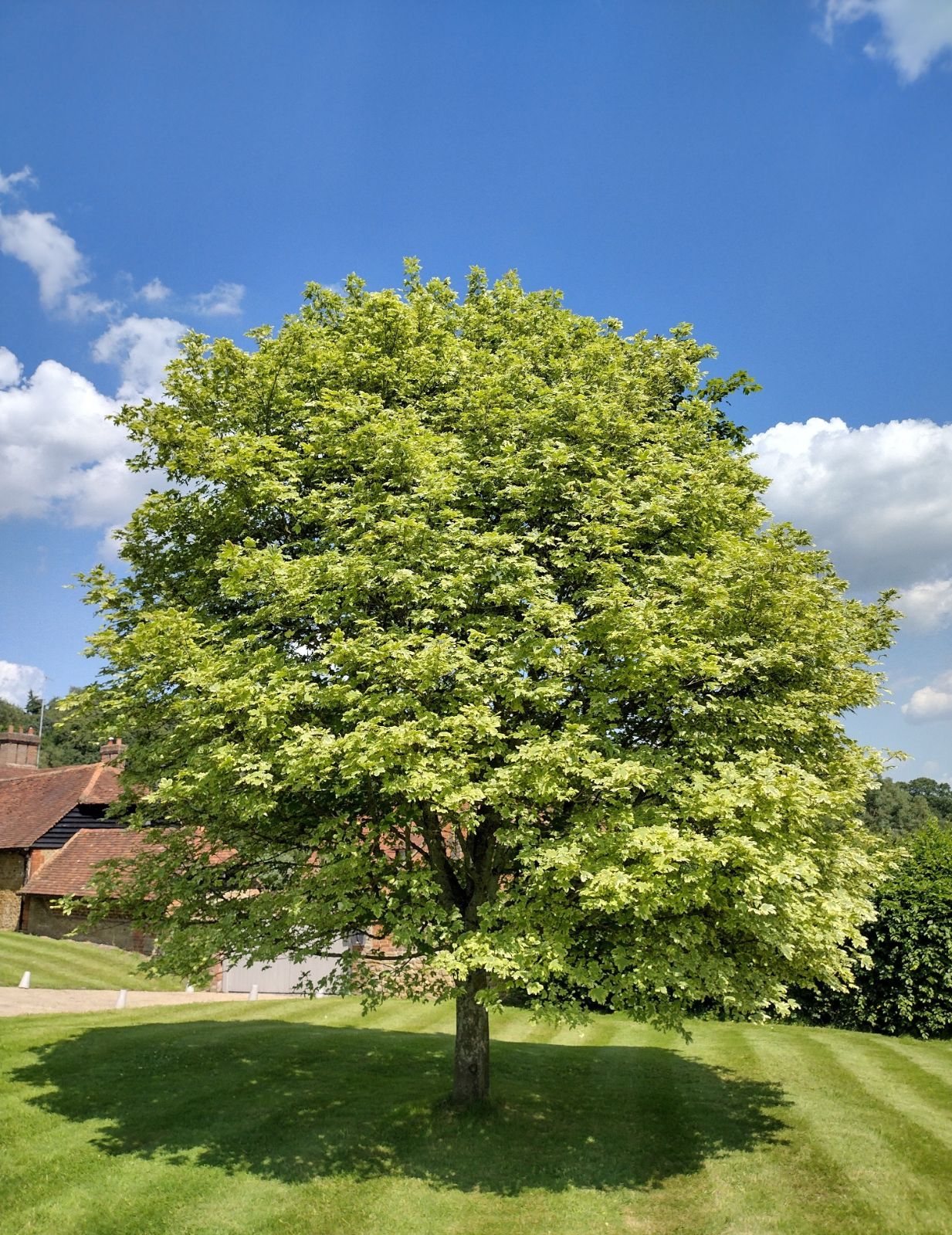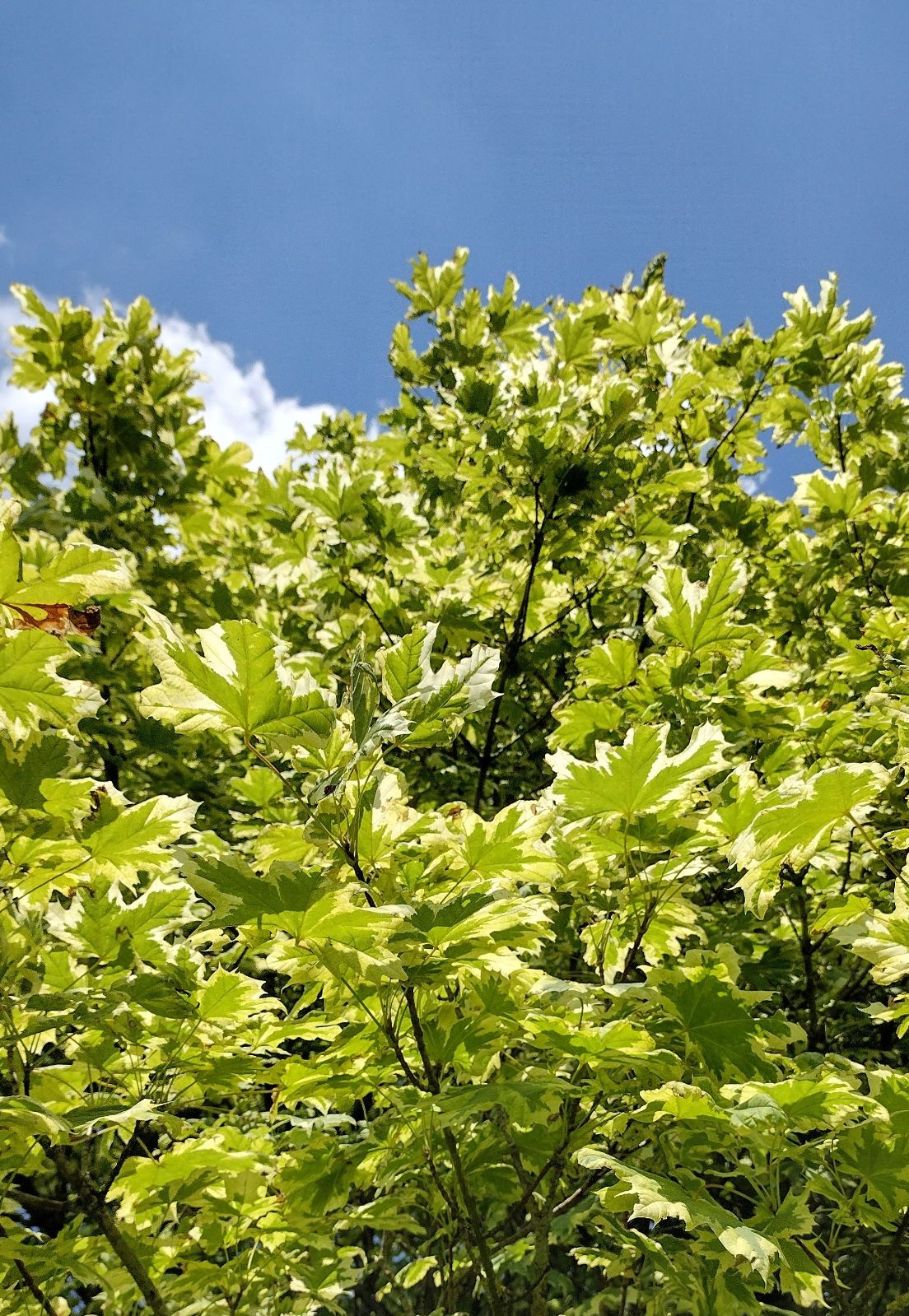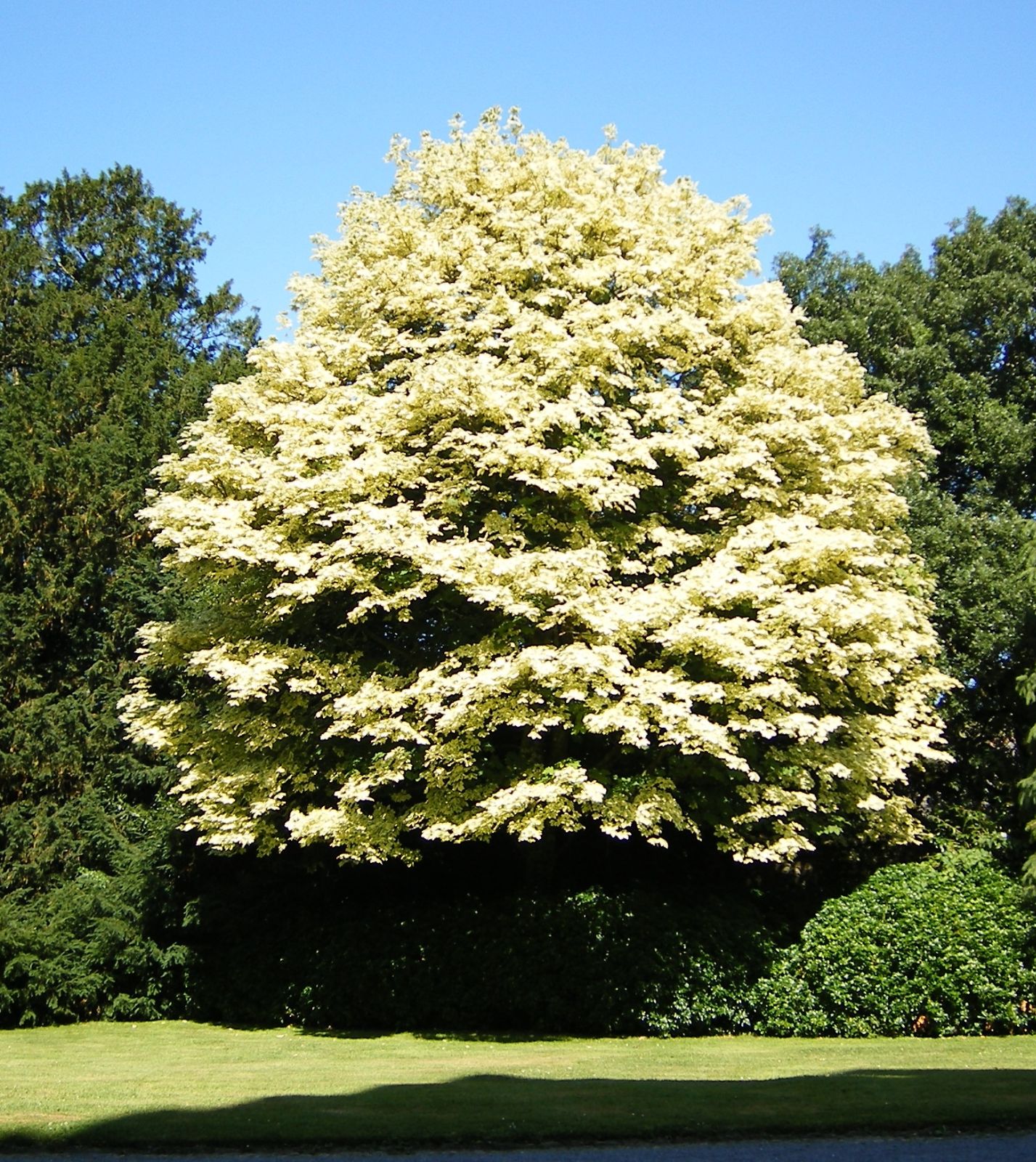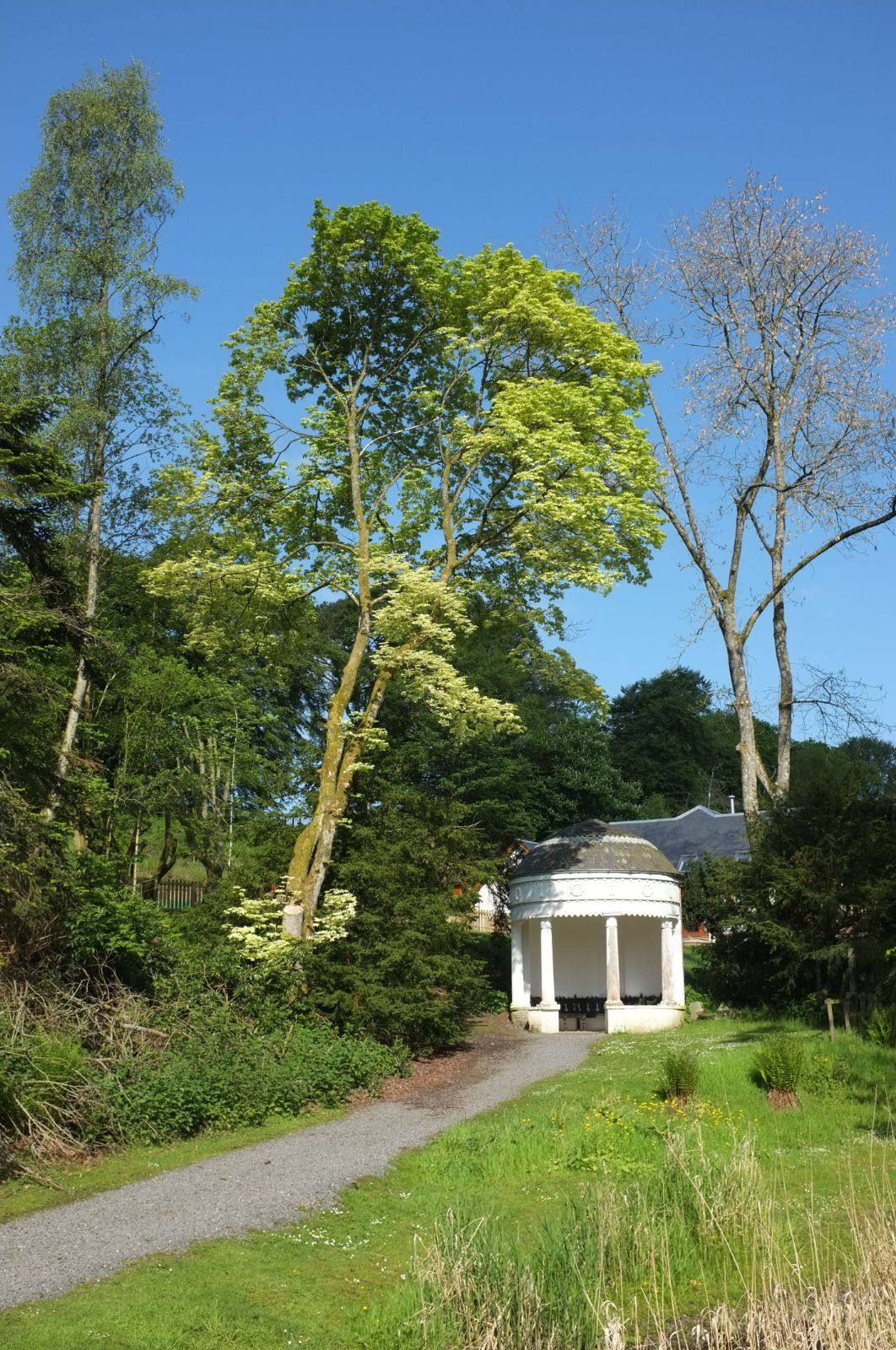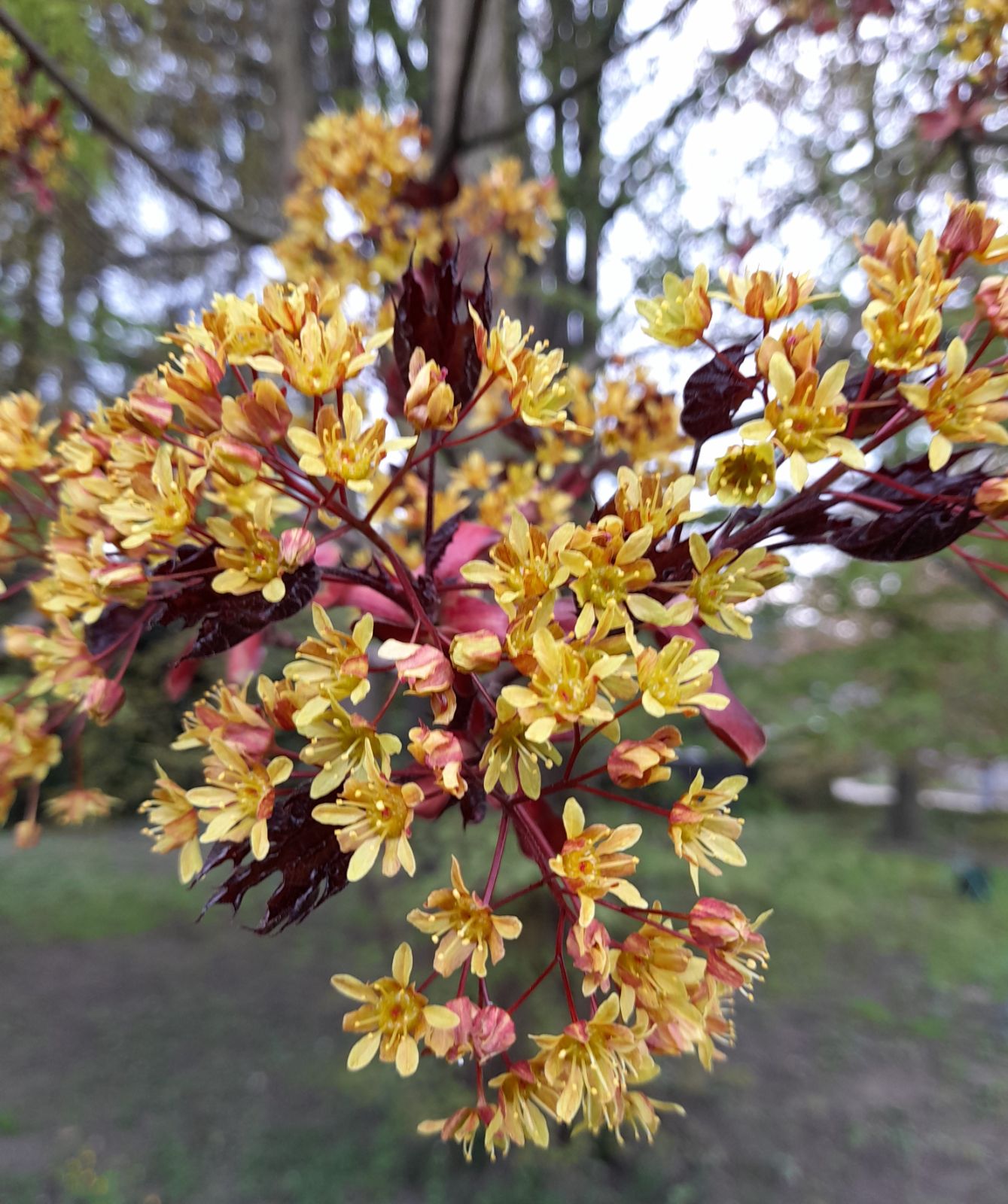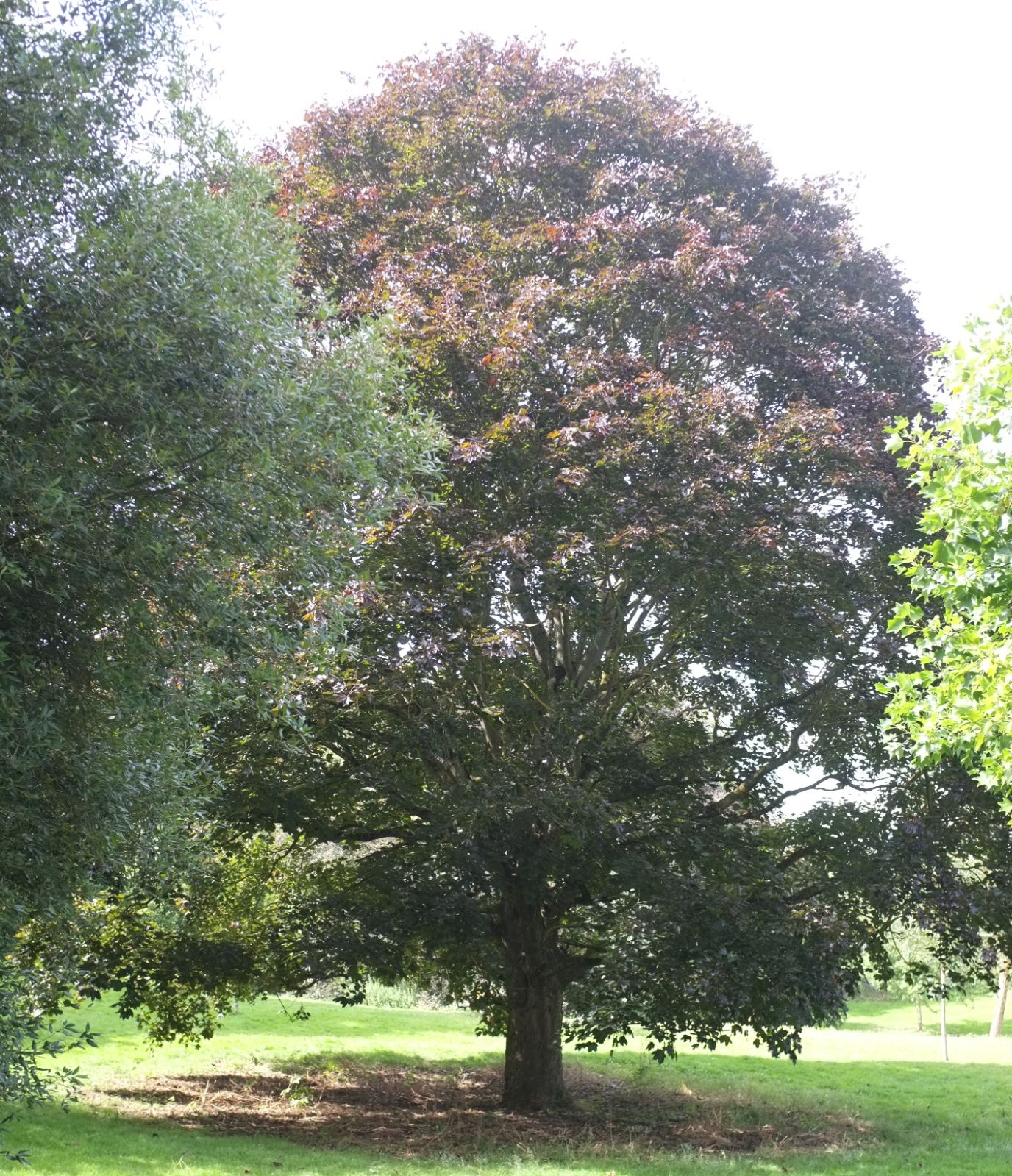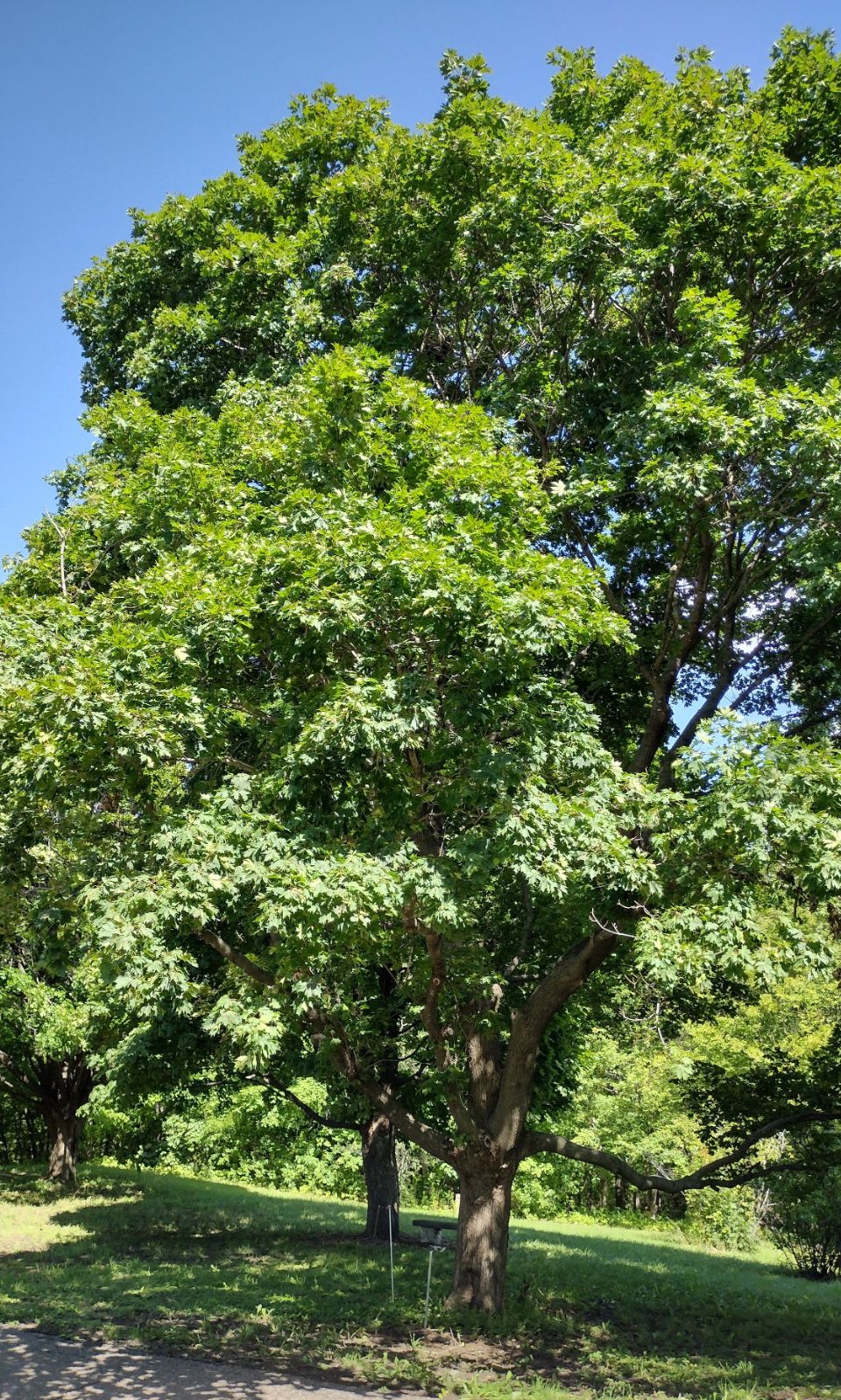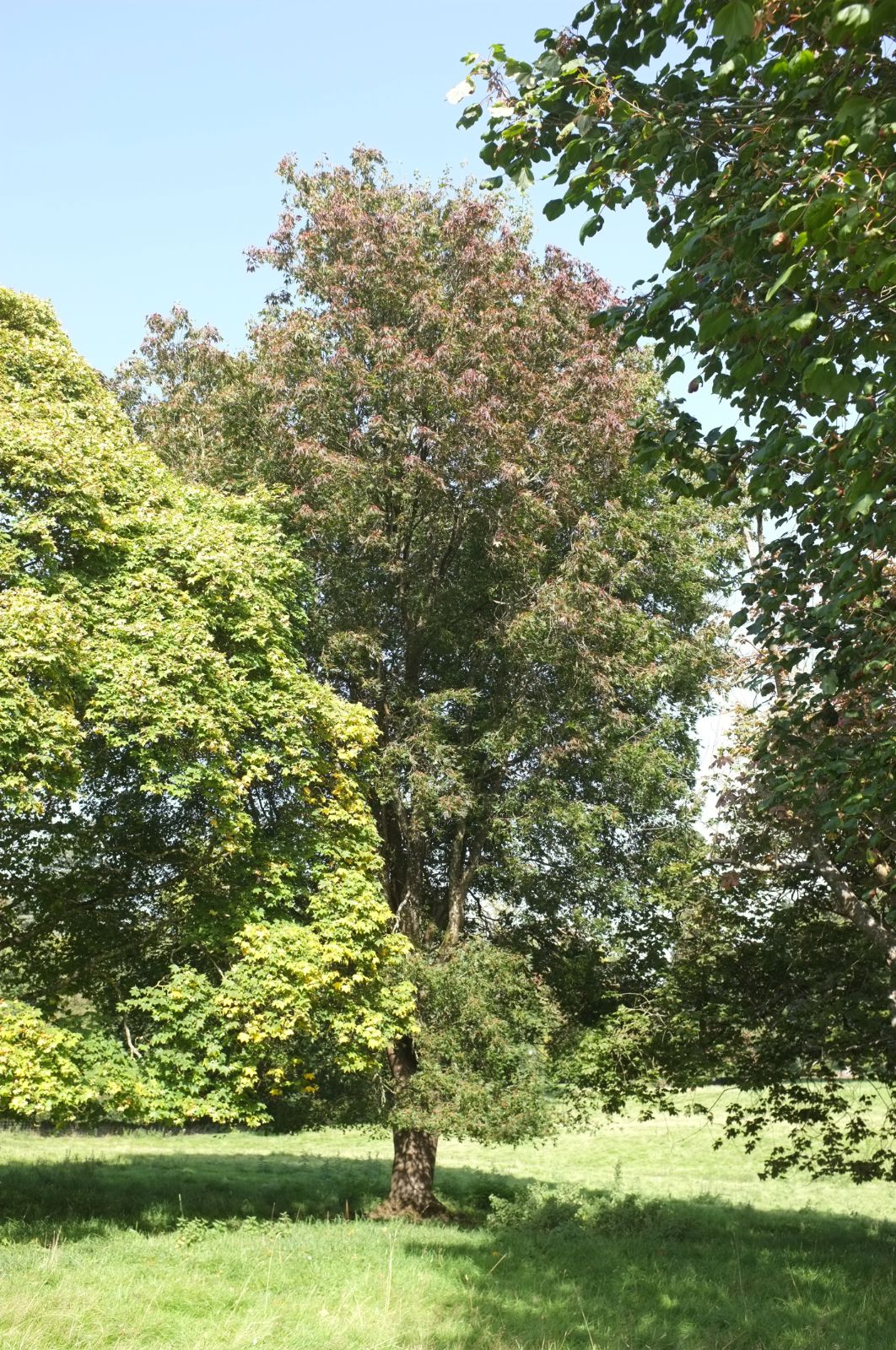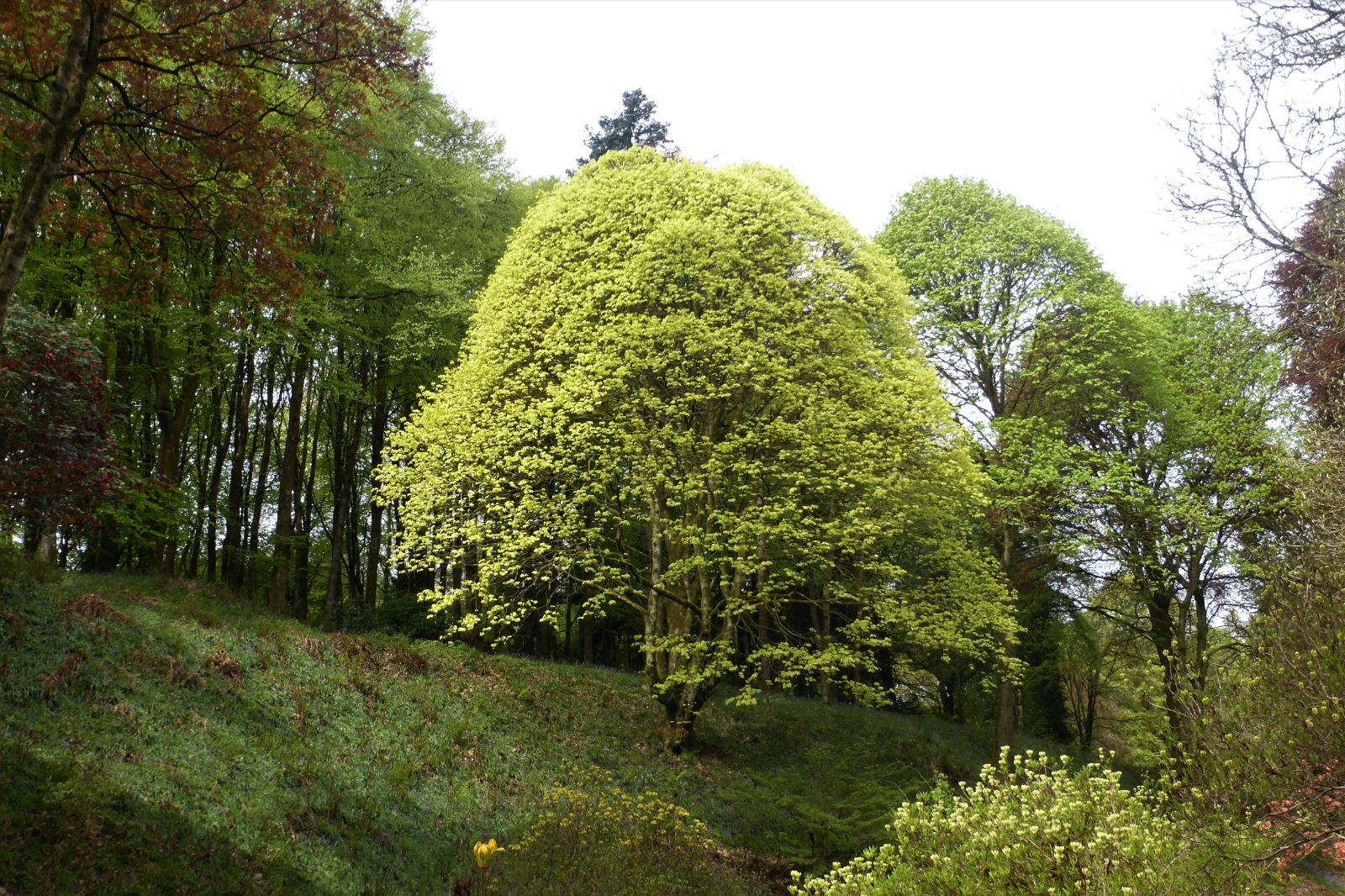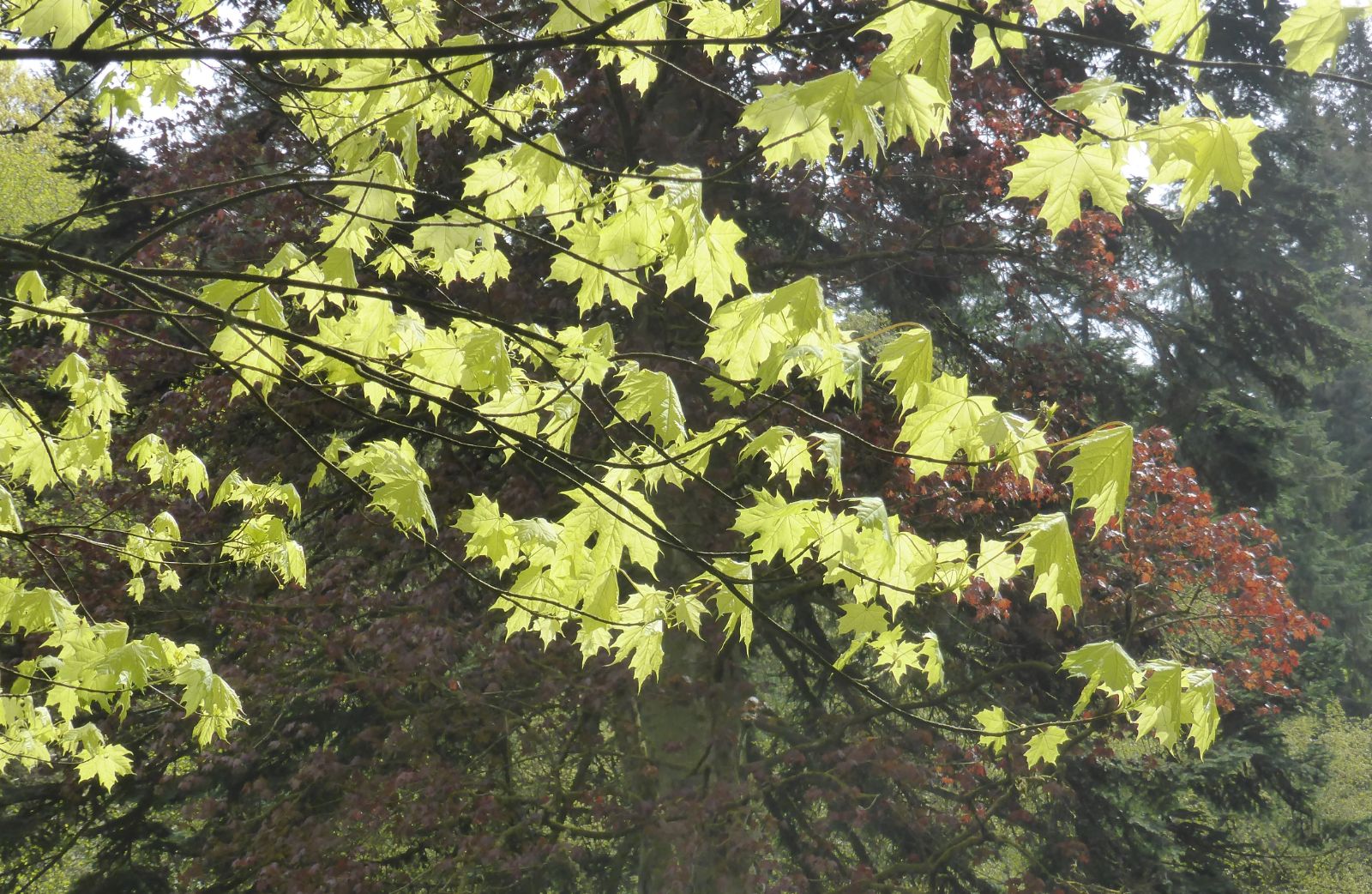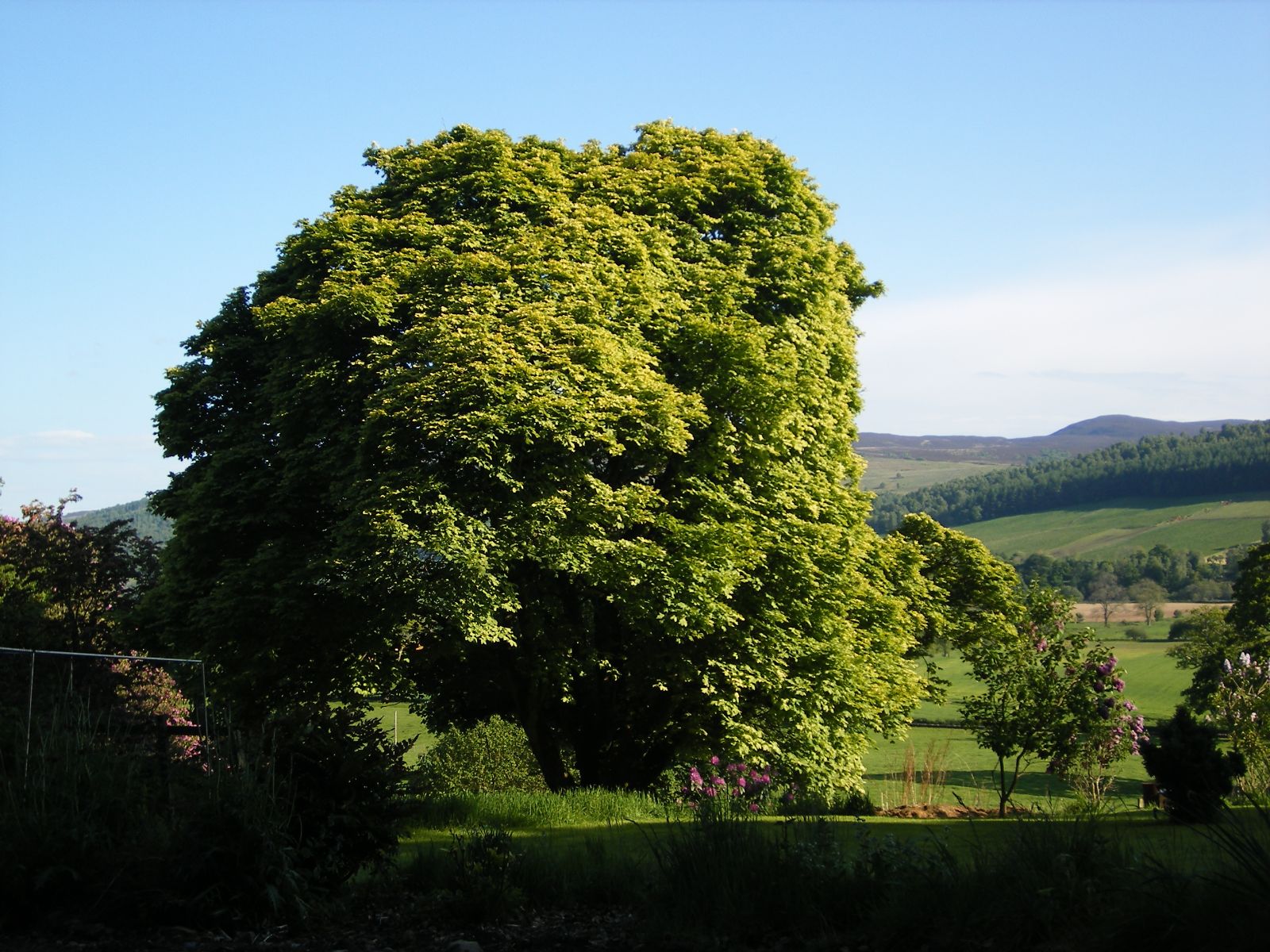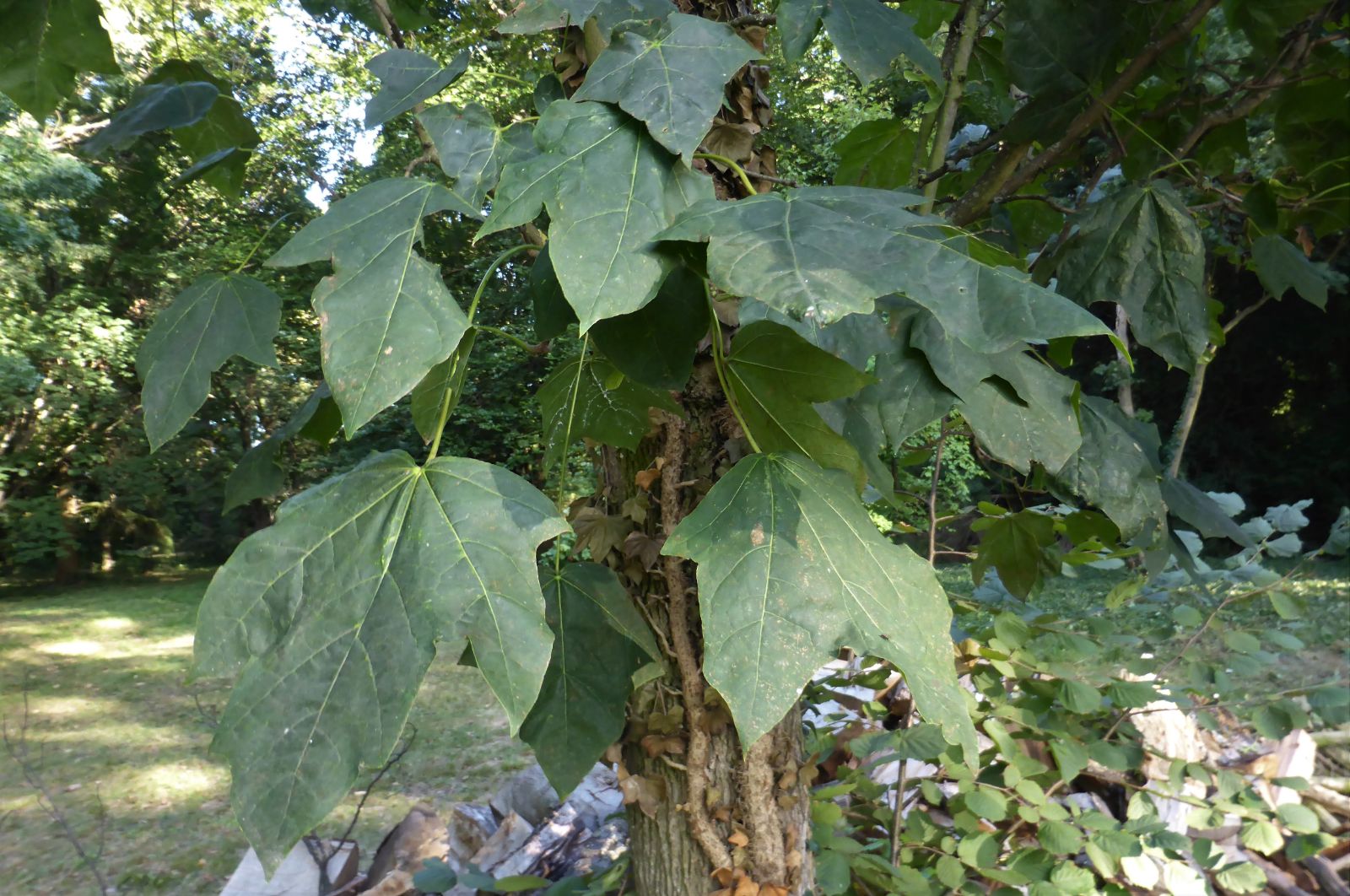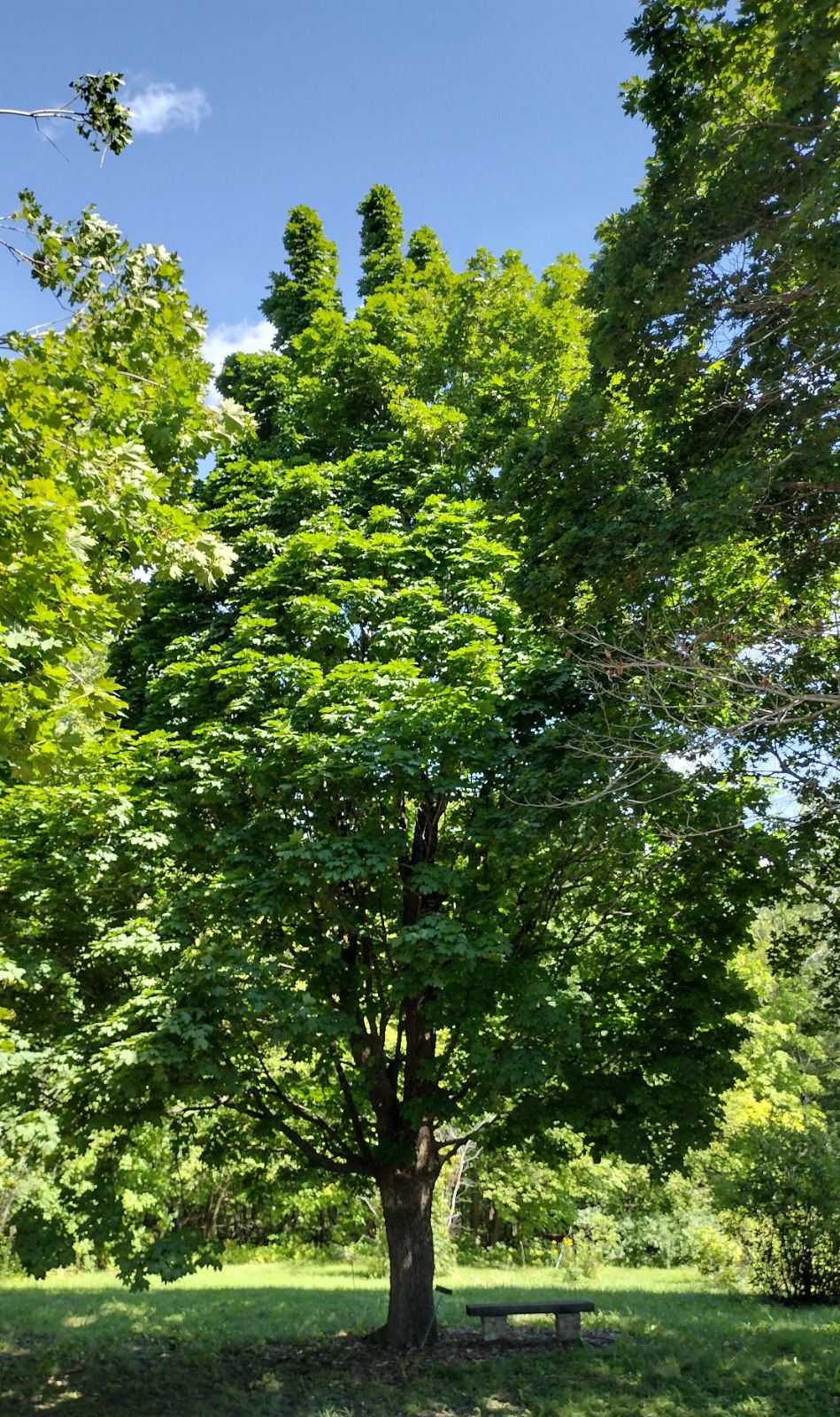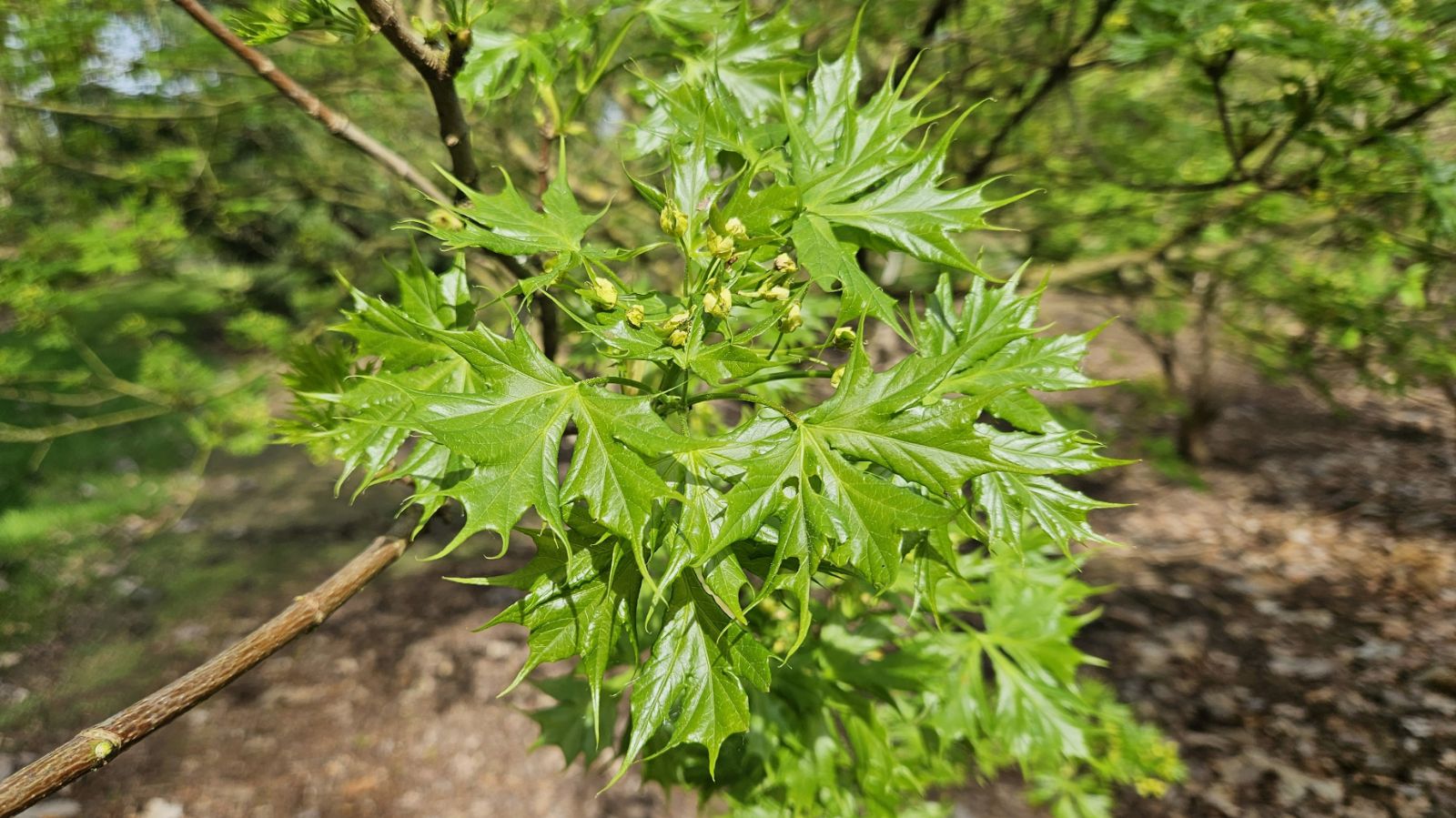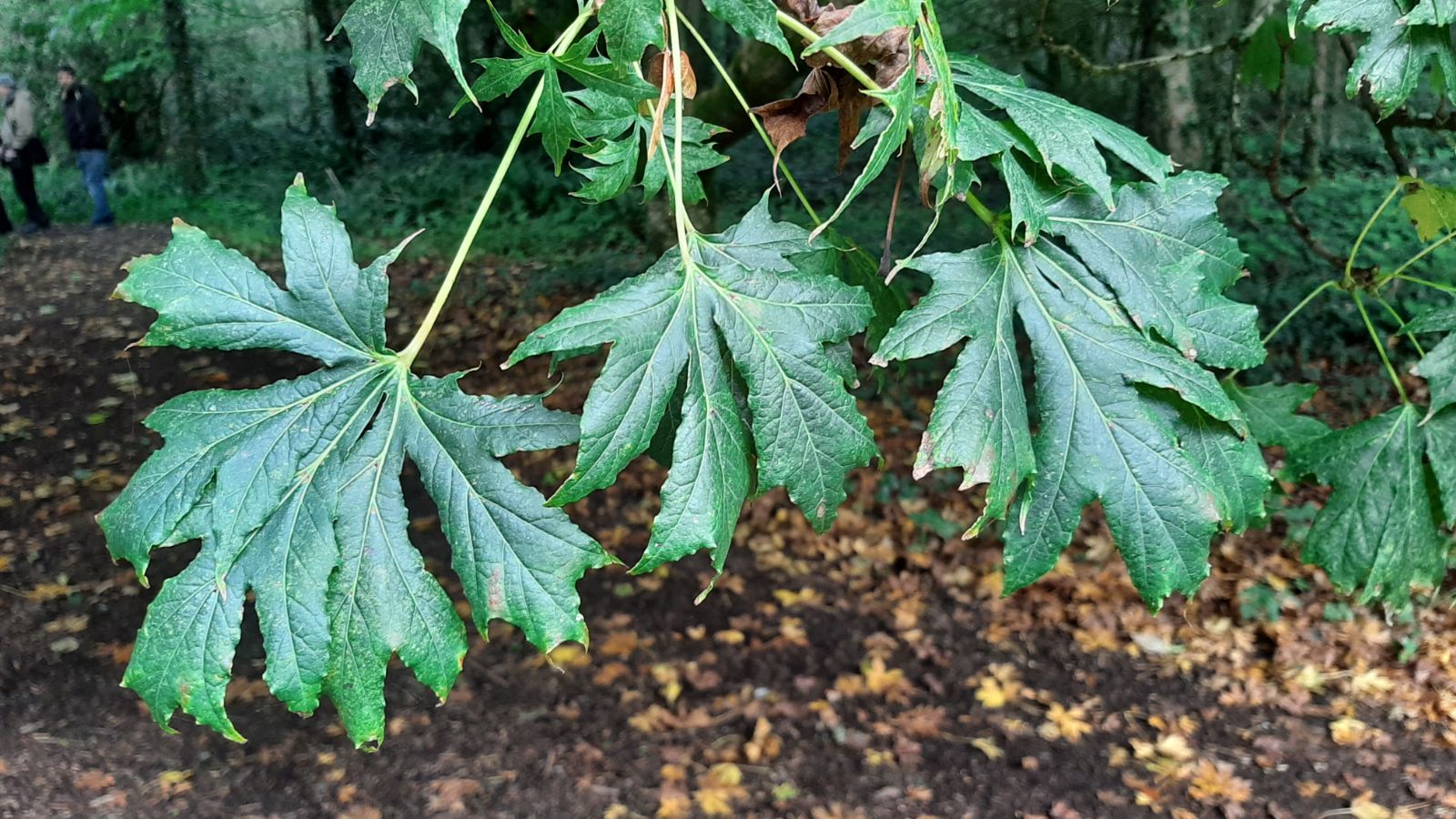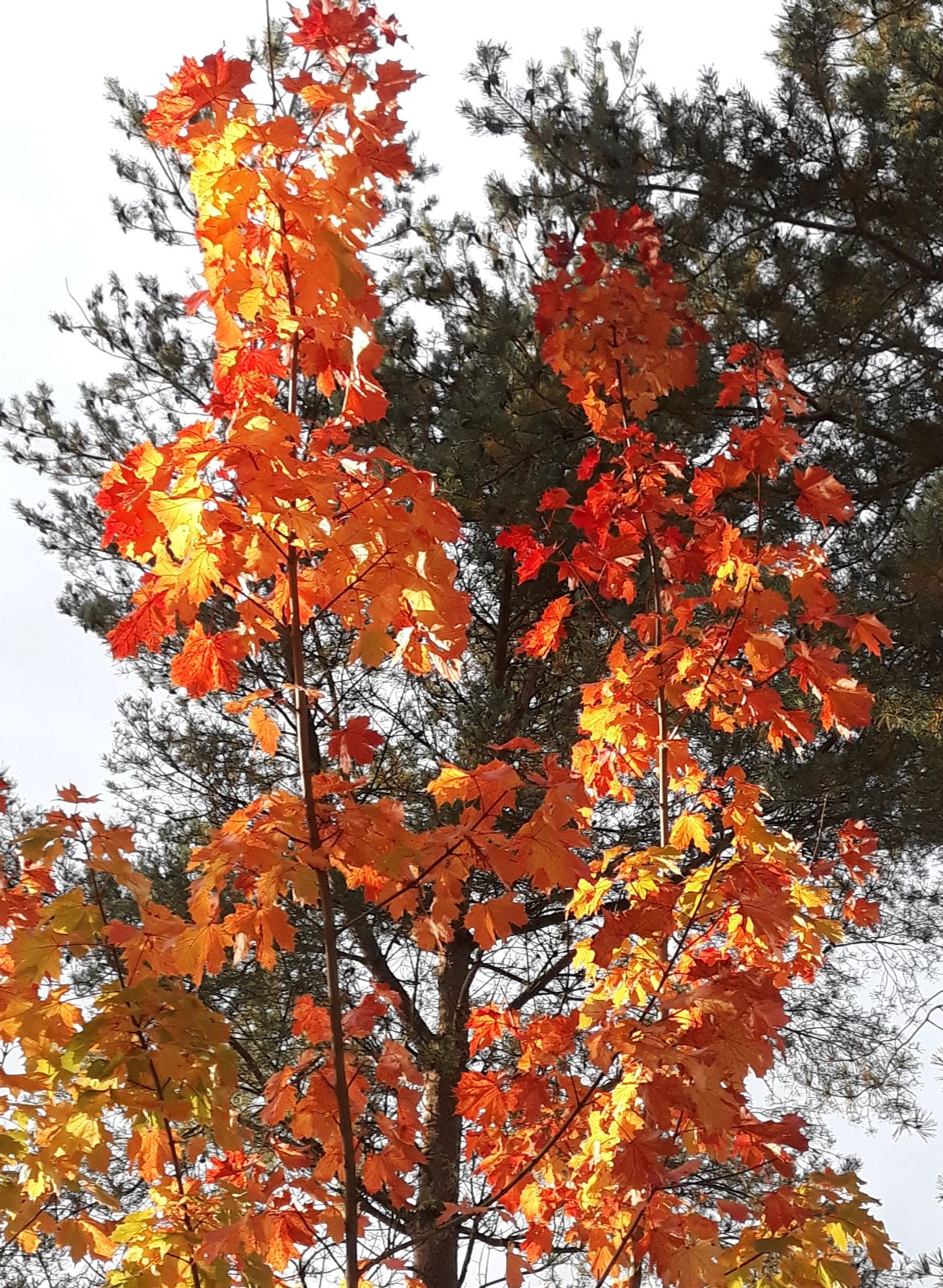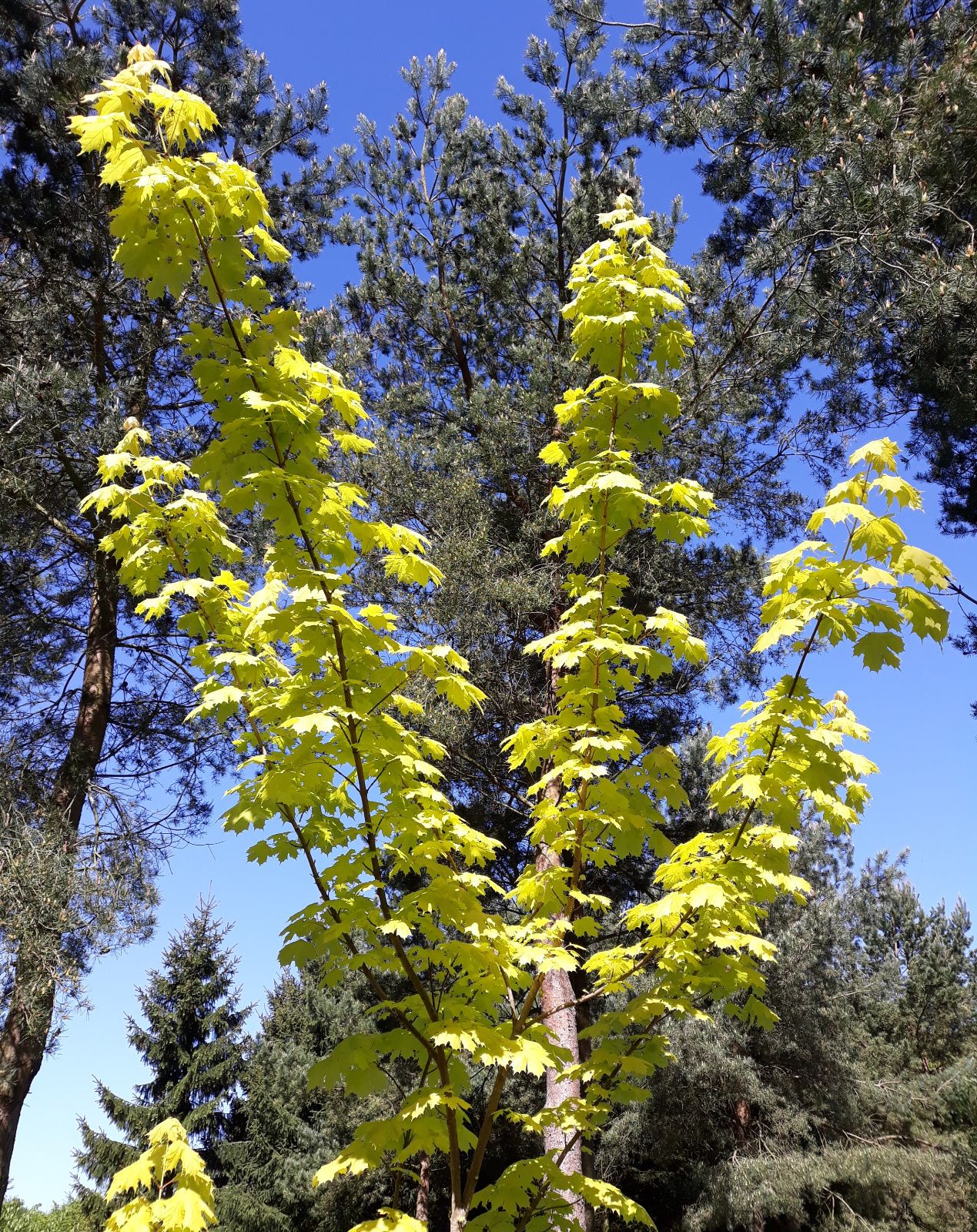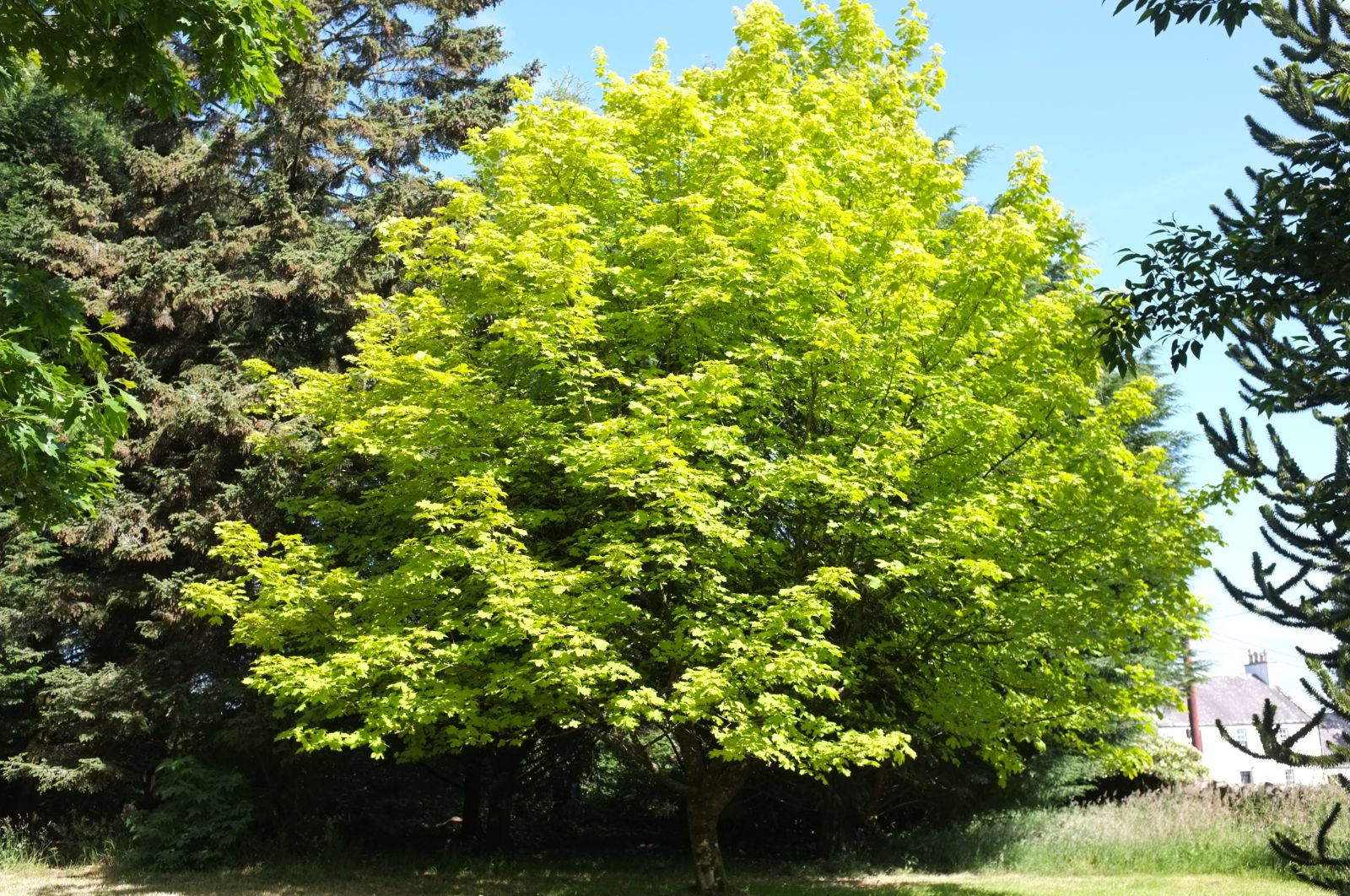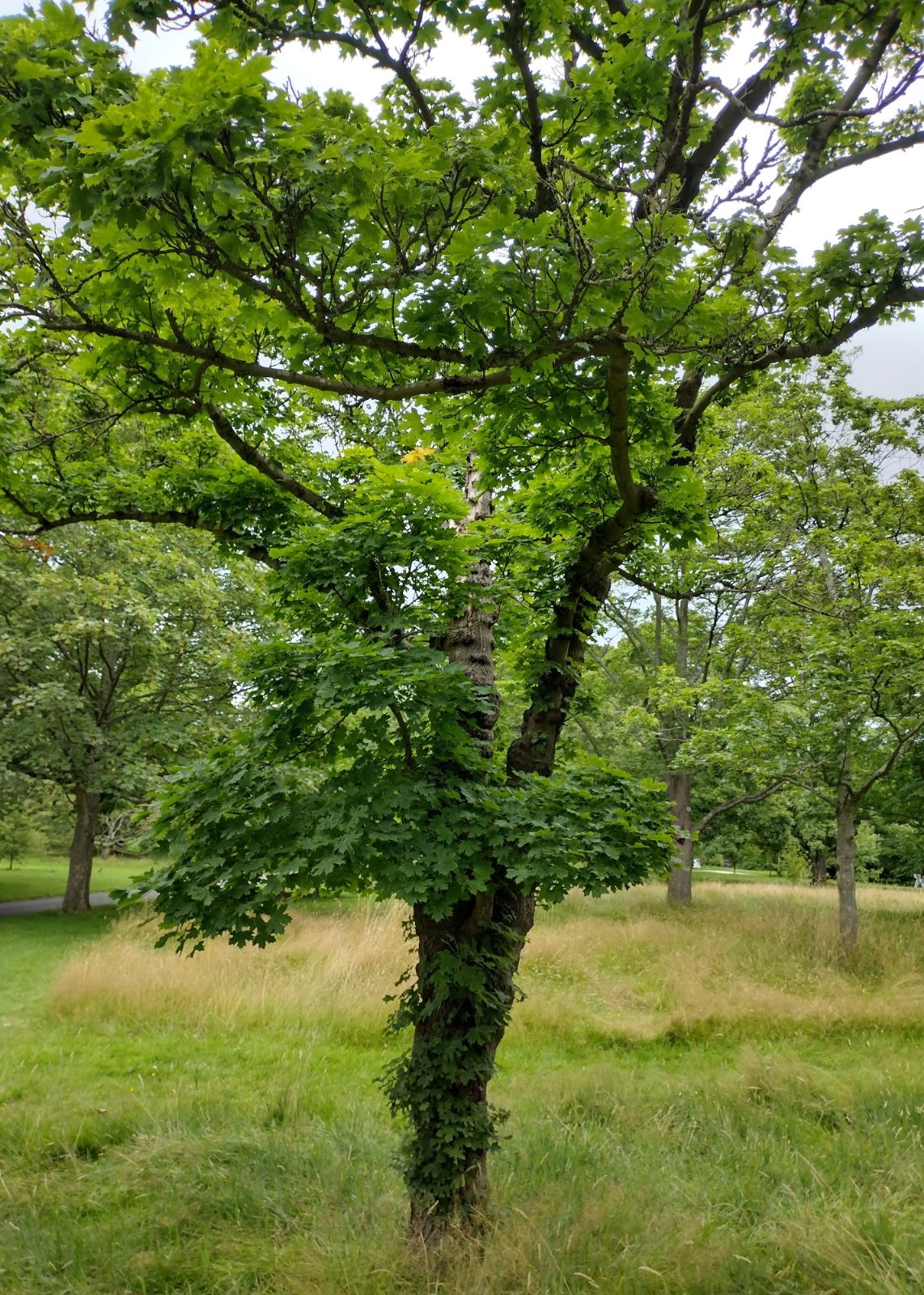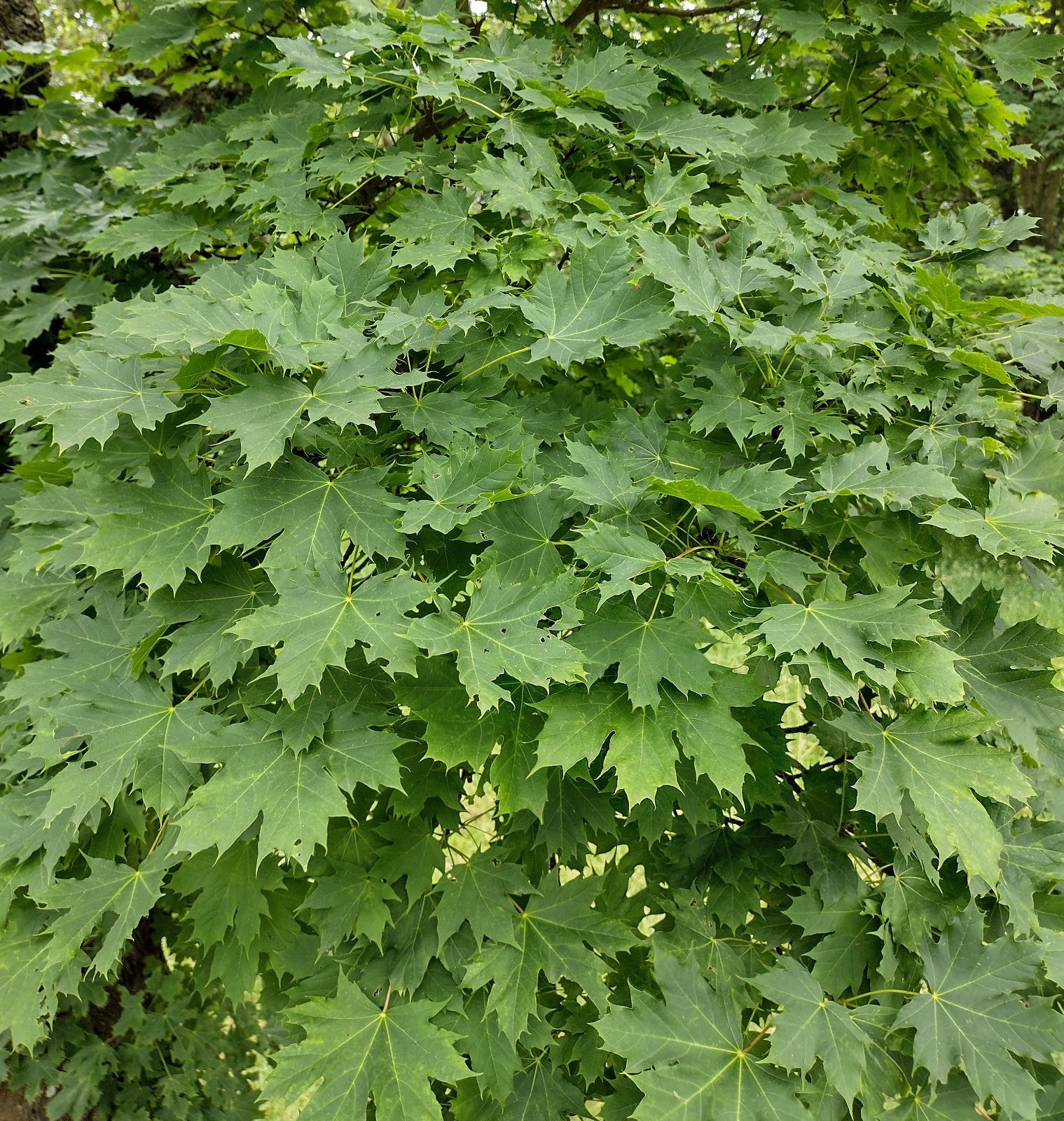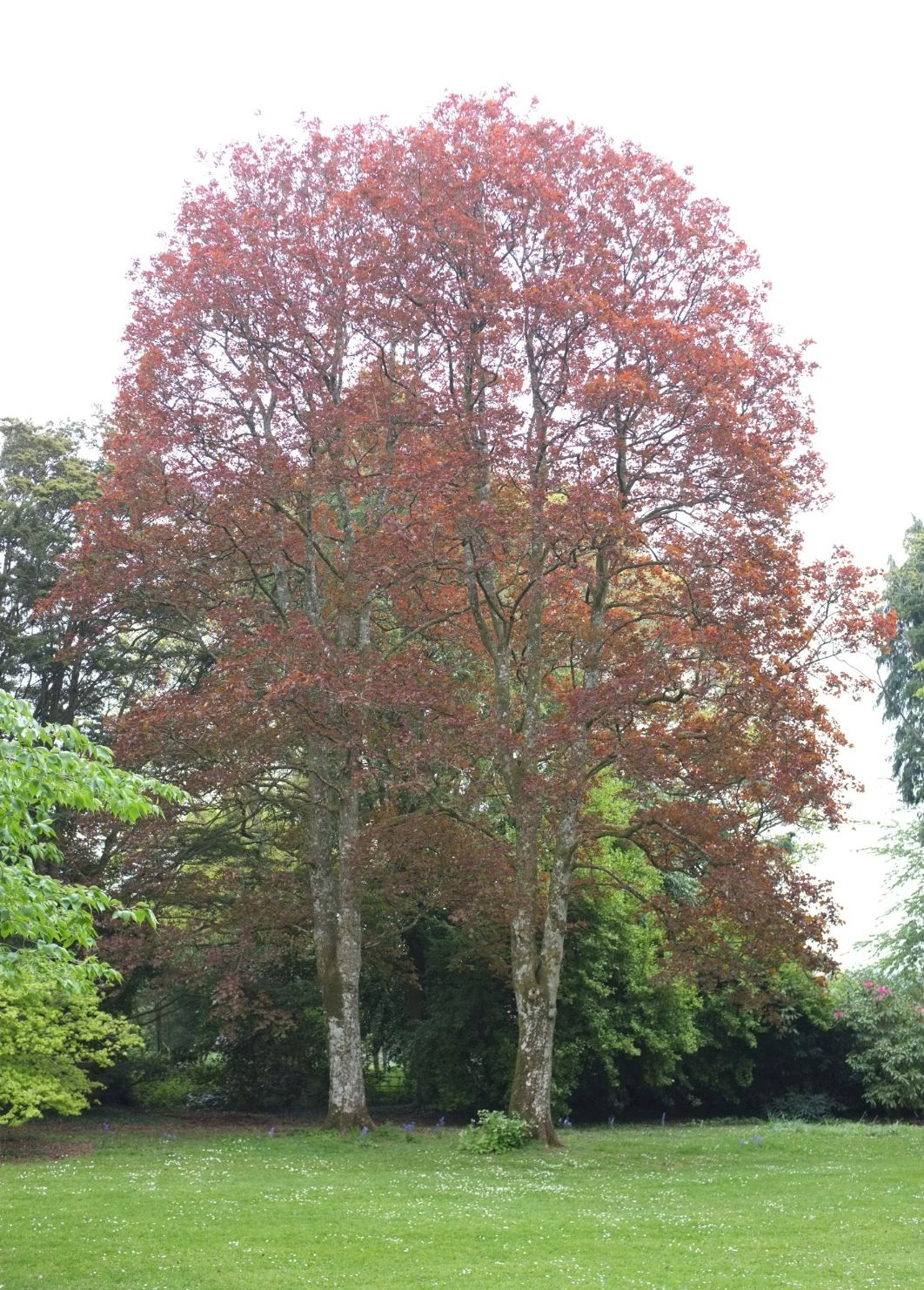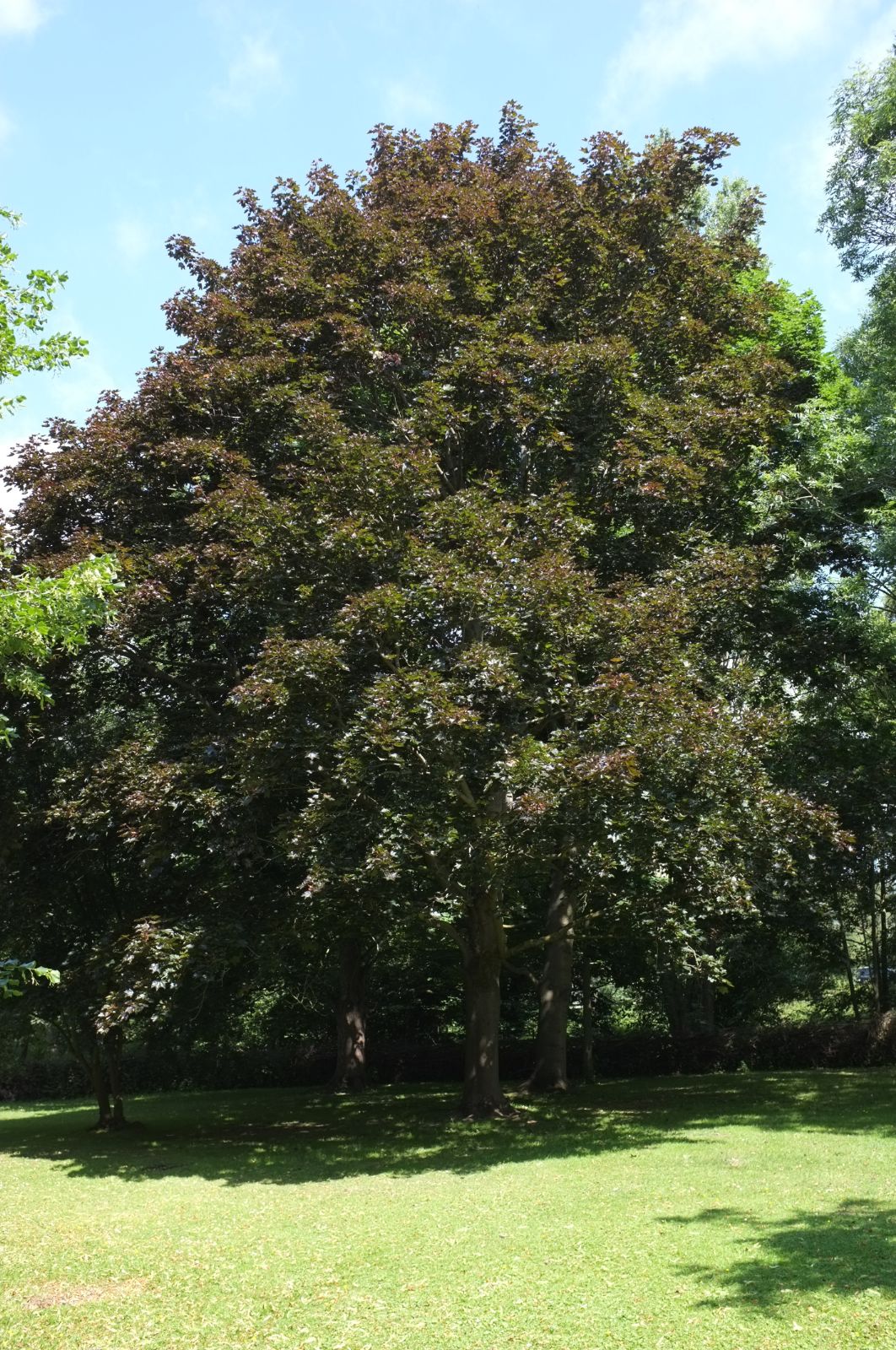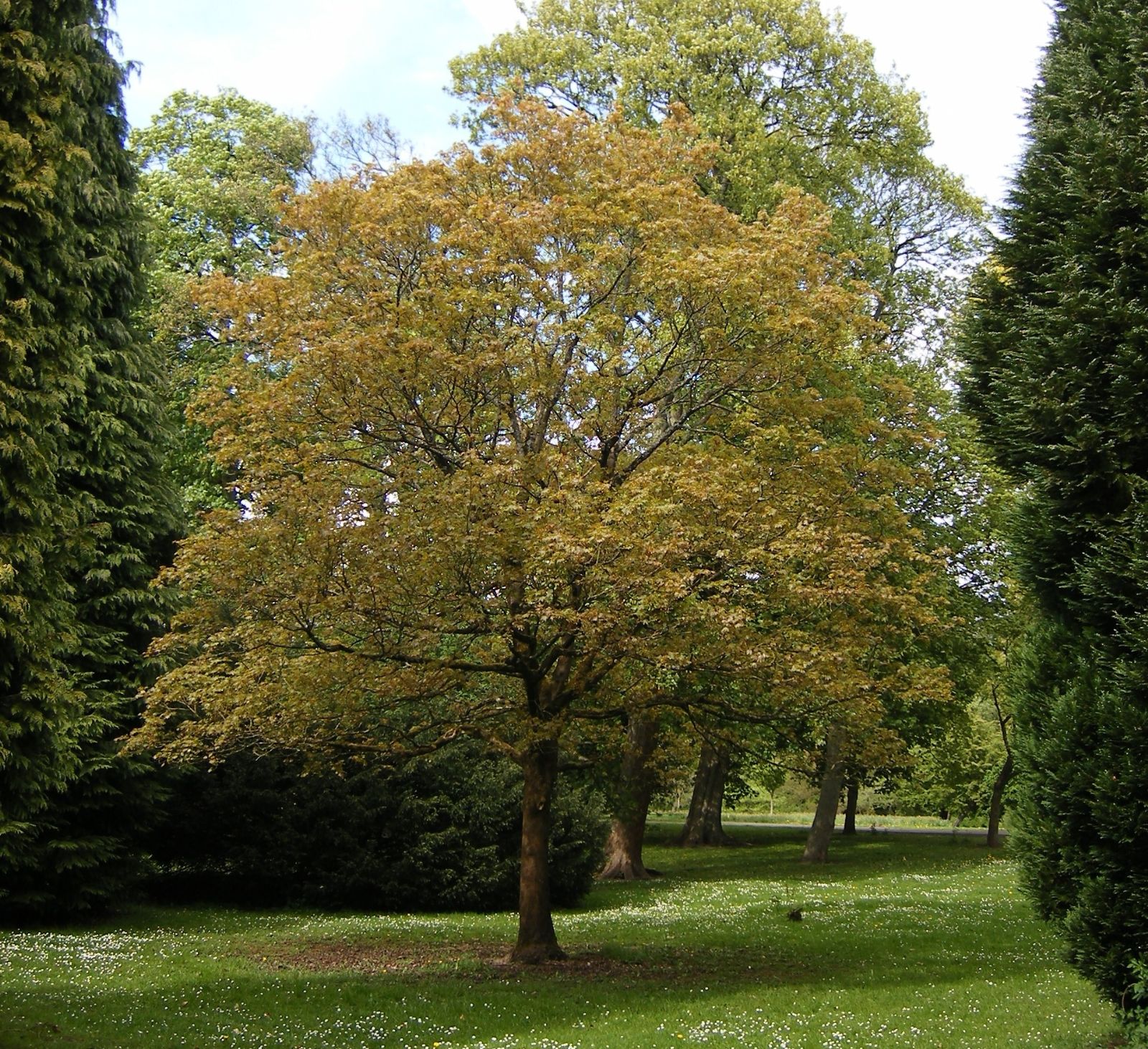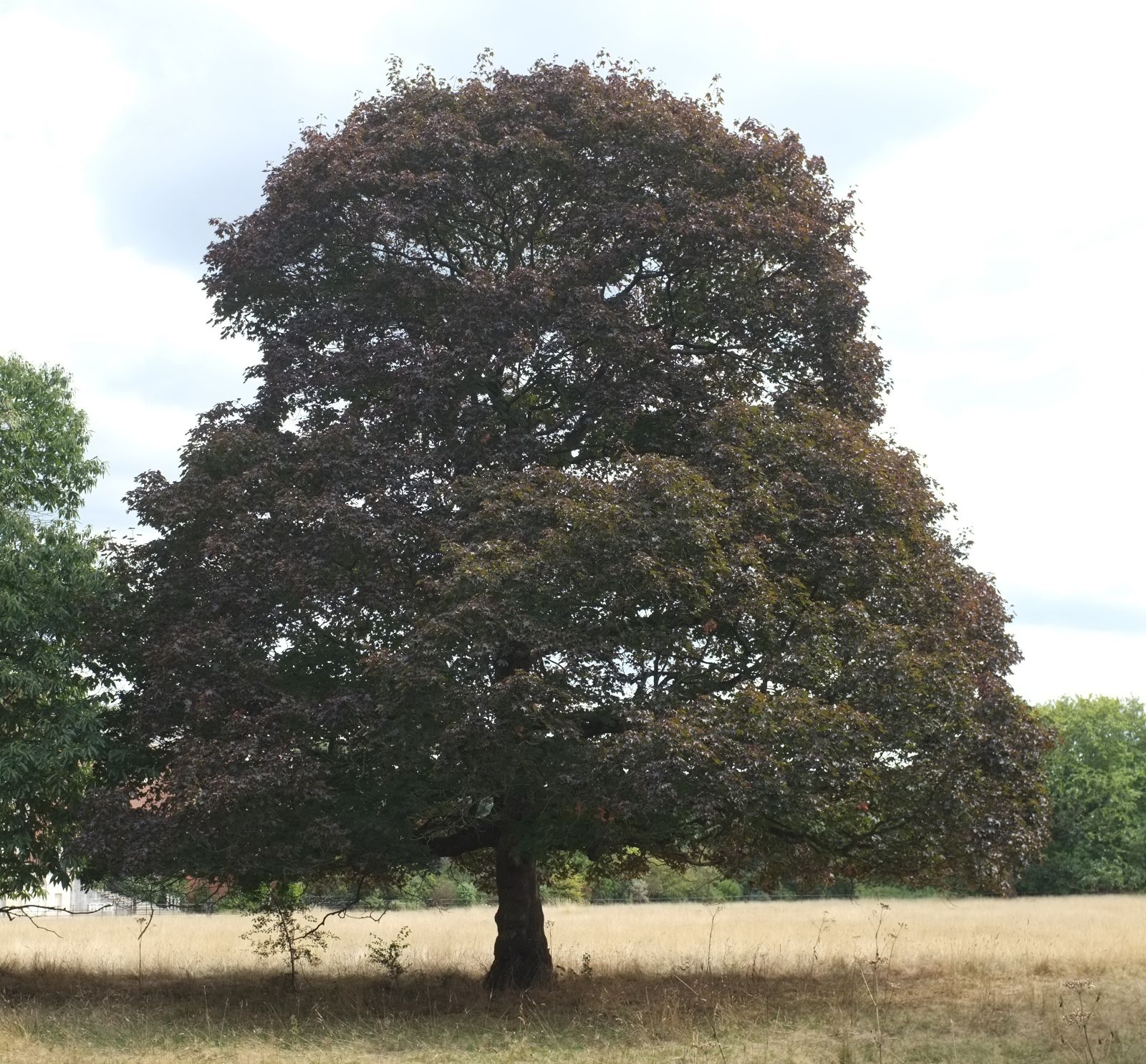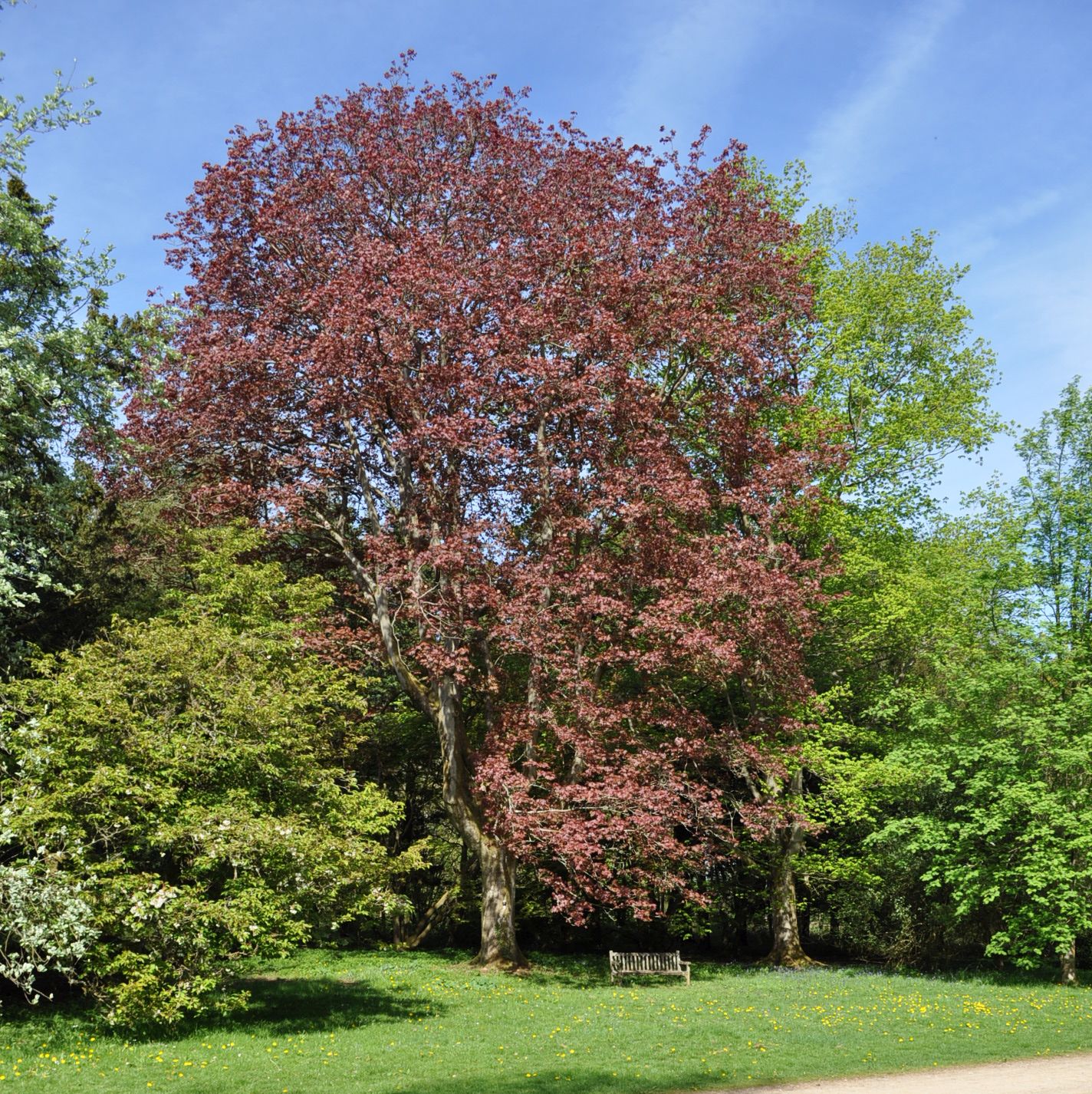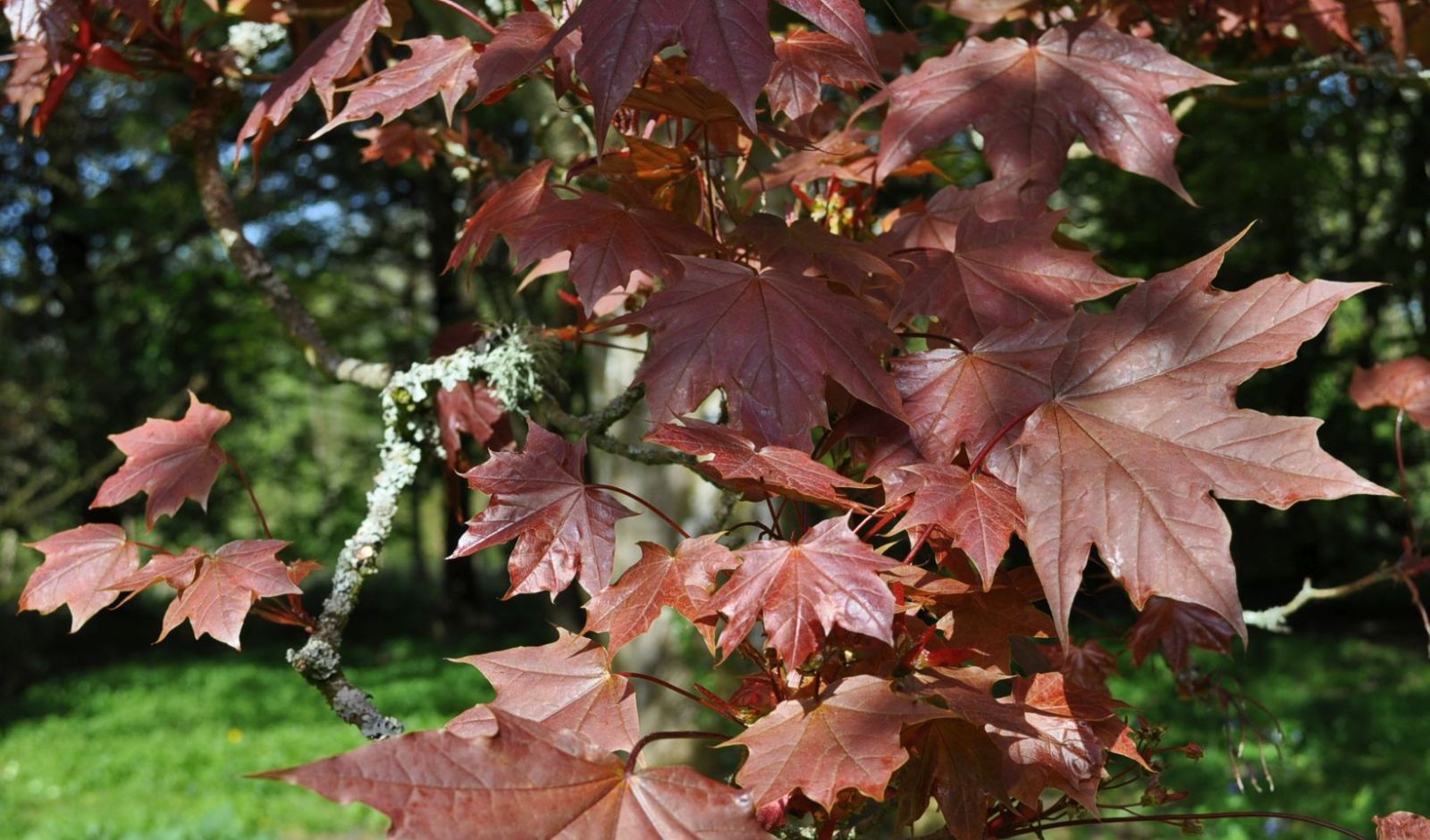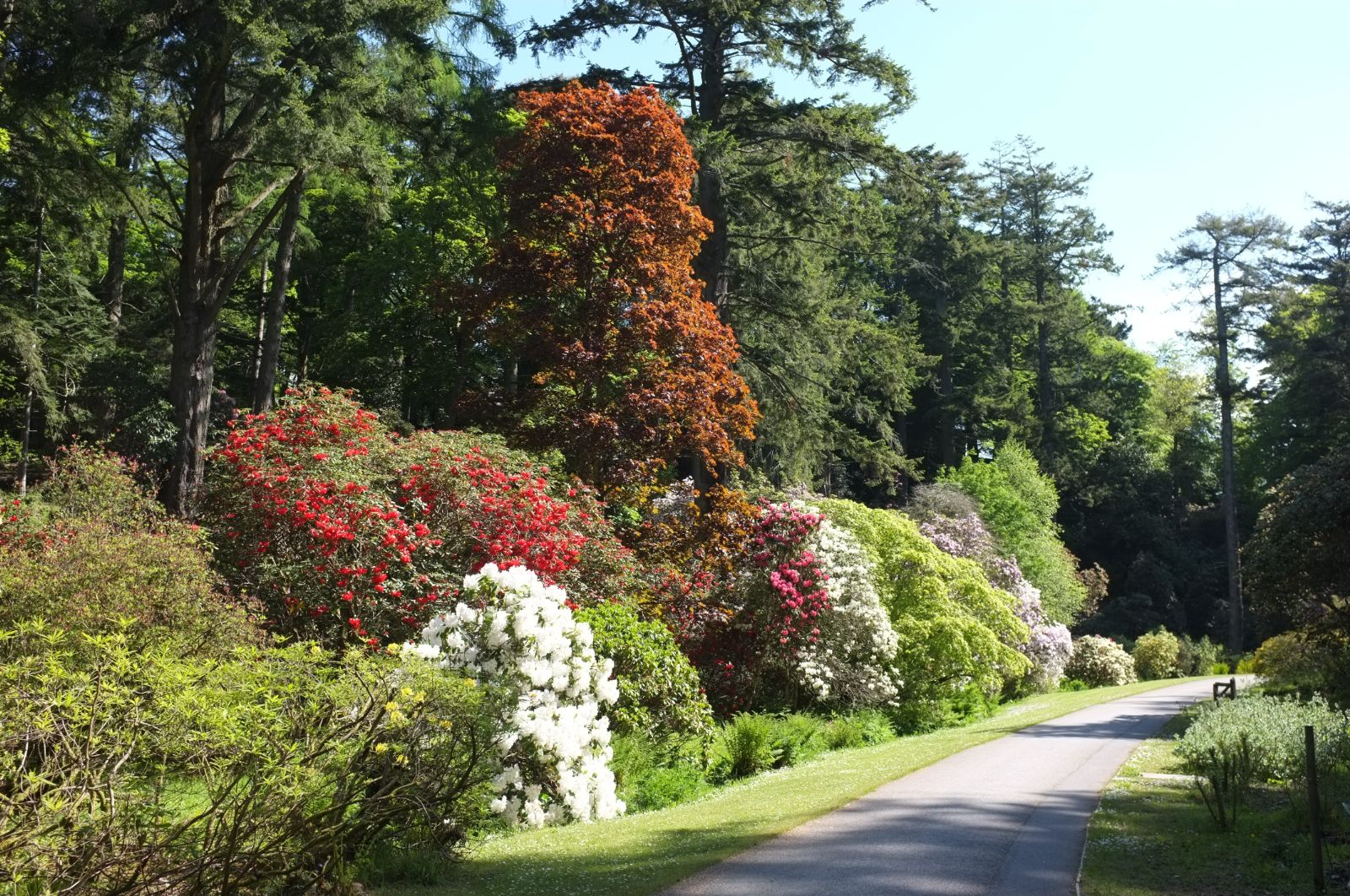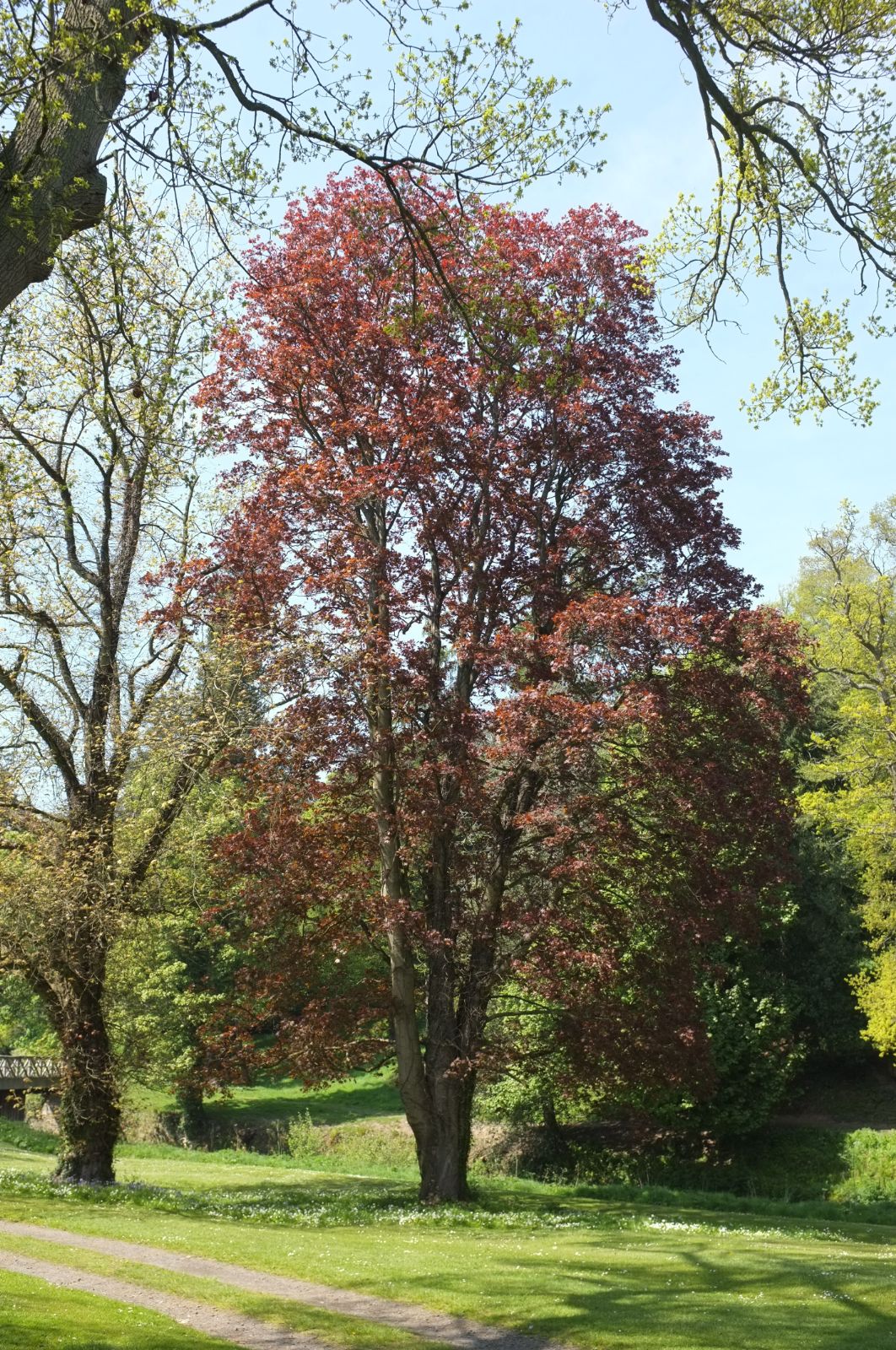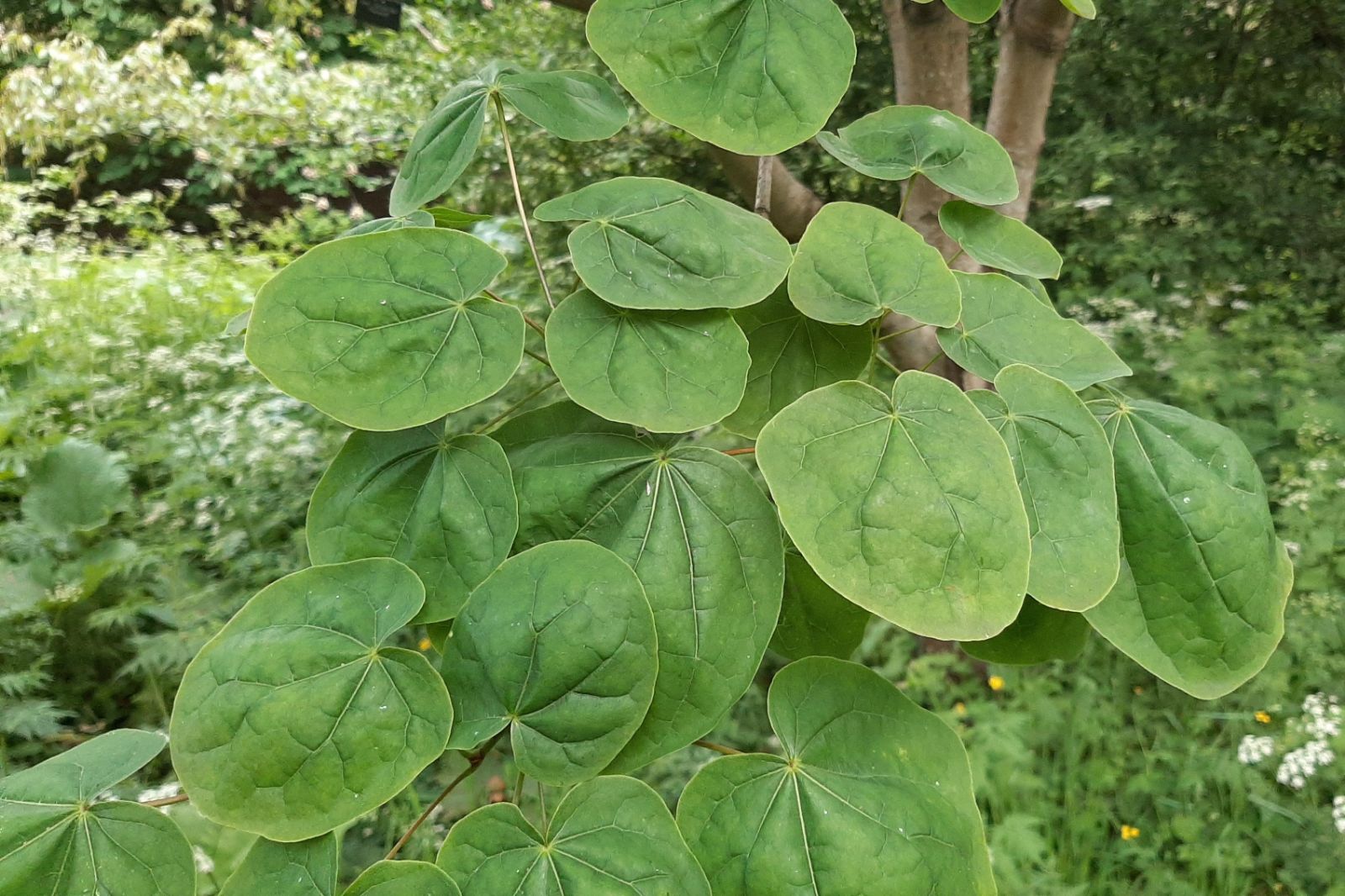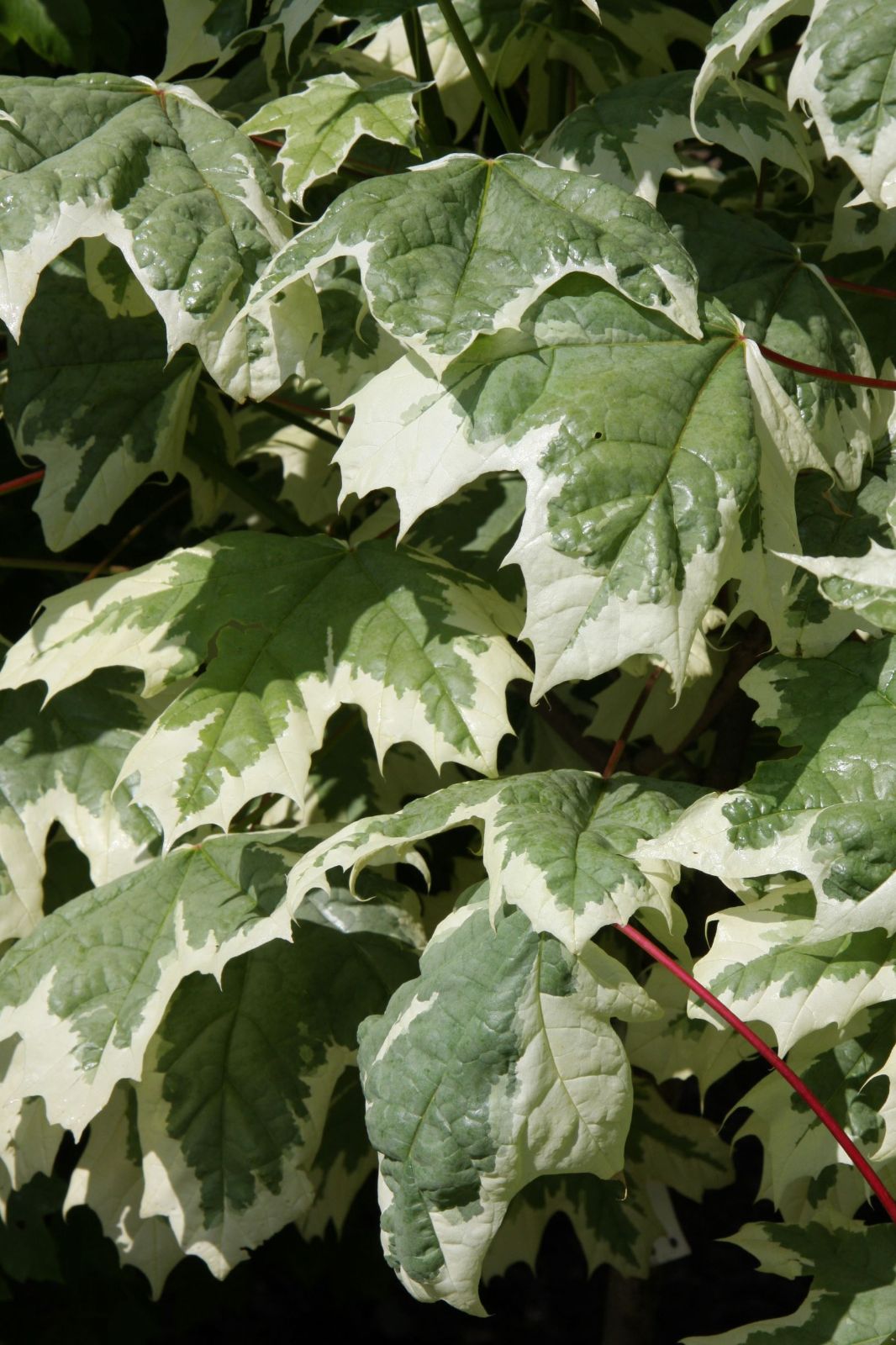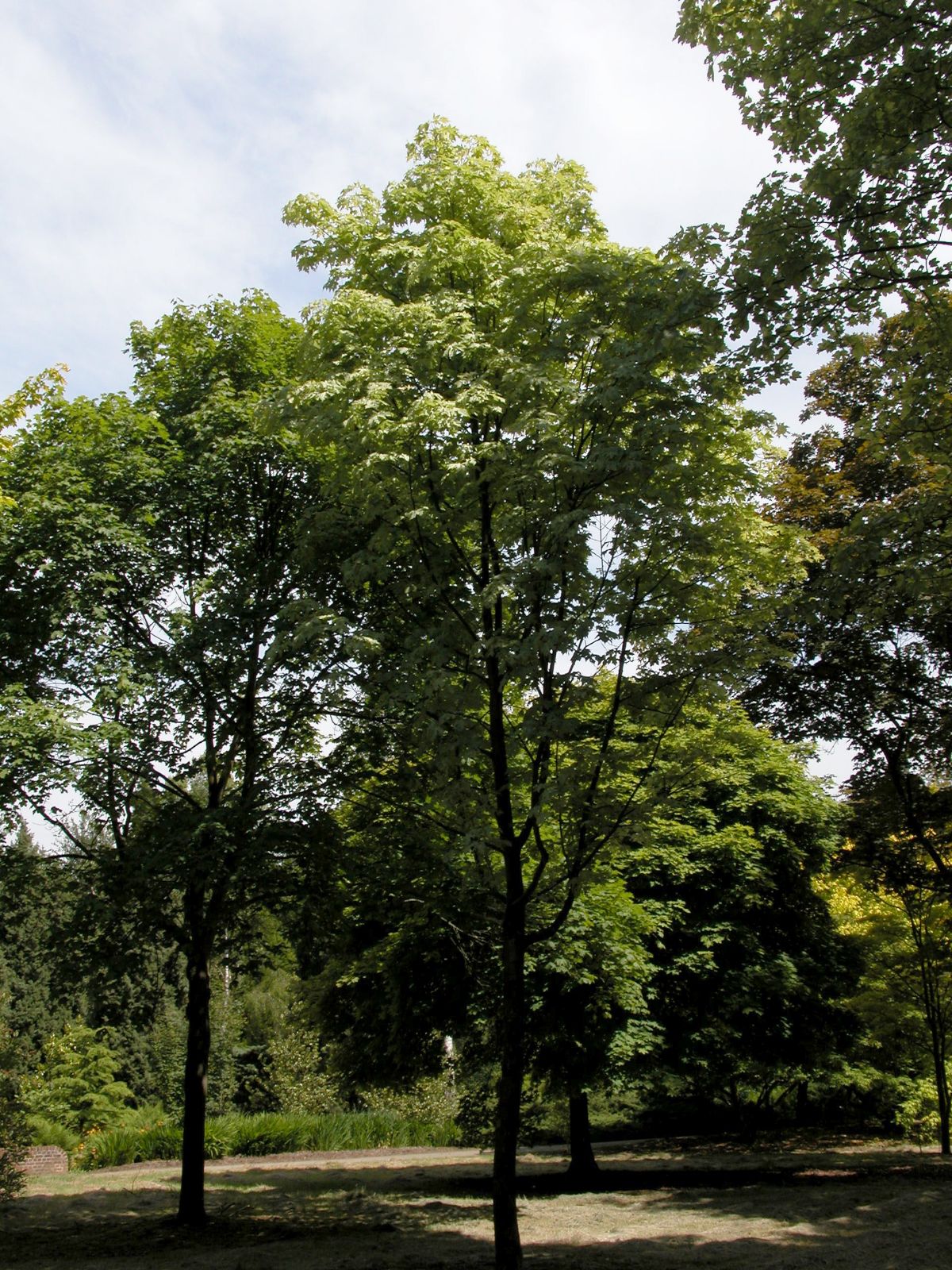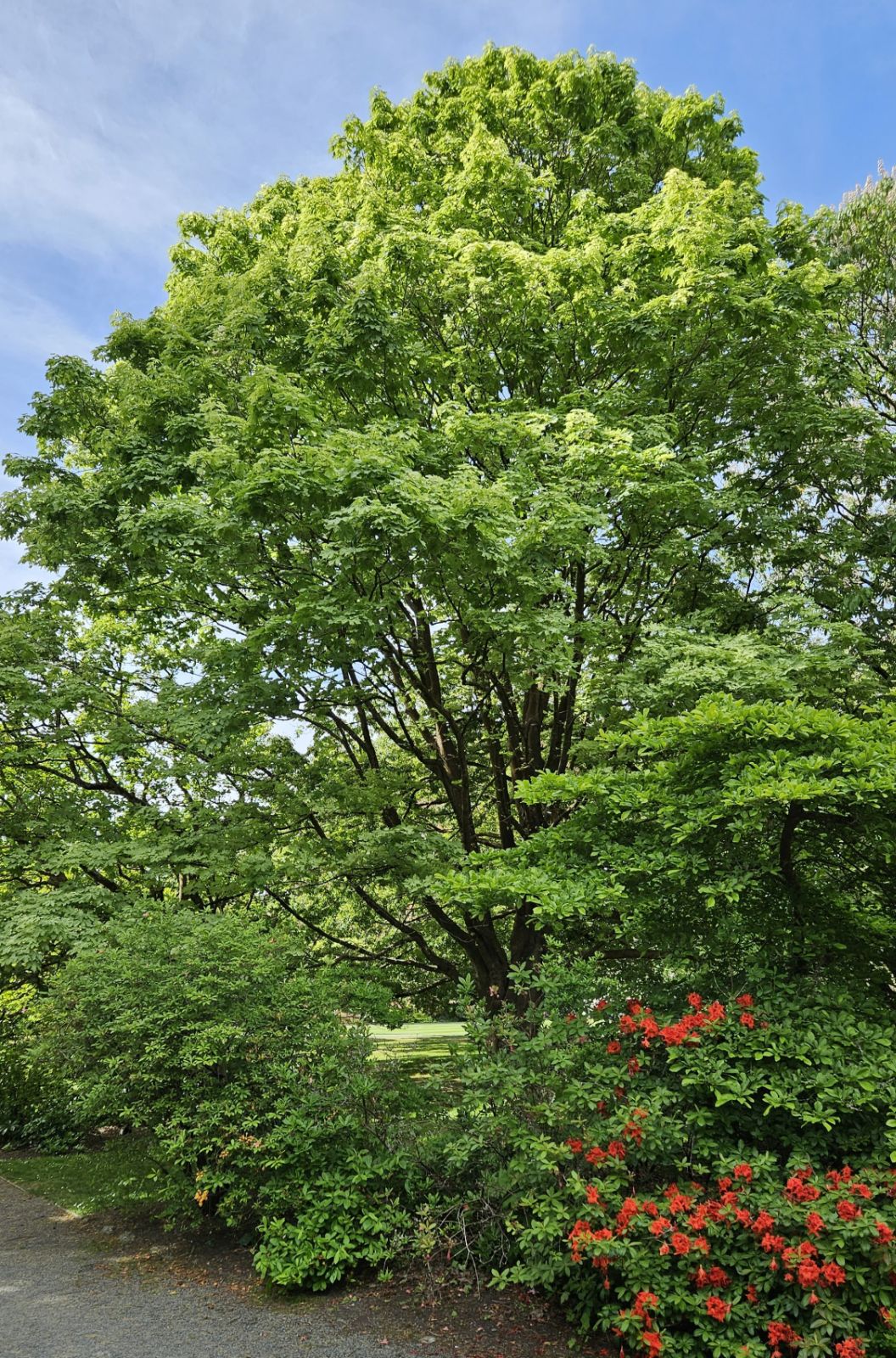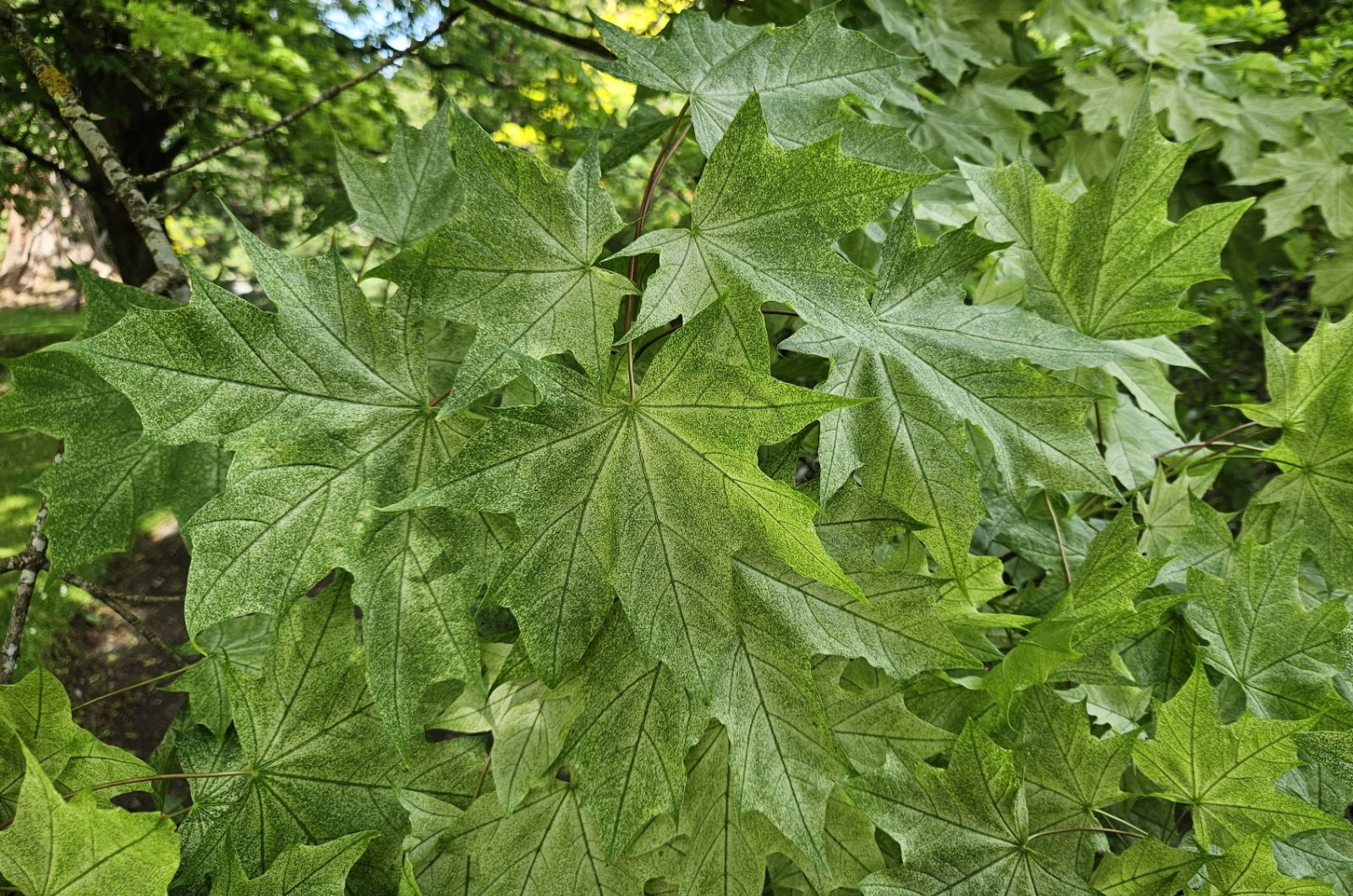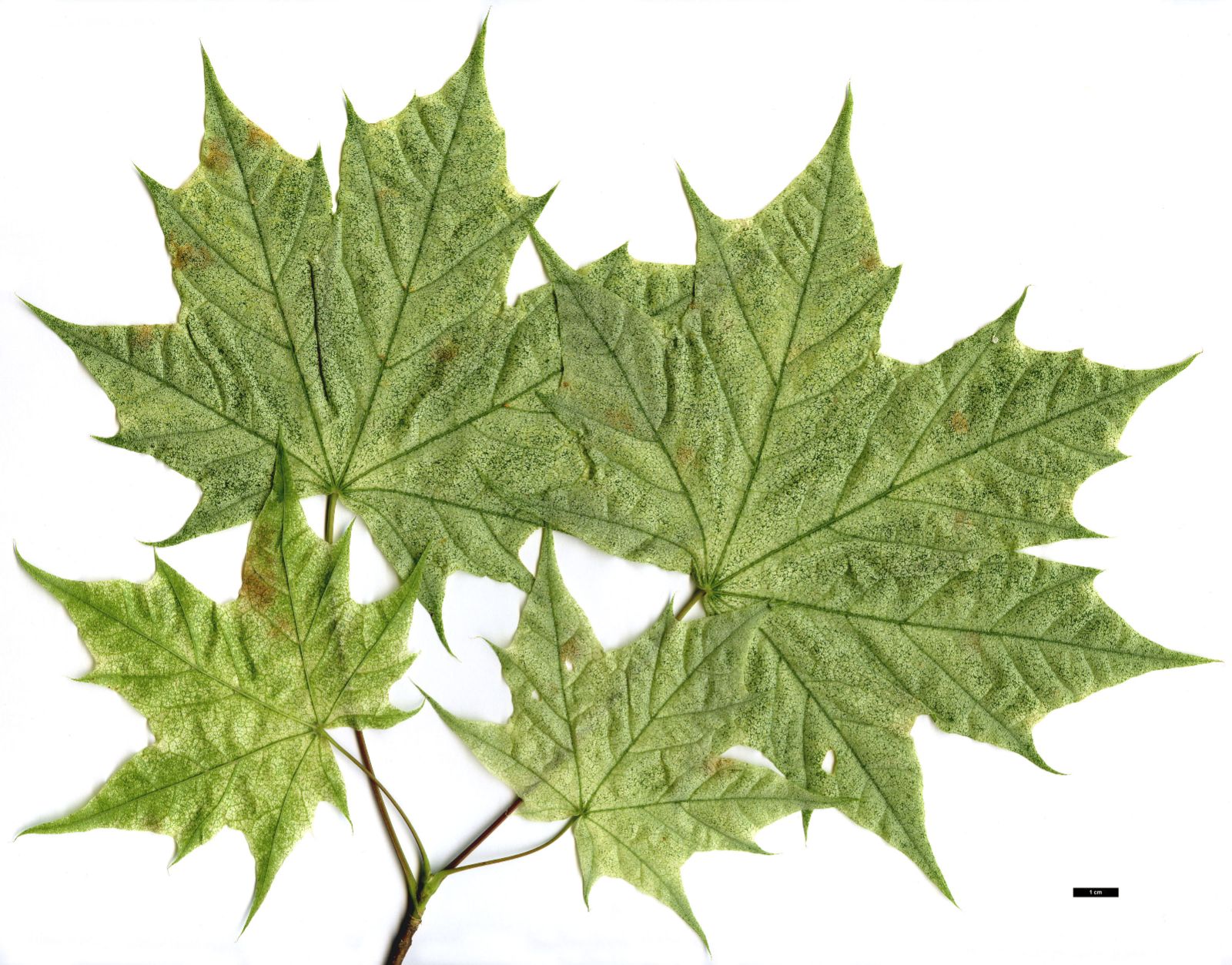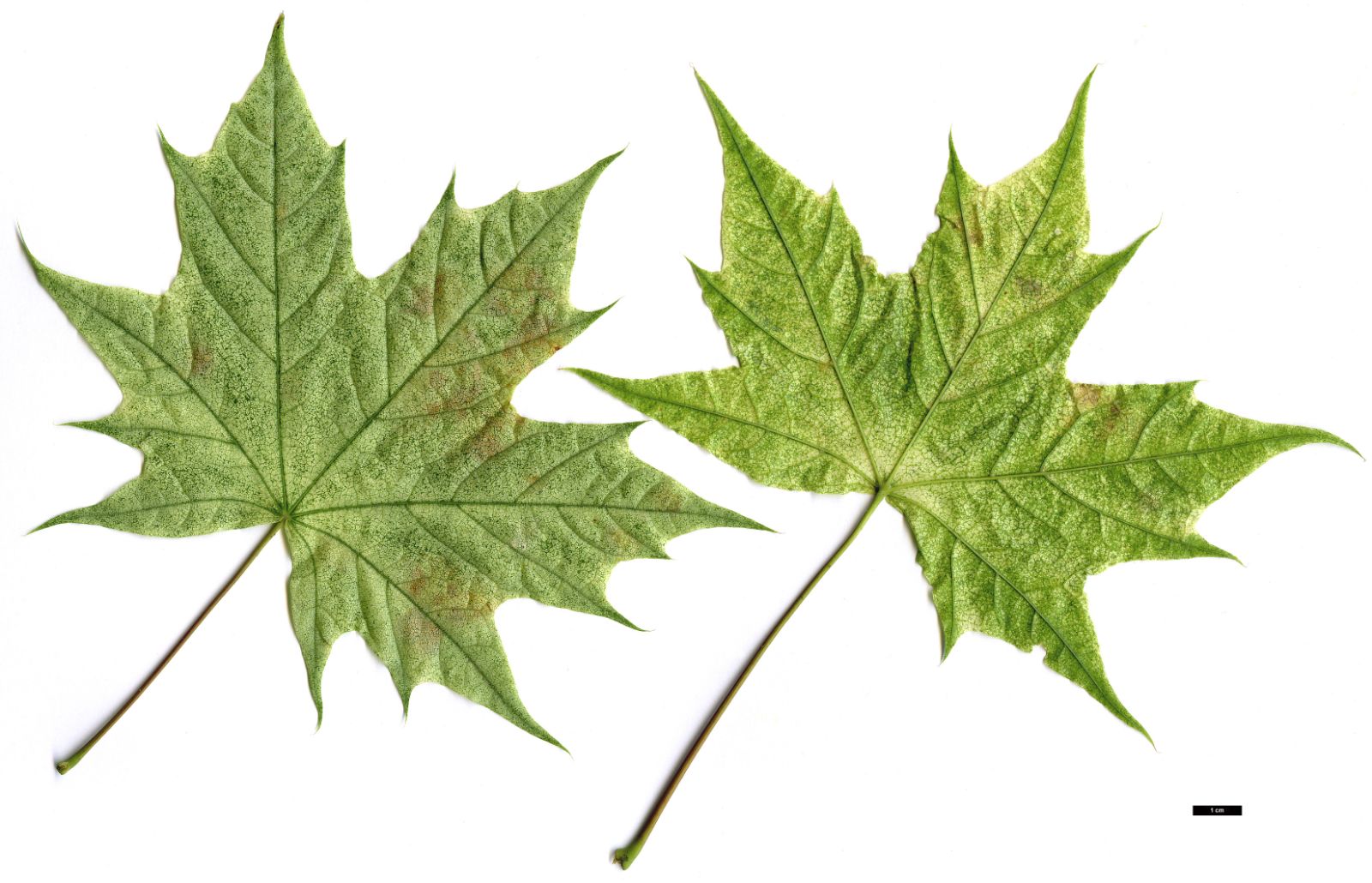Acer platanoides
Sponsor
Kindly sponsored by
The Wynkcoombe Arboretum
Credits
Article from Bean's Trees and Shrubs Hardy in the British Isles
Recommended citation
'Acer platanoides' from the website Trees and Shrubs Online (treesandshrubsonline.
Genus
Common Names
- Norway Maple
Infraspecifics
- 'Alberta Park'
- 'Almira'
- 'Aureo-marginatum'
- 'Autumn Red'
- 'Beskid'
- 'Bicolor'
- 'Buntzleri'
- 'Cavalier'
- 'Charles Joly'
- 'Chas. F. Irish'
- 'Cindy Lou'
- 'Cleveland'
- 'Cleveland Two'
- 'Columnarbroad'
- 'Columnare'
- 'Conzam'
- 'Crimson King'
- 'Crimson Sentry'
- 'Cucullatum'
- 'Deborah'
- 'Dieckii'
- 'Dilaceratum'
- 'Dissectum'
- 'Drummondii'
- 'Emerald Queen'
- 'Erectum'
- 'Eurostar'
- 'Ezestre'
- 'Faassen's Black'
- 'Fairview'
- 'Farlake's Green'
- 'Geneva'
- 'Globosum'
- 'Golden Globe'
- 'Goldsworth Purple'
- 'Green Lace'
- 'Jade Glen'
- 'Laciniatum'
- 'Lamis'
- 'Maculatum'
- 'Marit'
- 'McGill'
- 'Medzam'
- 'Meyering'
- 'National 2000'
- 'Natorp'
- 'Oekonomierat Stoll'
- 'Olmsted'
- 'Oregon Pride'
- 'Palmatifidum'
- 'Pond'
- 'Prairie Splendor'
- 'Prigo'
- 'Pyramidale Nanum'
- 'Reitenbachii'
- 'Royal Crimson'
- 'Royal Red'
- 'Rubrum'
- 'Scanlon Gold'
- 'Schwedleri'
- 'Stand Fast'
- 'Summershade'
- 'Superform'
- 'Tharandt'
- 'Ulmers Sensation'
- 'Undulatum'
- 'Walderseei'
Other taxa in genus
- Acer acuminatum
- Acer amplum
- Acer argutum
- Acer barbinerve
- Acer buergerianum
- Acer caesium
- Acer calcaratum
- Acer campbellii
- Acer campestre
- Acer 'Candy Stripe'
- Acer capillipes
- Acer cappadocicum
- Acer carpinifolium
- Acer 'Cascade'
- Acer caudatum
- Acer ceriferum
- Acer chapaense
- Acer chienii
- Acer circinatum
- Acer cissifolium
- Acer × conspicuum
- Acer cordatum
- Acer coriaceifolium
- Acer × coriaceum
- Acer crataegifolium
- Acer davidii
- Acer diabolicum
- Acer distylum
- Acer divergens
- Acer duplicatoserratum
- Acer elegantulum
- Acer erianthum
- Acer 'Esk Flamingo'
- Acer fargesii
- Acer fenzelianum
- Acer flabellatum
- Acer forrestii
- Acer franchetii
- Acer × freemanii
- Acer fulvescens
- Acer 'Gimborn'
- Acer ginnala
- Acer glabrum
- Acer 'Gold Coin'
- Acer granatense
- Acer grandidentatum
- Acer griseum
- Acer heldreichii
- Acer henryi
- Acer × hillieri
- Acer hookeri
- Acer hyrcanum
- Acer japonicum
- Acer kawakamii
- Acer komarovii
- Acer laevigatum
- Acer laurinum
- Acer laxiflorum
- Acer lobelii
- Acer longipes
- Acer macrophyllum
- Acer mandshuricum
- Acer maximowiczianum
- Acer maximowiczii
- Acer metcalfii
- Acer miaotaiense
- Acer micranthum
- Acer 'Mindavi'
- Acer 'Minorient'
- Acer miyabei
- Acer miyabei × campestre
- Acer monspessulanum
- Acer morifolium
- Acer 'Mozart'
- Acer oblongum
- Acer obtusifolium
- Acer okamotoanum
- Acer oliverianum
- Acer opalus
- Acer orientale
- Acer palmatum
- Acer papilio
- Acer pauciflorum
- Acer pectinatum
- Acer pensylvanicum
- Acer pentaphyllum
- Acer pentapotamicum
- Acer pictum
- Acer pilosum
- Acer pinnatinervium
- Acer platanoides × amplum
- Acer platanoides × truncatum
- Acer × pseudoheldreichii
- Acer pseudoplatanus
- Acer pseudosieboldianum
- Acer pubinerve
- Acer pycnanthum
- Acer rubescens
- Acer rubrum
- Acer rufinerve
- Acer saccharinum
- Acer saccharum
- Acer sempervirens
- Acer 'Serpentine'
- Acer serrulatum
- Acer shenkanense
- Acer sieboldianum
- Acer sikkimense
- Acer 'Silver Cardinal'
- Acer 'Silver Ghost'
- Acer sinense
- Acer sinopurpurascens
- Acer spicatum
- Acer stachyophyllum
- Acer taronense
- Acer tataricum
- Acer tegmentosum
- Acer tenellum
- Acer tetramerum
- Acer tibetense
- Acer tonkinense
- Acer triflorum
- Acer truncatum
- Acer tschonoskii
- Acer turkestanicum
- Acer tutcheri
- Acer ukurunduense
- Acer velutinum
- Acer wardii
- Acer 'White Tigress'
- Acer wilsonii
- Acer × zoeschense
A deciduous tree to 30(–38) m. Bark greenish-grey when young, turning darker and fissuring longitudinally with age. Branchlets glabrous, purplish-red or greenish, turning darker and woody by the end of the first year. Buds, ovoid, with 5 to 8 pairs of imbricate scales. Leaves broadly pentagonal in outline, base cordate to truncate, 5– to 7-lobed, (8–)10–25 × (5–)7–14(–16) cm, lobes apically acute or acuminate, margins remotely dentate with acuminate teeth, upper surface bright green, lower surface glossy green, glabrous except for tufts in vein axils; petiole 6–20 cm long, green, glabrous, often grooved, broadest at base, exuding a milky sap when broken; autumn colours yellow to purple. Inflorescence terminal, corymbose, erect, 10–30 flowered. Flowers yellowish-green, 5-merous, usually dioecious, pedicels long and slender, sepals oblong to obovate, petals oblong to ovate, as long, or longer than sepals, stamens 8, inserted in the middle or outside the nectar disc. Samaras 3.5–5(–7) cm long, wings spreading nearly horizontally. Nutlets flattened. Flowering in April, before unfolding leaves, fruiting in October. (Rehder 1927–1940; van Gelderen et al. 1994; Güemes Heras & Sánchez Gómez 2015).
Distribution Albania Andorra Armenia Austria Azerbaijan Belarus Bosnia and Herzegovina Bulgaria Croatia Czechia Estonia Finland France Georgia Germany Greece Hungary Iran Italy Latvia Lithuania North Macedonia Moldova Monaco Montenegro Norway Poland Romania Russia San Marino Slovakia Slovenia Spain Sweden Switzerland Turkey Ukraine
Described by Bean (1976, p. 223) as ‘one of the handsomest, hardiest, and most vigorous of introduced trees’, Acer platanoides has unsurprisingly also become one of the most planted trees, particularly in urban settings, but is at its finest when allowed plenty of space in parkland. Hugely versatile and reliable on almost any soil, it is also tolerant of atmospheric pollution. It is most attractive in early spring, when dense corymbs of yellow-green flowers are produced in abundance, and it becomes a magnificent feature in the landscape. Its leaves turn a good butter-yellow or orange in autumn, and although its coloration scarcely matches the consistent tones displayed by many of its relatives, it again becomes very conspicuous.
The widely used common name of Norway Maple is bemoaned by Mitchell (1996), as its occurence in Norway forms only a tiny part of its vast native range (not unlike Scots Pine (Pinus sylvestris), which extends east as far as north westernmost China!). Mitchell does not, however, offer an alternative, and at least it has not suffered the same confusion as its fellow European native A. pseudoplatanus, whose sycamore moniker is referable also to Platanus occidentalis of eastern North America and, with the variant spelling ‘sycomore’, the Ficus of biblical fame.
The earliest record of its cultivation in Britain dates from 1683, when George Sutherland included it in a list of the trees he moved from Holyrood Palace to a new garden close to Edinburgh Castle, where Waverley Station now stands (Mitchell 1996). Incidentally, these two locations were, respectively, the first and second sites of the institution now known as the Royal Botanic Garden Edinburgh, which has only been at its current location since 1820, having moved three times since it was founded at Holyrood in 1670. How long A. platanoides was in cultivation before the first garden move it is not known, though it is not thought to have been common (Mitchell 1996), and it is telling that Sutherland took the trouble to take it with him.
Norway Maple is not considered particularly long-lived, and certainly not as long-lived as A. pseudoplatanus. Old plants at Westonbirt Arboretum, Gloucestershire, presumed original arboretum plantings have been lost in recent years, natural attrition somewhat accelerated by honey fungus (Armillaria spp.) infection, though the largest example there, on Pool Avenue, remains in reasonable health and measured 26 m tall in 2014 (The Tree Register 2018). Mitchell (1996) suggested that this tree could date from 1855 (which would make it the oldest known), but not before, as the arboretum was developed largely from that date onwards. The UK and Ireland Champion, growing on a steep bank in Prior Park, Bath, measured an impressive 36.1 m high in 2012 (The Tree Register 2018), making it the tallest example of the species in cultivation (wild examples in Russia and Poland have been measured at 37.9 and 37.2 m, respectively) (monumentaltrees.com 2018).
The introduction of the species to North America is credited to either John or William Bartram (Nowak 1990; Jacobson 1996), who offered it in 1756 after Philip Miller sent seed from England. An alternative date of 1784 is stated by some authors (Jacobson 1996), with fellow Pennsylvanian William Hamilton importing a number of tree species, including A. platanoides, at around that time (Spongberg 1990). Its aforementioned attributes were soon noted by growers and it became increasingly popular. As urban expansion took off in North America the species quickly found favour with urban planners and it became even more widely planted, but its success led to an over-reliance on the species and consequent overplanting (Dirr & Warren 2019). Furthermore, as such a prolific and aggressive seeder, in recent years it has become a byword for invasiveness with the ecological threat in natural areas in parts of the eastern United States and adjoining regions of Canada widely highlighted. These tendencies render it an inappropriate planting choice in these regions and it is flagged as ‘Not recommended’ by The Morton Arboretum (2020) and appears on at least one gardening website list of ‘most hated plants’ (Ecosystem Gardening 2020). It has been suspected to have allelopathic properties (though this appears as yet unproven (Rich 2004)) and as it forms dense thickets in forest understoreys this prohibits the establishment of native plants within these ecosystems. In the warmer, drier climates of the southern States it is not considered invasive and breeders are seeking to develop seedless selections, though diversification of species selection is regardless advocated by many, for example Dirr & Warren (2019).
It also naturalises in parts of Britain. Seedlings are easily found in many areas, though its invasive tendencies, thus far, appear easier to keep in check here, and it continues to be a popular subject of the nursery trade. The species is prone to forming girdling roots while it can become infected with verticillium wilt and anthracnose (The Morton Arboretum 2020). Tar spot of maple is also common, though this causes little long-term harm. It is also subject to grey squirrel damage. Numerous cultivars of the species have been selected, for both form and foliage characters, while hybrids with other section Platanoidea species A. amplum and A. truncatum are also cultivated. A great many of its selections, including those of its hybrids, were introduced first in North America, dating from after the second world war (van Gelderen et al. 1994). Several of these were introduced by E.H. Scanlon, of Ohio, whose cultivars are now widely grown on both sides of the Atlantic and are collectively known as the Scanlon Tailored Trees (van Gelderen et al. 1994, p. 308).
'Alberta Park'
RHS Hardiness Rating: H7
Introduced in around 1989 by Ferrucci Nurseries of New Jersey (van Gelderen et al. 1994; Jacobson 1996), Acer platanoides ‘Alberta Park’ is exceptionally hardy and vigorous, forming a straight-trunked tree with a balanced crown (Jacobson 1996). Its leaves are tough and leathery textured (van Gelderen et al. 1994).
'Almira'
RHS Hardiness Rating: H7
Raised and introduced by E.H. Scanlon of Cleveland, Ohio, where Acer platanoides ‘Almira’ was found growing on a street in 1947. Described in 1951 and introduced in 1955–1956, it is a small tree with a flat-topped crown and shiny leaves (van Gelderen et al. 1994; Jacobson 1996).
'Aureo-marginatum'
RHS Hardiness Rating: H7
A form described by Milford in 1874, Acer platanoides ‘Aureo-marginatum’ has yellow leaf margins, though is reportedly no longer in cultivation (van Gelderen et al. 1994). Bean (1976a) states that it is often three-lobed.
'Autumn Red'
RHS Hardiness Rating: H7
A cultivar likely of New Zealand origin, Acer platanoides ‘Autumn Red’ has a compact form, with bronze to red new growth and orange to red autumn colour (Hatch 2018–2020).
'Beskid'
RHS Hardiness Rating: H7
Originating in a batch of seedlings raised for use as rootstocks in around 1998, Acer platanoides ‘Beskid’ was first recorded in cultivation at the Maria and Janusz Szewczyk Ornamental Nursery, Poland in 2005. It is a tree of very slender form but vigorous growth, with short internodes and strongly curled, claw-like leaves (Marosz & Szewczyk 2009).
'Bicolor'
RHS Hardiness Rating: H7
A form named by Schwerin in 1893, Acer platanoides ‘Bicolor’ has leaves speckled with yellow and cream dots (van Gelderen et al. 1994; Hatch 2018–2020). It was thought no longer to be in cultivation by van Gelderen et al. (1994).
'Buntzleri'
Synonyms / alternative names
Acer platanoides 'Buntzelli'
Acer platanoides 'Buntzelii'
RHS Hardiness Rating: H7
Named for Max Buntzel, though seemingly incorrectly spelt, Acer platanoides ‘Buntzleri’ is a German selection described in 1880 and notable for its reddish-brown leaves that are flecked with orange, turning golden yellow in autumn (van Gelderen et al. 1994).
'Cavalier'
RHS Hardiness Rating: H7
A form selected by E.H. Scanlon, described in 1969, with a round and compact crown (van Gelderen et al. 1994). Jacobson quotes an unnamed source as calling it ‘the finest grower of any’ (Jacobson 1996, p. 41), while van Gelderen et al. (1994) considered it deserving of attention.
'Charles Joly'
Synonyms / alternative names
Acer platanoides 'Red Weeping Norway Maple'
Acer platanoides 'Karel Sjolivette'
RHS Hardiness Rating: H7
An interesting cultivar of unknown origin, though known from before 1985, Acer platanoides ‘Charles Joly’ is a tree of irregular, almost pendulous form. It has deeply incised leaves that are purple when young, turning green later. (van Gelderen et al. 1999).
'Chas. F. Irish'
Synonyms / alternative names
Acer platanoides 'Charles F. Irish'
Acer platanoides 'Irish'
RHS Hardiness Rating: H7
Acer platanoides ‘Chas. F. Irish’ was described by E.H. Scanlon in 1951, who named it for a Charles F. Irish of Cleveland, Ohio. It is one of the largest cultivars of the species, with upswept branches and an open crown, attaining 20 m, though otherwise scarcely distinguishable from the typical form of the species. (van Gelderen et al. 1994).
'Cindy Lou'
RHS Hardiness Rating: H7
Acer platanoides ‘Cindy Lou’ is a slow-growing, extreme dwarf, though erect form, with very small leaves (van Gelderen & van Gelderen 1999).
'Cleveland'
RHS Hardiness Rating: H7
A tightly-crowned form with young leaves marbled with red, Acer platanoides ‘Cleveland’ attains almost the full size of the species and was raised and introduced by E.H. Scanlon in 1948 (Jacobson 1996; van Gelderen & van Gelderen 1999). It is suitable for narrow streets and small parks (van Gelderen et al. 1994).
'Cleveland Two'
RHS Hardiness Rating: H7
An improvement on ‘Cleveland’, E.H. Scanlon first observed this form in 1958 and introduced it in 1960, formally describing it in 1973 (van Gelderen et al. 1994; Jacobson 1996). Compared with ‘Cleveland’, Acer platanoides ‘Cleveland Two’ has an improved branching habit, with branches closely spaced forming a very dense, compact crown. (Jacobson 1996).
'Columnarbroad'
Synonyms / alternative names
Parkway®
RHS Hardiness Rating: H7
Introduced by J.F. Schmidt and Son, Oregon, c. 1970 (Jacobson 1996; van Gelderen & van Gelderen 1999), Acer platanoides ‘Columnarbroad’ is unsurprisingly a broader form of ‘Columnar’. It is also faster growing. It is described as one of the ‘best trees for street planting’ by van Gelderen et al. (1994).
'Columnare'
RHS Hardiness Rating: H7
The leaves of Acer platanoides ‘Columnare’ are smaller and shallower-lobed than in the type, while its branches are erect and its habit is columnar. It was raised in the nursery of Simon-Louis at Plantières, near Metz, in 1855, and became available commercially from 1878–1879 (Bean 1976; Jacobson 1996). Two clones have been sold under this name, the second named ‘Columnarbroad’ (Jacobson 1996).
'Conzam'
Synonyms / alternative names
Conzam™
RHS Hardiness Rating: H7
An offspring of ‘Crimson King’ (Hatch 2018–2020), Acer platanoides ‘Conzam’ has columnar form with paler foliage than ‘Crimson King’, being red-purple in spring but becoming duller in summer. It is faster growing than the similar ‘Crimson Sentry’ (Dirr & Warren 2019).
'Crimson King'
Awards
Award of Garden Merit
RHS Hardiness Rating: H7
One of the best of all the purple-leaved selections, Acer platanoides ‘Crimson King’ grows almost to the size of the typical form of the species, retaining its rich purple foliage throughout the season, though offering little in the way of autumn colour. It can struggle in summer heat however, when its growth often slows or stops altogether (Dirr & Warren 2019). It is also attractive early in the season, when its yellow and purplish flowers are produced in abundance, from which relatively few fruits are formed. It originated as a seedling of ‘Schwedleri’ (Bean 1976a; Jacobson 1996), selected in 1937 at the nursery of Tips Brothers, Belgium, alongside others including ‘Faassen’s Black’ (van Gelderen et al. 1994). The seedling was taken to Barbier nursery, France, raised there and introduced, seemingly first in the United States, by Gulfstream Nursery, Virginia in 1947 (van Gelderen et al. 1994; Jacobson 1996). It is commonly grown in parks and gardens and also used as a street tree, though is suceptible to disfiguring powdery mildew (van Gelderen & van Gelderen 1999). It is similar to ‘Goldsworth Purple’, ‘Royal Red’ and ‘Royal Crimson’, the latter perhaps an offspring of ‘Crimson King’, from which various other selection are derived.
'Crimson Sentry'
RHS Hardiness Rating: H7
Described as a tree-like shrub by van Gelderen & van Gelderen (1999), though capable of attaining larger stature, Acer platanoides ‘Crimson Sentry’ takes a narrow columnar form, broadening with age. An offspring of ‘Crimson King’, it was raised in 1970 at the nursery of A. McGill and Son, Oregon, and introduced commercially in the early part of that decade (Jacobson 1996; van Gelderen & van Gelderen 1999). Its leaves are smaller than typical for the species and their purple colouration becomes slightly paler as the season progresses while, like ‘Crimson King’, it is susceptible to powdery mildew (van Gelderen & van Gelderen 1999).
'Cucullatum'
Common Names
Crimpleaf Norway Maple
RHS Hardiness Rating: H7
Named from France in 1866 by Élie-Abel Carrière (van Gelderen & van Gelderen 1999), Acer platanoides ‘Cucullatum’ has curiously crinkled, fan-shaped leaves, with lobes often lying on top of one another and nearly orbicular in outline. Described as a tree of around 10 m by van Gelderen et al. (1994), trees at Westonbirt Arboretum, Gloucestershire, and elsewhere, have been measured as well over twice this tall. Those at Westonbirt are believed to have been received from Van Volxem’s nurseries, Belgium, in 1879 (Bean 1976a). Arriving in North America in 1893, it has been available commercially there since around 1907 (Jacobson 1996).
'Deborah'
RHS Hardiness Rating: H7
A seedling of ‘Schwedleri’ raised and named by Connor Nurseries, British Columbia in 1975, Acer platanoides ‘Deborah’ has pale purple leaves that turn to green in summer, then orange-yellow in autumn (van Gelderen & van Gelderen 1999). Reportedly more cold hardy than most other selections (Dirr & Warren 2019), it has an upright form suitable for use on wide streets or in parks (van Gelderen & van Gelderen 1999).
'Dieckii'
Synonyms / alternative names
Acer × dieckii (Pax) Pax
Acer lobelii var. dieckii Pax
RHS Hardiness Rating: H7
Treated variously as a form of Acer platanoides and of the Italian A. lobelii, ‘Dieckii’ has also been considered a hybrid between these two species and was so treated by Bean (1976). More recently van Gelderen et al. (1994, p. 245) considered it likely ‘simply a form of A. platanoides’ and van Gelderen & van Gelderen (1999) included it as such, and their treatment is followed here, at least for now.
It was originally found at Zoeschen Nurseries, Germany and introduced to RBG Kew in 1887. It has three- to four-lobed, sometimes five- to seven-lobed leaves which turn yellow in autumn. Evidently fertile, its seedlings reportedly produce leaves closest to typical Acer platanoides, rather than to the cultivar itself (van Gelderen et al. 1994).
'Dilaceratum'
RHS Hardiness Rating: H7
A small tree with blotched yellow, deformed, wrinkled leaves, Acer platanoides ‘Dilaceratum’ was described by Dieck in 1885. van Gelderen et al. (1994, p.310) described it as ‘extremely rare’ and though it has become available again in the trade it is seldom offered and remains scarce – which seems fortunate.
'Dissectum'
Common Names
Cutleaf Norway Maple
Synonyms / alternative names
Acer platanoides 'Cutleaf'
Acer platanoides 'Palmatum'
Acer platanoides 'Palmatipartitum'
RHS Hardiness Rating: H7
Described in 1834 (van Gelderen et al. 1994; Jacobson 1996), Acer platanoides ‘Dissectum’ was introduced to Britain by Knight and Perry from Belgium in 1845. It was introduced to North America around 1898 and was available comercially there by around 1910, though by the end of the 20th century Jacobson (1996) noted it remains rare there. The Tree Register records 37 examples from the UK and Ireland in early 2020 (The Tree Register 2020), yet Bean (1976a, p. 224) had previously asserted that ‘no tree that can with any certainty be ascribed to this clone has been traced’.
It has three deeply dissected lobes ‘the basal pair often cut again almost as deeply, and all the lobes divided into secondary lobes with long drawn-out points’ (Bean 1976a, p. 224). A tree matching this description grows on the Jubilee Terrace at Murthly Castle, Perthshire, Scotland, presumably dating from 1897 when that terrace was first planted (T. Christian pers. comm. 2020). Similar is ‘Palmatifidum’ (syn. ‘Lorbergii’), a name to which more plants appear to be reasonably attributed to.
'Drummondii'
Common Names
Harlequin Maple
Synonyms / alternative names
Acer platanoides 'Variegatum' hort. Am., non P Miller
Acer platanoides 'Harlequin'
Acer platanoides 'Silver Variegated'
Acer platanoides 'Argentea Variegata'
RHS Hardiness Rating: H7
Introduced before 1903 by Messrs Drummond of Stirling, Scotland, and described by Schwerin in 1910 (Jacobson 1996; van Gelderen & van Gelderen 1999), Acer platanoides ‘Drummondii’ has become one of the most common selections of the species. It forms a tree of up to 12 m, with leaves bright green, with a broad creamy-white margin, giving a very attractive pale appearance to the tree that makes it a continuingly popular purchase for the unwary: it remains a staple of the garden centre trade in the United Kingdom, at least. It is however rather prone to reversion, which can quickly spoil a tree if left unchecked, and very few specimens achieve a significant size without becoming mostly green. Such growth should ideally be removed at the earliest opportunity – where reversion has been allowed to continue unchecked it may be better to remove the tree entirely and start again.
'Emerald Queen'
RHS Hardiness Rating: H7
A vigorous, upright growing form, ‘Emerald Queen’ was introduced by A. McGill and Son, Oregon, in 1963 (van Gelderen & van Gelderen 1999), having been selected in 1959 (Edwards & Marshall (eds) (2019). Described as the most popular form of the species by Dirr and Warren (2019) and ‘one of the best street trees’ by van Gelderen & van Gelderen (1999, p. 214).
'Erectum'
Common Names
Mount Hope Maple
Synonyms / alternative names
Acer platanoides 'Ascendens'
Acer platanoides 'Pyramidalis'
RHS Hardiness Rating: H7
Discovered in Hope cemetery, Rochester, New York, by Brian Slavin and described by him in 1931 (Jacobson 1996), Acer platanoides ‘Erectum’ is a broadly upright growing, green-leaved form. It was reported to be rare in cultivation by van Gelderen et al. (1994).
'Eurostar'
RHS Hardiness Rating: H7
A Dutch form described in 1990, Acer platanoides ‘Eurostar’ make a large tree comparable to ‘Emerald Queen’ in form, though with larger leaves and faster growth. It flowers prolifically and has golden yellow autumn colour (van Gelderen et al. 1994).
'Ezestre'
Synonyms / alternative names
Acer platanoides Easy Street™
Acer platanoides 'Schmidtall'
RHS Hardiness Rating: H7
Introduced in 1992–1993 by J.F. Schmidt and Son, Oregon, Acer platanoides ‘Ezestre’ arose as offspring from ‘Columnare’, growing slightly broader and quicker (Jacobson 1996).
'Faassen's Black'
Synonyms / alternative names
Acer platanoides 'Crimson Sunburst'
Acer platanoides 'Faassen Red Leaf'
Acer platanoides 'Atropurpureum Globosum'
RHS Hardiness Rating: H7
A form with dark purplish leaves, Acer platanoides ‘Faassen’s Black’ originated as one of several seedlings, along with its better known sister seedling ‘Crimson King’, at Tips Brothers nursery, Belgium, c. 1937, and was introduced commercially by Faassen-Hekkens nursery, The Netherlands c. 1946 (Bean 1976a; Jacobson 1996). It has a more open form than ‘Crimson King’ and its leaves are held horizontally, rather than somewhat drooping. It is also said to be smaller in habit than that selection (Jacobson 1996), but van Gelderen et al. (1994) state that is duller in leaf though otherswise more or less identical.
'Fairview'
RHS Hardiness Rating: H7
Selected from a group of ‘Crimson King’ seedlings and introduced in 1985 by A. McGill and Son, Oregon, Acer platanoides ‘Fairview’ is of rapid growth and has reddish-purple leaves that turn bronze in summer (Jacobson 1996). Comparable to ‘Deborah’ but of more upright, symmetrical habit (Dirr & Warren 2019).
'Farlake's Green'
RHS Hardiness Rating: H7
Described by Vermeer and Sons, the Netherlands, in 1983, having been grown for several years prior, Acer platanoides ‘Farlake’s Green’ is a strong growing, green-leaved form of the species. It’s name comes from the English for Vermeer, which directly translates as ‘Farlake’ (van Gelderen et al. 1994).
'Geneva'
RHS Hardiness Rating: H7
A purple-leaved cultivar first listed in the 1906 catalogue of Shady Hill Nursery, Massachusetts, though seemingly lost to cultivation and not listed commercially since the 1920s (Jacobson 1996).
'Globosum'
Common Names
Globe Norway Maple
Synonyms / alternative names
Acer platanoides 'Compactum'
Acer platanoides 'Globe'
RHS Hardiness Rating: H7
First listed in the 1873 catalogue of the L. Van Houtte nursery, Belgium, and recorded in North America by 1896, Acer platanoides ‘Globosum’ is a topgrafted selection of compact growth with a globular, lollipop-like crown, its early leaves coloured a bronzy-green (Jacobson 1996).
'Golden Globe'
RHS Hardiness Rating: H7
An offspring of ‘Globosum’; like its parent Acer platanoides ‘Golden Globe’ is of compact, globular form though has yellowish leaves that don’t burn in full sun. Selected in 1990, it was named and introduced by G. Hartung of Germany in 1995 (van Gelderen & van Gelderen 1999).
'Goldsworth Purple'
RHS Hardiness Rating: H7
According to Bean (1976, p. 224), the original ‘Goldsworth Purple’ was presented to the RHS Wisley in ‘around 1936–1937 by a lady in whose garden it had apparently arisen as a self-sown seedling but whose name was, unfortunately, not recorded. However, Jacobson (1996) describes it as a seedling of ‘Schwedleri’. Regardless, it was commercialised by Goldsworth Nurseries, Surrey around 1949 (Bean 1976) and introduced to North America in around 1957 (Jacobson 1996). It is similar to ‘Faassen’s Black’ and ‘Crimson King’, though its leaves are less glossy. According to Jacobson (1996), trees sold as ‘Crimson King’ in North America may in fact be ‘Goldsworth Purple’.
'Green Lace'
RHS Hardiness Rating: H7
A cutleaf clone, Acer platanoides ‘Green Lace’ was raised and introduced by J.F. Schmidt and Son, Oregon in 1968–1969. It may have been a seedling of ‘Palmatifidum’ (Jacobson 1996).
'Jade Glen'
RHS Hardiness Rating: H7
Acer platanoides ‘Jade Glen’ is a quick growing, broadly spreading selection, markedly more so than the typical form of the species, forming a wide, low-crowned tree, with yellow autumn colour. It was introduced by J.F. Schmidt and Son, Oregon in 1968–1969 (van Gelderen et al. 1994; Jacobson 1996).
'Laciniatum'
Common Names
Eagle's Claw Norway Maple
Peacock-tail Maple
Synonyms / alternative names
Acer platanoides 'Laciniosum'
Acer platanoides 'Foliis Laciniosis Crispis'
Acer platanoides 'Laciniata'
RHS Hardiness Rating: H7
The oldest of the named selections, Acer platanoides ‘Laciniatum’ was described by Sutherland in 1683 with its leaves deeply cut, the lobes ending in claw-like points (Bean 1976a; van Gelderen et al. 1994). It was offered in the United States from 1867, though no longer appears to be much grown (van Gelderen et al. 1994; Jacobson 1996).
'Lamis'
Synonyms / alternative names
Crystal®
RHS Hardiness Rating: H7
A selection made in Oregon by Max Lamis and introduced by Bailey Nuresry, Minnesota, in the late 1980s, Acer platanoides ‘Lamis’ is a vigorous, straight-growing selection (Jacobson 1996).
'Maculatum'
RHS Hardiness Rating: H7
A densely branched form making a medium-sized, rounded tree to 8 m tall, Acer platanoides ‘Maculatum’ has leaves slightly smaller than the typical form of the species, spotted cream and yellow. Introduced by George Nicholson in 1873, it is most striking in spring but otherwise unspectacular (van Gelderen & van Gelderen 1999). Although said to achieve c. 8 m, a tree bearing this name grows at Doune Park, near Stirling in Scotland, which was 16 m, dbh 88 cm in 2009 (Tree Register 2020).
'Marit'
Perhaps the most remarkable of all the cultivars of Acer platanoides, ‘Marit’ is a highly congested dwarf tree, growing into a narrow column at a rate of a few centimetres per year, achieving 150 cm after 10 years (Plantentuin Esveld 2020). The stems are densely clad in overlapping, dark green leaves. Its origin is not known to us, but it is offered by a number of specialist nurseries across Europe.
'McGill'
Synonyms / alternative names
Emerald Queen™
RHS Hardiness Rating: H7
First observed in 1959 and introduced by A. McGill and Son, Oregon, in 1962–1963 (Jacobson 1996), Acer platanoides ‘McGill’ is a fast growing, green-leaved selection and the most popular cultivar in the United States. It develops a tidy, symmetrical, upright oval crown and is well suited to use as a street tree (Dirr & Warren 2019).
'Medzam'
Synonyms / alternative names
Medallion™
RHS Hardiness Rating: H7
With dense habit with red and gold autumn colour, Acer platanoides ‘Medzam’ was introduced by Lake County Nursery, Ohio, in 1994–1995 (Jacobson 1996).
'Meyering'
RHS Hardiness Rating: H7
Forming a tree to 15 m, Acer platanoides ‘Meyering’ has leaves that are brown-red in spring, turning olive green. It was raised by J. Meyering and introduced by Herman J. Grootendorst of the Netherlands in 1969. It is described as intemediate between the green- and purple-leaved cultivars and has potential as a street tree. It is an improvement on ‘Reitenbachii’ (van Gelderen & van Gelderen 1999).
'National 2000'
Synonyms / alternative names
Champtree®
RHS Hardiness Rating: H7
Acer platanoides ‘National 2000’ is an upright form with glossy leaves, ultimately c. 15–18 m tall (Hatch 2018–2020).
'Natorp'
RHS Hardiness Rating: H7
A small-leaved, dwarf selection selected as an offspring of ‘Schwedleri’, Acer platanoides ‘Natorp’ was introduced around 1958 by W.A. Natorp Nursery, Ohio, though later discontinued due to its poor growth (van Gelderen et al. 1994; Jacobson 1996).
'Oekonomierat Stoll'
Synonyms / alternative names
Acer platanoides 'Stollii'
RHS Hardiness Rating: H7
A form with large, often three-lobed leaves, up to 23 cm across, Acer platanoides ‘Oekonomierat Stoll’ is a small tree and a seedling of ‘Schwedleri’ (van Gelderen et al. 1994). Often found in gardens and literature as ‘Stollii’, it was probably named after Rudolph Stoll (1847–1913), director of a garden at Proskau, Austria (Jacobson 1996). Listed by Späth’s nurseries in 1888 (Bean 1976a), it was introduced to North America in around 1896 and became available commercially there around 15 years later (Jacobson 1996).
An old tree in the Szarvasi Arboretum, Hungary, was producing epicormic shoots with very large leaves after having been damaged by a fallen tree when seen in September 2019 (T. Christian, pers. comm. 2020).
'Olmsted'
Synonyms / alternative names
Acer platanoides 'Roch'
Acer platanoides 'Rochester'
Acer platanoides 'Improved Columnar'
Acer platanoides 'Olmsted Columnar'
RHS Hardiness Rating: H7
Discovered in Rochester, New York, but named for Olmsted, Ohio, Ed Scanlon first sold Acer platanoides ‘Olmsted’ in 1954, describing it later, either in 1955, as stated by van Gelderen et al. (1994), or in 1959, the date listed by Jacobson (1996). It is apparently indistinguishable from ‘Columnare’ in habit and is likely this selection, renamed (Jacobson 1996). Further research would be welcomed to confirm this.
'Oregon Pride'
RHS Hardiness Rating: H7
A deeply incised form of the species, Acer platanoides ‘Oregon Pride’ was selected by Pacific Coast Nurseries and listed in their 1979–1980 catalogue, though W. Wandell stated that it was the same thing as ‘Dissectum’ (Jacobson 1996). It is listed separately by van Gelderen et al. (1994) with no mention of this controversy and is thus treated as distinct here, at least for now.
'Palmatifidum'
Synonyms / alternative names
Acer platanoides 'Lorbergii'
Acer platanoides 'Digitatum'
RHS Hardiness Rating: H7
Included by Bean (1976a, p. 225) as an ‘ambiguous name’, van Gelderen and van Gelderen (1999) include Acer platanoides ‘Palmatifidum’ as the correct name for ‘Lorbergii’, under which plants may be found growing. Its leaves are deeply dissected, with the lobes sometimes overlapping with one another. The leaves are dark green and turn yellow in autumn. It was originally described in 1829 by Ignaz Friedrich Tausch. (van Gelderen & van Gelderen 1999).
'Pond'
Synonyms / alternative names
Emerald Lustre®
RHS Hardiness Rating: H7
Introduced in 1979 by Bailey Nursery, Minnesota, Acer platanoides ‘Pond’ was selected by Donald Pond of Bailey’s Oregon-based operations and named after him (Jacobson 1996). It is a round, green leaved form and compared with ‘McGill’ (syn Emerald Queen™), ‘Pond’ is more cold hardy, though has a slightly untidy crown (Dirr & Warren 2019).
'Prairie Splendor'
RHS Hardiness Rating: H7
An offspring of ‘Crimson King’, Acer platanoides ‘Prairie Splendor’ has similarly coloured leaves, emerging burgundy and turning rich purple, then burgundy once more in autumn. It has a dense, oval-shaped crown (Millcreek Nursery 2017).
'Prigo'
Synonyms / alternative names
Acer platanoides PRINCETON GOLD™
RHS Hardiness Rating: H7
Introduced by Princeton Nursery, New Jersey (Jacobson 1996), Acer platanoides PRINCETON GOLD has bright yellow leaves at first. These then turn lime green as the season progresses, though some may bleach almost white. It can burn in full sun, though isn’t particularly susceptible to doing so, nor does it revert to green. In autumn it can develop excellent orange and red colours. It has an attractive rounded crown and a relatively slower growth rate than the typical form of the species (Dirr & Warren 2019).
'Pyramidale Nanum'
Synonyms / alternative names
Acer platanoides 'Nanum'
RHS Hardiness Rating: H7
Raised and introduced by Louis Van Houtte of Belgium in 1877, Acer platanoides ‘Pyramidale Nanum’ is a densely branched, nearly columnar tree up to 10 m tall. It has short internodes and smaller leaves than the typical form of the species, which turn yellow in autumn. It flowers profusely but apparently sets no fruit (van Gelderen & van Gelderen 1999).
'Reitenbachii'
Synonyms / alternative names
Acer platanoides 'Bloodleaf'
Acer platanoides 'Nigrum'
Acer platanoides 'Purpureum Reitenbachii'
Acer platanoides 'Reichenbachii'
Acer platanoides 'Youngii'
RHS Hardiness Rating: H7
Acer platanoides ‘Reitenbachii’ has leaves that are reddish-brown at first, later turning to a dull green. It was found at the nursery of J. Reitenbach, Prussia (now Poland), named by Johann Xaver Robert Caspary and introduced by Louis Van Houtte of Belgium in 1874 (Bean 1976a; van Gelderen & van Gelderen 1999). A less vigorous grower than ‘Schwedleri’, it has been rather superseded by improved selections over time, such as that one (van Gelderen & van Gelderen 1999). It has been confused with ‘Rubrum’, which is something different (Jacobson 1996). ‘Purpureum’, a form also propagated by Van Houtte at the turn of the 20th century, was dropped in favour of this selection.
'Royal Crimson'
RHS Hardiness Rating: H7
Although originally listed in the 1967–1968 catalogue of E.H. Scanlon as ‘a selection of ‘Crimson King’, without a doubt’ (Jacobson 1996, p. 45), van Gelderen et al. (1994) cast doubt on this origin, stating that it was not possible to decide whether it was offspring of ‘Crimson King’ or ‘Goldsworth Purple’. According to its original listing, Acer platanoides ‘Royal Crimson’ should maintain a better red colour during the summer than ‘Crimson King’ (van Gelderen et al. 1994; Jacobson 1996).
'Royal Red'
RHS Hardiness Rating: H7
Acer platanoides ‘Royal Red’ was found by Martin Holmason in 1962 as a mutant branch and introduced by the Pacific Coast Nursery, Oregon, in 1963. It is now stated to be the most common purple-leaved form of the species in cultivation, but indistinguishable from ‘Crimson King’ in a maritime climate (van Gelderen & van Gelderen 1999; Jacobson 1996). ‘Faassen’s Black’ is also similar, and Jacobson (1996) asserts that trees growing as ‘Royal Red’ often look like either of those. ‘Royal Red’ is reportedly more cold hardy than ‘Crimson King’ (Jacobson 1996).
'Rubrum'
RHS Hardiness Rating: H7
A form described in Russia in 1867, Acer platanoides ‘Rubrum’ has leaves that are green at first, becoming redder as the season progresses, eventually turning purple in autumn. It has been confused with ‘Reitenbachii’, in North America at least, where ‘Rubrum’ arrived in about 1932 (Jacobson 1996).
'Scanlon Gold'
RHS Hardiness Rating: H7
A cultivar with golden yellow autumn colour, Acer platanoides ‘Scanlon Gold’ was named by Hillier Nurseries, in honour of E.H. Scanlon of Ohio, who himself introduced many forms of Acer platanoides (van Gelderen et al. 1994).
'Schwedleri'
Awards
Award of Garden Merit
RHS Hardiness Rating: H7
Originating in 1864 and described in 1869, Acer platanoides ‘Schwedleri’ was named after Carl Heinz Schwedler (1807–1880), a garden supervisor for Prince Hohenlohe of Slawentitz, Poland (Jacobson 1996). Its leaves are bright red when young, turning green later in the season. Described as a popular selection by Bean (1976a), it has been superseded by a number of newer cultivars, particuarly by ‘Deborah’ and ‘Fairview’ in the United States (Dirr & Warren 2019). It can still be found in many parks and avenues in Europe, however.
'Stand Fast'
Acer platanoides ‘Stand Fast’ is a dwarf form named by Stephen Spongberg in 1985, from a tree discovered by Elsie Grant Lundquist of Kennett Square, Pennsylvania. At 50 years old, the tree stood at 80 cm high and 50 cm wide (van Gelderen et al. 1994). The inclusion of the word ‘fast’ in the name seems oxymoronic.
'Summershade'
RHS Hardiness Rating: H7
A once-popular, heat tolerant form in the northeastern United States, Acer platanoides ‘Summershade’ is a fast-growing tree with a broadly rounded crown and mid-green leaves. As with the species in general, though, it has fallen out of favour as a result of its invasiveness in the northeastern United States (Dirr & Warren 2019). It was introduced in 1958 by Princeton Nursery, New Jersey (Jacobson 1996).
'Superform'
Synonyms / alternative names
Acer platanoides 'Miller Superform'
Acer platanoides 'Superform Miller'
RHS Hardiness Rating: H7
A seedling of ‘Erectum’ (Hatch 2018–2020), Acer platanoides ‘Superform’ is a green-leaved selection made for its symmetrical, broadly oval crown with good branch structure, suited to use as a street tree (Dirr & Warren 2019). It was introduced by Milton Nursery, Oregon in 1963–1964 (Jacobson 1996).
'Tharandt'
RHS Hardiness Rating: H7
A very unusual form of Acer platanoides, with leaves almost completely rounded and scarcely lobed at all, ‘Tharandt’ was discovered at the University of Dresden at Tharandt, Germany, where it had grown for many years (van Gelderen & van Gelderen 1999). As well as its curious foliage, it also produces wingless fruit. In spite of its credentials as a first class subject with which to trick visiting dendrologists it appears to be very rarely grown.
'Ulmers Sensation'
Synonyms / alternative names
Sensation
'Ulmer's Select'
A recently introduced variegated cultivar, ‘Ulmer’s Sensation’ has been described as being similar to ‘Drummondii’ but less prone to reversion, with a brighter white margin (Matthews 2020), but experience has shown that it also reverts rapidly. Production is being discontinued.
'Undulatum'
RHS Hardiness Rating: H7
A selection of German origin described by Dieck in 1885, Acer platanoides ‘Undulatum’ has wavy leaf margins (van Gelderen et al. 1994). Stated not to be in cultivation by van Gelderen et al. (1994), it was photographed in Rochester, New York, in 2005 from a tree dating from 1907 and described by Hatch (2018–2020).
'Walderseei'
Discovered in the park of Count Waldersee, Mesendorf, Germany in 1900 and introduced by Späth’s nurseries in 1904, Acer platanoides ‘Walderseei’ is a densely branched tree with leaves smaller than the typical form of the species and densely speckled with white (Bean 1976; Jacobson 1996; van Gelderen & van Gelderen 1999). van Gelderen & van Gelderen (1999, p. 220) describe it as a ‘forgotten’ selection that deserves greater attention.

